Your Travel To Marketing adventures await, adding more listings daily. Stay tuned!

New User Sign-up: Go be cool Forgot Password?


Join our network

Global Travel Marketplace

The best DMC's in every destination
Discover our exclusive loyalty programme and increase your benefits..

City Packages

Spa and Sport

Tailored Tours
Testimonials.

MIDEAST INTERNATIONAL TOURS
I would like to thank you for all your assistance and for arranging such a nice trip for Mr Cherfan and his family. They enjoyed it very much and spoke highly of your services. Everything was superb!

Rachel Domingo
Aloha Chrismar Travel. I cannot thank you enough for the consistency, reliability, warmth, and just generally excellent customer service we received from your company during every single interaction.

Alexander Ruggeri
We’ve been working together for over 15 years.They helped us diversify our markets and find high end tailor made clients, she’s also put us in touch with large operators.

Joining TTM was the best decision. Now our service offering is known to agents all over the world. Personal attention and continuous advice are fundamental to the development of our business.

Yanir Horowitz
I found out the quality of personal service which is important for me & what I’m working on to give to my clients as one of your best value & of the companies I already had in contact & had business

TTM has become my go-to suite for inbound suppliers in multiple overseas markets. As a boutique agent operating in mid range and high end products, the team of suppliers has always found the right fit

John Karamanis
I have been using Travel to Marketing for over 6 years and have found them to be extremely helpful in assisting our office to research various selling opportunities with the operators

Voula Aikaterini
Happy New Year to all at Travel to Marketing! May it be a year that puts a smile in our face and more funds in our businesses 😊 Thank you for sending the updated list of travel agents/tour
Latest News

Portugal Honeymoon

Toulouse - The multi-faceted region

Amorgos Film Academy

Culinary experience in Japan

Travel Marketing Best Practices: How To Apply The 7P’s To Make Your Travel Business More Successful
Understanding the crux of the 7Ps of marketing is pertinent for you as a tour operator. It can help you analyze your competitive strategies, capitalize on key elements of marketing to attract new customers and ultimately reach your sales targets.
The marketing mix involves various processes, each one focusing on different areas of your marketing strategy. These different processes all need to work together in order for you to successfully attract and generate new customers.
In this guide, we’ll break down the 7s of marketing and cover some of the most important travel marketing best practices to keep in mind with each of these different areas.

The 7Ps of Marketing for Travel Businesses
The beauty of the marketing mix is that it helps you to set objectives and create a clear roadmap for your business to promote itself in the market. This includes the different marketing channels and tactics that are applied.
In 1960, professor Jerome McCarthy first proposed the idea of the 4Ps of marketing - which refers to the four elements that make up a traditional marketing mix. This applies to any kind of business. The 4Ps are
However, strategies in marketing have changed tremendously since then, and the way different types of businesses reach customers varies. This resulted in the 4Ps evolving. It only made sense to add additional Ps to accommodate all industries. These Ps include
- Physical Evidence
The 7Ps can help you attract your target audience more easily and provide the right kind of marketing messages and value to turn those prospects into paying customers.
Let’s break down the 7Ps of travel marketing.
1. Product
First, there’s your product. This refers to what you’re selling your customers, and it’s what your entire travel marketing strategy will be centered around.
For many traditional businesses, a product is a physical item that you can place in your basket, or buy online and unwrap at home. However, in the travel industry, your product is not tangible. For travel businesses, product refers to some kind of tour, service, or travel experience.

When it comes to travel marketing best practices, you must understand how your product fits into the market, and what type of demand there is for your product. You’ll also need to know the unique selling proposition (USP) behind your product, and what will motivate a customer to make a purchase (or, book a tour).
There are typically a lot more factors involved in the purchase decision process for travel products. For example, a travel business customer will need to
- Plan their trip around what free time they have available
- Plan their trip around the weather
- Purchase without understanding the direct effect, or benefits, the travel purchase will offer them
- Travel purchase decisions often involve a fairly large investment, without getting a tangible product in return
This means there’s a lot to keep in mind when marketing your travel product to your audience. Understanding the market conditions, the competition, and what makes your product special is essential for attracting and retaining customers.
Of course, you also need to offer a high-quality travel product if you want to make a lot of sales.
Some travel marketing best practices include sharing as many details about your products as possible on your website, sharing videos and images of your travel experiences on social media, and showcasing reviews and testimonials from past customers.
2. Place
Place is an element of the marketing mix that refers to where and how you make your product available. Because your travel product is intangible, you will likely be selling it online (as opposed to a shelf in a shop). You could also be selling through a booking platform, an OTA , or a travel desk.

Whatever the case, travel marketing best practices here involve making sure that the place you sell your product offers a smooth customer journey. This means providing a booking process that is easy and secure, and that includes all of the information your customers could possibly want to know.
For example, your website should include detailed booking pages for each of its travel experiences, with an easy and secure payment gateway. This is easy to apply with travel booking tools like WeTravel . The right booking platform will reduce friction in the customer journey, helping you sell more tours.
3. Price
The price of your product, or tour, is arguably the most important factor in your travel marketing mix. You need to price your tours strategically in order to make enough profit, be competitive in the market, and attract enough bookings.
First, you’ll need to understand the market and the competition to understand the costs of other tours in your area.
Second, you’ll need to align your pricing strategy to the USP and value your tour offers. It’s important to relate price to value. This is because customers will be willing to pay more for a travel experience if it is justifiable, and the extra money relates to extra value.
If you offer the same experience as the competition but charge more, then your tours will seem unappealing. If you offer added value to your travel experience, then you can get away with charging more. You’ll also be able to use this added value as your USP.

Of course, you also need to cover your overhead costs and make sure that your pricing strategy makes sense for your travel business.
How much you charge for your travel products determines how your business will fit into the market, so it's important to have a full understanding of your financial situation in order to price appropriately.
4. Promotion
This element of the marketing mix is all about how you promote your travel business to your target audience. Travel advertising includes a lot of key tactics, so, you should choose ones that best align with your target audience and overall marketing goals.
When it comes to travel marketing best practices, it’s recommended that you utilize a wide range of marketing channels and processes. This could include:
- Email marketing
- Social media marketing
- SEO and content marketing
- Paid advertising
- Physical marketing (flyers, posters, etc)
It is also essential that you have an optimized website , as this is where you will direct all of your marketing efforts to generate bookings.
Whatever tactics you use to promote your travel business, you need to make sure that they align with your customer journey and with the behavior patterns of your target audience/buyer persona.
This means using marketing channels that your target audience routinely uses, and promoting the right messages and content on these channels to appeal to your viewership.
Of course, you’ll need to keep your USP and market positioning in mind when running your travel advertising campaigns. Use your promotional efforts to stand apart from the competition and strategically communicate why customers should book your tours and what kind of value they would get in return.
You can check out our guide to creating a travel business inbound marketing strategy for more tips and tactics.

5. People
Who represents your business? This is incredibly important for travel marketing, as your products are closely linked and associated with the people who deliver them.
If you sell a product like a toothbrush, customers wouldn’t care much about who is behind the toothbrush. However, if you’re offering a guided tour through the Andes, then the person providing the tour is an essential factor in understanding whether the tour is worth purchasing.
This means that people are a factor in your travel marketing mix that you need to carefully consider and promote.
In terms of travel marketing best practices, anyone who comes into contact with a customer and represents your business must maintain a certain standard of friendliness and professionalism. The people behind your business play a major role in shaping the customer journey and influencing their purchase decision.
It’s also a good idea to display your credentials and experience on your website or booking pages. Use the people in your travel business to offer more value to your customers.
For example, you could highlight the fact that all of your tour guides are trained in first aid safety, or that they are experts on the local flora and fauna. This gives your tours a competitive edge and gives customers more reason to book your tours and helps them develop more trust in your travel business.
6. Processes
Process is one of the unique “P’s” of marketing for travel businesses. This refers to the journey, or processes, that a customer goes through from when they book your tour to when they complete it. Your goal is to make these processes as enjoyable as possible for the customer.

Make sure that you offer customers all of the information they need at any given stage of their journey. You also want to ensure that your customers can easily communicate with your business when needed.
Some useful tactics involve sending automated consummation messages after a customer makes a booking, and sending the customer a pack of relevant information before the tour. All of their booking information, itinerary, waivers, and anything else, should be easily accessible.
When optimizing the processes in your marketing mix, it's also important to consider efficiency for your business. Your aim should be to plan out a strategy that is reliable, scalable, and efficient.
Using the right travel booking system is essential as it will help to provide a smooth journey for both your customers as well as for your business.
7. Physical Evidence
This is the final element of the travel marketing mix. Physical evidence can seem tricky because travel experiences are largely intangible. This means it can be difficult for your customers to look into the physical evidence of your travel experiences before making a booking.
However, carefully presenting any physical details about your business or topics will play an important role. Keep your vehicles clean and well maintained, make sure your staff are well-presented, and carefully maintain your storefront if you have one. These elements all help to build trust.
You can also use your website to help you provide physical evidence around your tours. Make sure your website is modern, trustworthy, and functional.

You should also try to incorporate a lot of images and videos of your travel experiences into your booking pages, to help customers gain an idea of what these experiences look like.
Stay Ahead of Travel Marketing Best Practices
Staying ahead of travel marketing best practices can be tricky because the industry is constantly changing. As technology develops and customer journeys change, so do the marketing tactics and strategies you use to attract new customers.
That is why it's important to stay ahead of industry trends with a reliable and trusted platform.
A key resource in this regard is WeTravel Academy . The sole focus of this resource is to create a valuable “database” (so to speak) to help all the professionals in the travel industry with a wide range of focus areas. This may include group and multi-day travel, international tour operators, other trip leaders, wellness, and retreats.
You can freely access a wide range of e-books, webinars, courses, and articles to help you stay ahead of industry best practices and grow as a professional and tour business.
Conclusion
Understanding the key elements of a travel industry marketing mix is important for being able to develop a well-rounded marketing strategy.
You need to understand and address all of the different factors involved in the customer journey and decision-making process in order for you to be successful at marketing your travel company.
The travel marketing best practices above should help you lay the foundation. Of course, you’ll also need to be set up with the right travel software and tools to help you seamlessly implement these different areas of the travel marketing mix.
New resources, straight to your inbox
We’re committed to your privacy. WeTravel uses the information you provide to us to contact you about our relevant content, products, and services. You may unsubscribe at any time.
About the author

Related Posts
7 travel marketing ideas to sell more spaces on your religious tour, 7 content marketing mistakes that small travel businesses make, what is inbound marketing and how can you start applying it to your travel business .

Request a Proposal
Fill out the contact form and one of our strategists will reach out to you via email to schedule a short phone call consultation to discuss your business.
Drop Us a Line
Let’s Craft Your Campaign
- Full Name *
- Email Address *
- Company Name *
- Company Website *
- Digital Strategy
- Performance Media
- Full Funnel Network
- Organic Social
- Media Creative
- Anything else you'd like us to know?
12 Travel Marketing Strategies To Help You Out-Market Your Competitors in 2023
Kyle Morley
January 26, 2023

The world of travel has evolved, especially after the COVID-19 pandemic in 2020. Travelers are valuing their time off more and researching more heavily before making travel decisions. Additionally, brands are competing to drive bookings and increase revenue to make up for the large losses the industry took in 2020.
Utilizing new and unique marketing strategies can help travel brands separate themselves from the competition, reach new audiences, and increase bookings. Take a look at our top 12 marketing strategies that can help travel brands stand out and out-market their competitors.
What Is The State of the Travel Marketing Industry in 2023?
The travel industry took a huge hit in 2020 with the emergence of the global COVID-19 pandemic. Both domestic and international travel stopped almost overnight, leaving the travel and tourism industry with little-to-no business. However, over the past three years, the industry has steadily increased to semi-regular rates, though still slightly lower than 2019.
According to the International Air Transport Association , global air travel is expected to make a full recovery by 2024. Additionally, the IATA expects domestic air travel to increase by 3% in 2023 compared to pre-pandemic levels in 2019. With that being said, many travel companies are looking to dedicate time and resources to out-marketing their top competitors and return business to pre-pandemic levels.
12 Travel Marketing Strategies For 2023
Using a combination of tried-and-true marketing strategies and unique ideas will offer a fresh foundation for travel destinations to attract new tourists and increase bookings. In 2023, the way consumers make travel decisions has changes. People are valuing sustainable travel options and relying heavily on social media and video content to make their travel decisions.
Luckily, we’ve compiled a list of 12 key marketing strategies and tips to help travel companies increase bookings and drive consumers to their destination.
1. Create A Seamless Website Experience
All of your marketing channels will be driving traffic to the same place – your website. If the user experience is lacking, it could drive away potential customers or have them book a stay with a separate OTA.
As direct bookings become increasingly important for travel companies, a seamless user experience on the website is of the utmost importance. A travel website should showcase all of the best things about the destination to really show consumers what their vacation will be like. Additionally, users should be able to seamlessly book travel experiences directly from the site.
2. Publish Blog Content on a Regular Basis
Blog content is a great way to capture the attention of untapped audiences and focus on search engine optimization. By creating content that targets highly searched keywords in the travel space and keywords specific to your destination, brands can dominate the search engine results page.
Not only does long-form editorial content help put a brand in front of new audiences, it also showcases the beauty of your travel destination. Consumers want to learn a lot about a destination before traveling there. According to TripAdvisor , consumers will spend an average of four weeks researching their travel destination. With blog content, brands can create a high quality resource for consumers to turn to throughout their research process.
3. Lean On Your Customer Reviews
Consumers are spending more on travel now than ever before. According to the ASTA , 40% of consumers are spending more on travel now than they did before the pandemic in 2019. However, consumers also want to be sure that their money is being spent in the right place.
Traveler reviews are some of the most valuable pieces of content that brands can use in advertising. Sites like TripAdvisor and Yelp are growing increasingly popular and can make or break a travel destination. By showcasing positive experiences that other travelers have had, brands can increase social proof and gain trust with new customers.
4. Upgrade Your Social Media Game
Social media is an integral part of any marketing strategy for 2023 and beyond. With the growing popularity of platforms like TikTok and Instagram, travel companies can leverage their social media following to increase bookings and drive traffic to other marketing channels. Regularly posting content and engaging with your audience is incredibly valuable for companies in the travel industry.
Influencers are also a key part of a social media marketing strategy. Utilizing influencer content allows you to reach completely new audiences and showcase the best parts about your brand and vacation destination. If you are looking to increase your reach with photo and video content, social media marketing is the best way to do so.
5. Rely On Data for Key Insights
Data is everywhere – you just need to know how to track it properly. Between websites, social media, online advertisements, and more, there is an abundance of consumer data that can be used to optimize your marketing strategy.
Travel companies can track user behavior, see where high-converting consumers are coming from, and see what marketing strategies are currently working. Using this data to further improve and optimize your marketing efforts will provide unbeatable insights and deliver quality results. However, you need to be confident that the data you are using is trustworthy and accurate.
6. Don’t Underestimate the Power of Remarketing
Remarketing is a powerful tool that can help direct audiences to your travel website or destination. A customer journey, especially in the travel space, can include tons of different searches and websites.
Remarketing may prove to be one of the most valuable tools in your marketing toolbelt. When consumers are more familiar with your brand, they may be more receptive to advertisements. Additionally, consumers may be more likely to convert after visiting your website more than once.
7. Improve Your Mobile User Experience
With the advancement of smartphone technology, consumers are starting to rely heavily on the mobile experience instead of a desktop experience. Travel brands need to shift their focus to the user experience from a mobile standpoint. Whether that means a quality mobile app or website experience can vary from brand to brand.
According to a study performed by SalesCycle , 44% of travelers will book their vacations online. Additionally, those booking on a mobile app or mobile site have a lower cart abandonment rate compared to those on desktop. Mobile consumers are becoming more and more valuable as the travel industry evolves. It is important to ensure that your brand has a seamless booking experience for both desktop and mobile users.
8. Utilize Email Marketing Campaigns
Email marketing is one of the oldest marketing strategies in the book. It continues to be a helpful tool for travel marketers to increase bookings, get more eyes on their destination, and actively engage with their audiences.
If you have an email list of consumers, you should be utilizing it! And, if you don’t, you should start building one. Including a simple spot on your website for users to input their email address and some basic personal information will allow you to organically grow your list and engage with your audience organically.
9. Use Video To Enhance The User Experience
As consumers are changing the way they research for a big vacation or small weekend trip, video is becoming more and more popular. Users like to feel like they’ve traveled to a destination before they have even left their house. Video is a great way to market your destination as highly desirable and fun.
Travel brands can either create their own video content, use consumer created content, or rely on influencers to create video content for them. Each type of content will provide it’s own unique benefit from a marketing perspective.
Branded video content created internally will be a great way for travel companies to interact with their existing audiences. These can actively be promoted on social media accounts, through email, and on the brand’s website. User generated content will appear the most organic and allow you to interact with your consumers’ networks. Influencer marketing videos may not be as organic as user generated content, but it will reach the widest audience.
10. Introduce New Technology To Your Marketing Strategies
New technologies in the travel industry are constantly evolving and are a great way to revitalize your marketing efforts. While AI Chatbots have been popular in the industry to assist with online bookings and answer quick questions from customers, the technology has majorly evolved since then. Outside of automated FAQ responses, AI can really have an impact on travel marketing.
There are AI technologies out there that can make personalized travel recommendations for tourists, can interact with consumers via voice throughout their vacation, track and trace baggage via image, and more. With so many new, AI-driven technologies emerging in the travel industry, it is important for brands to stay ahead of the curve to ultimately create an ideal travel experience.
11. Engage With Local Audiences Too
Local audiences may not seem that important to the travel industry, but they can be an additional untapped audience to target with marketing campaigns. While you may think that locals are familiar with the travel and tourism destinations in their area, you may be surprised to see how many have not visited.
Not only an this help you encourage repeat visits to your location, it can also help unlock untapped audiences. Successfully marketing towards locals may seem like a difficult task, as they likely try to avoid the tourist areas of their home. However, offering discounts to locals may help encourage increased attendance and may help your local marketing campaigns gain traction.
12. Tell A Story with Your Destination
Consumers want to travel to a destination with a unique identity and a clear story attached to it. In order to have a successful travel marketing campaign, travel brands need to do more than just showcase their beautiful destinations.
Every destination will have a unique identity and a unique story attached that can really help consumers picture themselves vacationing there. Whether marketers decide to lean into their destination’s rich culture and history, beautiful, calm scenery, or booming cities, a unique story will help travelers make their decisions easier.
Refresh Your Marketing Strategy with From the Future’s New Travel Marketing Platform™
Travel marketing can be a complicated undertaking. With that being said, it is important for travel companies to rely on expert marketers to help them understand what strategies are best for their brand.
At From the Future, we have over a decade of travel marketing experience and have used our expertise to change the way you see marketing. With our Travel Marketing Platform™ , marketers can access brand new audiences and tell their unique story. Get in touch with one of our specialists to see how the Travel Marketing Platform™ can revitalize your marketing strategies.
Share This Article:

How to A/B Test for Free with Google Tag Manager, and Any Marketing Analytics Tool.

Look What You Made Me Do: Lessons Direct-to-Consumer Brands Can Learn from Taylor Swift

Want strategy customized for your business?


- Programmatic Advertising
- Deterministic Targeting
- OTT Attribution
- AI Modeling
Digital Audio
- Digital-Out-of-Home
- Local Sites
- Paid Social
- Paid Search
- Magazine Advertising
- Cover Wraps
- Industry Focus
- Insight Lab

Digital Advertising without Third-Party Cookies

Travel Marketing 101: Everything You Need to Know
People are ready to travel. Where, when, and how varies as much as the individual. Passion, timing, and budgets lead the way. A smart media strategy, combined with evocative storytelling, will transport consumers to your destination.
- What is Travel Marketing?
- Top Travel Industry Trends
Essential Travel and Tourism Marketing Strategies
- — Video Marketing
- — Virtual Reality Experiences
- — Augmented Reality
- — Increase Search Visibility
- — Content Marketing & Native Ads
- — Digital Audio
- — Personalized Messaging
- Big Data in the Travel Industry
Get Started with Travel Marketing Today
What is travel marketing and why is it i mportant.
- The Travel & Tourism market is projected to reach $54 billion in 2023.
- Revenue is expected to show an annual growth rate from 2027 of 4.41%, resulting in a projected market value of over one billion by 2027. 74% of this will be generated by online sales.
It's clear why travel marketing is important. Having a data-driven travel marketing strategy makes all the difference in overall business performance. It promotes travel services to new markets, strengthens awareness of one's brand, and increases the rates of both conversions and sales.
Just as travelers— for business or pleasure—have priorities and purpose in mind, so too should travel and tourism brands. What distinguishes your hotel from the others? What’s unique about your location? Who are your primary targets and how are you going to make their experience exemplary to earn their affinity? It all starts with defining your audience personas, crafting your brand, and knowing your KPIs.
Top Travel Industry Trends (2022–2025)
Again, how and where we travel varies, just as much as the destinations themselves. Below are just a few ways people are traveling. Understanding who is traveling where—and why—will inform strategies and personalization.
- Travelers Go it Alone : 25% of all American millennials plan to travel by themselves each year.
- Travelers Crave Local Experiences : The “experience economy” is huge in the travel industry. Consumers crave authentic experiences that distance them from mainstream tourism.
- Going Virtual : For consumers who want to sample and learn about different places without leaving their homes, there’s the alternative of booking a private tour and activity with locals around the world virtually, and viewing in the metaverse.
- Bucket List Travel: Always wanted to see an Emperor Penguin? There’s a cruise for that. Interested in seeing the beaches of Normandy? There’s a personal tour guide for that. Chances are the journey for these experiences starts with a recommendation from a friend and a good old-fashioned Google search to get the lay of the land.
- Business and Leisure Travel : Working remotely can mean Italy as much as Hoboken. The concept of being location-independent— traveling and working remotely— has become a new mainstay post-pandemic. In turn, digital nomads are searching for locations and deals on where to work and play.
- Sustainable Travel : Most U.S. travelers believe there aren’t enough options when it comes to sustainable travel. Nearly 70% of travelers say they are more likely to book accommodations if they know the property is planet-friendly .
Travel Industry Trends Resources: Generational Marketing 2023 Marketing Trends and Predictions
One of the best travel marketing tips to keep in mind is that most customers are not really paying for products or services in their minds. They are paying for experiences . As with nearly all businesses, technology presents the travel industry with seemingly endless opportunities to connect with customers. Below are just a few way brands are getting noticed:
Video Marketing
In the travel industry, videos have long been an indispensable marketing tool. They show off destinations and hospitality businesses in their full glory. Travel marketers that lean into video creation—and that doesn’t have to equal big budget productions—will forge connections with target audiences. Digital video is an amazing way for brands to educate, elicit emotion, and tell compelling stories.

Virtual Reality Experiences—The Metaverse and You:
It’s the ultimate test vacation. The metaverse can transport you just about anywhere and no passport is required. Like what you see? Post an offer and start planning. While still in the early stages, the tourism industry is already making the jump in the virtual reality (VR) world . Over the past few years, museums have introduced more creative ways to interact with exhibits and some have even taken consumers on pub crawls. Thomas Cook , a pioneer in the travel and tourism industry for more than 170 years, is using 360 VR films so travelers can test the waters of Sharm-el-Sheikh in Egypt and more. And if you’re trying to reach Gen Z, they’re here and they’re ready to go places.

Augmented Reality Enhances Real-World Settings
AR, or augmented reality, differs slightly from virtual reality. AR uses apps and overlays to create an experience and show additions to a particular setting. Travel companies can use this to advantage by using AR to transport and showcase their offerings.
Increase Search Visibility and See Bookings Soar
It’s easy to take the importance of a focused SEO strategy for granted with so many other options vying for your attention, but that would be a mistake. Not having a mindful search strategy as a key tenet in your media strategy would be like not seeing the Eiffel Tower when in Paris. A well-rounded SEO strategy facilitates direct bookings, drives site engagement, and increases overall cost-effectiveness.
Do it right, and you’ll see your Google rankings increase. Getting your brand name on the first page of results is the holy grail to success when 94% of search starts with a search engine and more than 25% click the first result that comes up.
While you may already spend on SEO, it's a good idea to have an SEO check-in from time to time to make sure you’re targeting the right folks and doing so the way they want you to.

Content Marketing and Native Advertising
Few things combine time and place to greater effect than native advertising. It’s the ultimate storytelling device, empowering marketers to say exactly what they want to say and where. A good magazine ad or digital native advertising piece will take the shape of an article—for example, by showcasing a vineyard in Napa on the cover of Travel + Leisure or a video highlighting the beaches of Mexico within a surfing site. The creative will transport viewers, and hopefully a nicely placed call-to-action leads to a website that will give audiences more of the information they seek.
A few native advertising tips:
- Create content that encourages the reader to act
- Know how you’re going to measure results: what is it that you want user to do after they read your article or play your video?
- Try to be original. If you are one of several players trying to host destination weddings, why should they pick you? Are you offering a special incentive code?
- Be authentic. Be real. Native content is storytelling, not overt advertising. It isn't directly selling, per se, but rather sparking ideas.
- Find a fit: Be mindful of where you’re running your creative and complement the space. It’s a curated audience you’re being seen in, so make the most of it.

For many, the first step to a journey is “hey Siri,” "ok Google," or “Alexa,” so it’s little surprise that increasingly travelers (and potential travelers) are turning to devices to book hotels or flights, and learn more about excursions and dining experiences. Markers can optimize content to capitalize on voice searches.

Personalized Messaging Enhances Customer Experience
The goal of effective advertising is to personalize messaging so it's as relevant and beneficial to the recipient as possible. If a travel brand is targeting a young family, it makes sense to highlight the activities for minors. If trying to become a bachelor or bachelorette destination, it may make sense to include in your ad the customized experiences available to enhance their stay (and perhaps a discount code). Leading with a customer-centric perspective distinguishes brands, creates affinity, and earns loyalty.
Data Draws the Big Picture: Big Data in the Travel Industry
The importance of data analytics to drive performance and ROI cannot be overstated and data visualization platforms play an important role in this. They—quite literally—provide a big picture of how all elements in any particular ad campaign are performing. Operators, in turn, can use this information to see what creative is performing strongest, and which platforms are driving the most visit to optimize performance.
Gathering the data enables travel and tourism entities to discern data sets and maximize budgets. Data visualization platforms, such as MNI’s industry-praised Optics , gives advertisers the ability to evaluate key metrics and optimize ROI.
- Engagement rate: How are people engaging with your content? Are they commenting, saving, and sharing, or merely scrolling past? If you have a million followers but only 1,000 interact with your marketing, that is not a great return on your effort.
- Targeting/Retargeting: Are your ads reaching new audiences and are you using data to re-engage potential leads or customers who leave your website without converting? Retargeting ads are designed to help advertisers reach visitors who do not convert right away. These campaigns are effective because they allow advertisers to target engaged customers with a highly relevant ad. Retargeting delivers strong results for increased awareness, website traffic, and conversion rate.
- Putting it all together: Let the picture of what you see tell you where you want to go, where you should be spending more, what ads you should optimize. For the effort that your business is putting into collecting and maintaining a database, you should be able to obtain an equal or greater amount of value from the insights it gathers.

Attitudes to travel are a moving target. Whether traveling for business or leisure, going by air or train or car, the desire to travel is real. Telling your target audience how you will be providing value and keeping them safe is essential. Step #1, know your audience. Step #2, connect with them. Step #3, embrace a multi-channel strategy. To do this, it’s incumbent to keep up to date with the very latest travel marketing strategies and to partner with those that do it best.

The ultimate travel marketing strategy guide
Discover the ultimate travel marketing tactics to succeed and stay ahead.
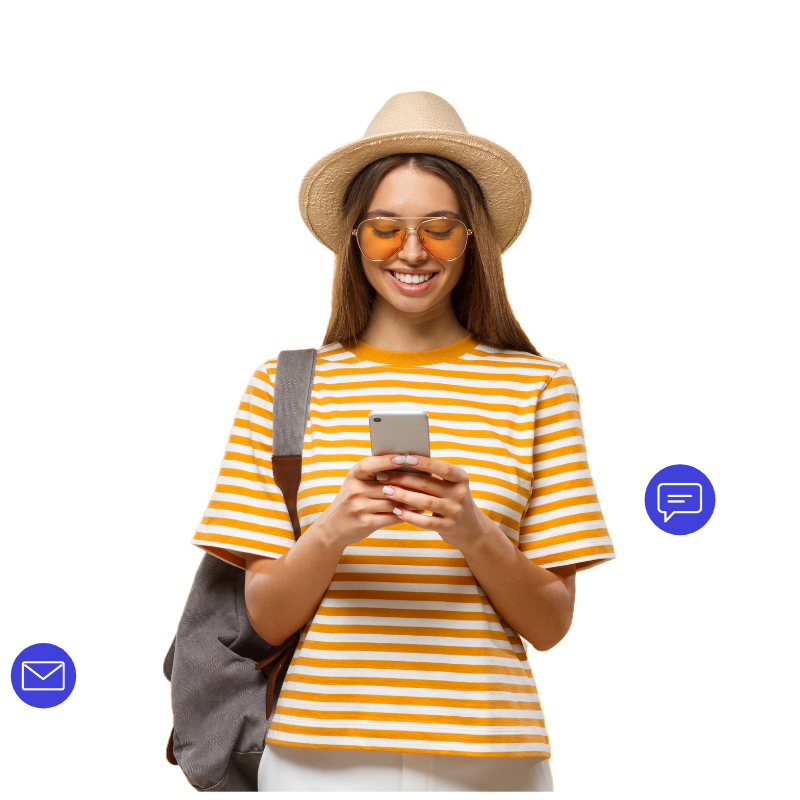
The importance of getting your marketing right in the travel sector is at an all-time high. Social media and influencers have helped make the world more visible than ever before. Consumers are turning to social channels as a source of inspiration. They’re hunting for the next trending destination and best travel deals.
On top of this, there has been a much-needed post-COVID travel boom. So-called ‘revenge holidays’ are in full swing and worldwide tourist arrivals are expected to reach up to 95% of pre-pandemic levels . It finally looks like things are getting back to normal and opportunities are everywhere.
But competition is growing. Standing out from the crowd is becoming increasingly difficult and keeping travelers engaged enough to complete the checkout process is a challenge.
At the same time, there are question marks over how long this travel boom will last. Staffing issues, the cost of fuel and energy, and uncertainty around the cost of living are causing concern for travelers and travel marketers alike.
In this ultimate guide, we will have a look at the current state of the travel marketing landscape and break down all the channels and tactics you need to utilize to succeed in the highly competitive sectorwere
- Travel marketing strategy
- Email marketing for travel marketers
- Segmentation strategies
- SMS marketing for travel brands
- Marketing automation programs
6. Web personalization for travel brands 7. Push notification marketing 8. Reporting and analytics 9. AI for travel marketing 10. Integrations for travel marketers
What is travel marketing and why is it important?
People are always dreaming of their next vacation, surely that means travel brands basically sell themselves, right?
Unfortunately, not. How brands market themselves is what makes travelers choose one resort and airline over another. Travel brands must promote and sell their products, services, and experiences to customers. You need to showcase the distinctive features of your destination, accommodation, leisure activities, and travel packages to spark interest and motivate bookings.
The travel industry is vast and continuously evolving. Some of the primary types of businesses that make up the industry include:
- Train operators
- Cruise liners
- Bus companies
- Car rental agencies
- Hotels and resorts
- Bed & breakfasts (B&B)
- Vacation rentals (e.g. Airbnb, VRBO)
- Camping and glamping sites
- Travel agencies (online and offline)
- Tour operators
- Online travel agencies (OTAs)
- Travel management companies (TMCs)
- Travel insurance providers
- Guided tours and sightseeing excursions
- Adventure activities and sports (e.g. skiing, scuba diving)
- Museums, galleries, and cultural centers
- Theme parks and amusement parks
- Restaurants, bars, and cafes
- National tourism boards
- Regional and state tourism offices
- City visitor bureaus
- Travel booking and comparison sites
- Mobile applications for travel planning and navigation
- Travel review and recommendation sites (e.g. TripAdvisor)
- Metasearch engines for flights, hotels, and car rentals (e.g. Kayak, Skyscanner)
Why is marketing in the travel industry important?
Marketing is an indispensable tool for travel brands. Without it, you would struggle to achieve your business goals. Effective marketing can help you attract more customers, increase your revenue, and establish a strong brand.
What are the benefits of travel marketing?
- Increased visibility: Marketing helps significantly to increase your brand’s exposure. This ensures that potential customers are aware of the travel services and experiences you offer and boosts overall visibility in the crowded marketplace.
- Customer acquisition: A well-executed marketing campaign attracts new customers by showcasing the value and unique aspects of your travel business, ultimately driving revenue growth.
- Improved customer retention: Marketing enables your travel brand to maintain long-term relationships with your existing customers by offering personalized and contextually relevant content and engaging with them consistently across channels.
- Enhanced customer loyalty: Including loyalty programs, exclusive offers, and personalized promotions in your marketing can build customer loyalty, leading to repeat business and higher customer lifetime value (CLV).
- Competitive advantage: Innovative and targeted marketing strategies can help your travel brand stand out from the competition, positioning you as a leader and providing an advantage in a highly competitive market.
- Increased revenue: Marketing can be used to generate upselling and cross-selling opportunities, increasing the average transaction value and ultimately resulting in higher revenue.
- Improved brand reputation: Using marketing, you can manage your online presence, customer reviews, and social media engagement. This positively influences your brand reputation, driving more business from potential customers who trust and value your brand.
- Informed decision-making: Leveraging data collected through your marketing activities for analysis and insights can help your business make informed decisions about product and service offerings, and marketing strategies, allowing you to optimize your efforts and boost performance.
- Expansion into new markets: Marketing can play a critical role in identifying new potential markets, demographics, and customer segments to target, enabling you to expand your reach and tap into new growth opportunities.
- Adaptability and resilience: Marketing enables you to react quickly to unpredictable events, market trends, and competitive moves, adapting your strategies to maintain customer engagement and drive bookings while ensuring resilience in the face of challenges.
Need to know marketing statistics for the travel industry
In today’s complicated and dynamic digital world, you must do all you can to understand the intricacies of the travel industry. Using these statistics, you will be able to get a bird’s eye view of global trends, customer behavior trends, and forces that are set to drive the multibillion-dollar industry forward in the years to come.
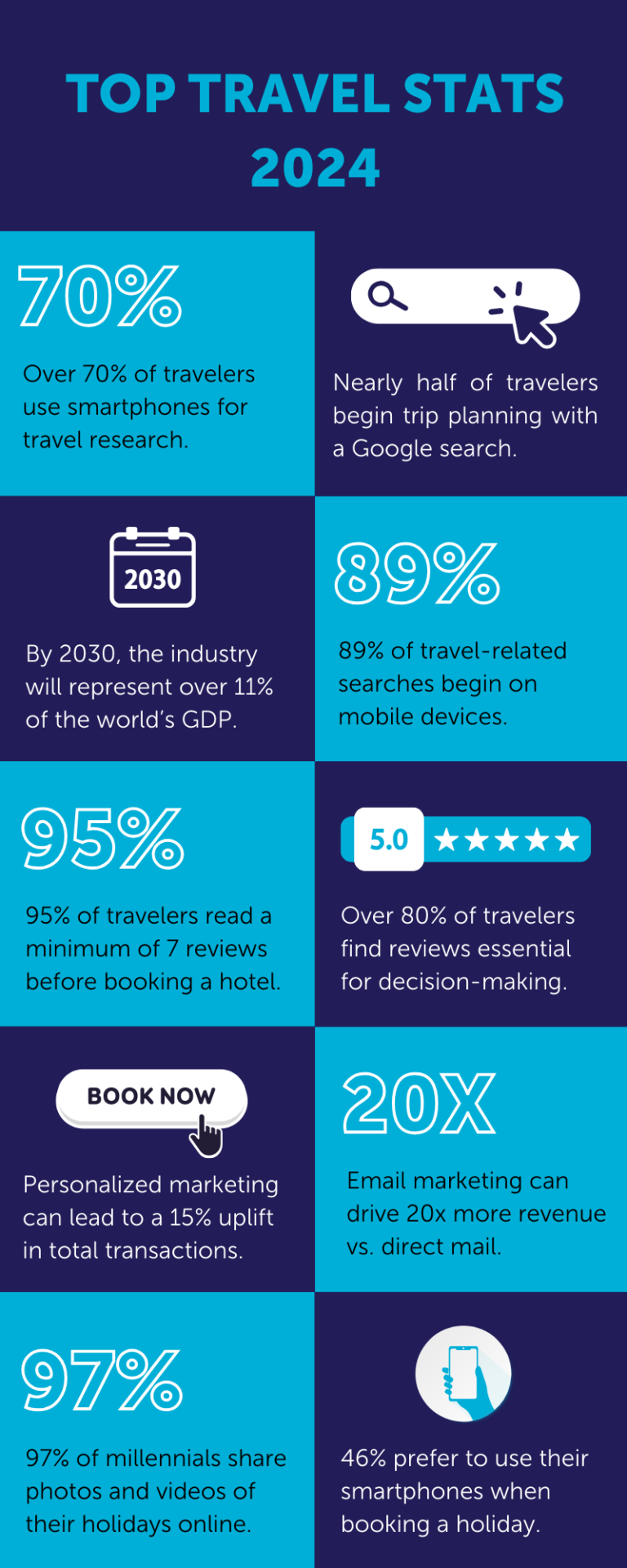
What are the challenges of travel marketing?
Despite economic uncertainty and the lasting impact of the pandemic, the travel industry is returning to pre-pandemic levels and enjoying steady growth.
Still, airlines, hotels, travel agencies, and other travel brands across the world are facing unique challenges that set you apart from typical marketing teams. In the ever-changing world of travel marketing, you have your hands full keeping up with the latest trends and technological advancements. Below are just a few of the top challenges you’re facing on an almost daily basis and how to overcome them.
With inflation in flux and travel expenses rising, travelers now consider price to be their top priority. To connect with your audience, you should emphasize low rates and demonstrate high value. Promoting discounts, bundles, and loyalty programs will appeal to budget-conscious consumers.
As remote work, digital engagement, and eco-consciousness continue to impact customer behaviors, you need to stay on top of trends to cater to emerging segments like bleisure (business and leisure) travelers. Data-centric platforms like Dotdigital plug into CRM systems and use machine learning can help brands understand these new customer groups.
With 86% of travelers seeking personalized experiences , you need to create tailored campaigns that resonate with your audience. Data collection and integration with CRM platforms are essential for delivering enjoyable, relevant, and personalized marketing experiences.
By understanding and following emerging travel trends, you can engage with audiences throughout the whole customer journey. You need to approach the journey holistically and create a cohesive experience across channels. Tools like single customer view (SCV) and eRFM will help you get a clearer view of travelers’ behavior.
To maintain your competitive edge, you must offer a seamless, efficient experience for customers, from booking to post-break feedback. You should tap into technology to adapt to market changes. Ensuring data quality and consolidation will help you reap the full benefits of new tech advancements.
To cater to your more environmentally-conscious travelers, you need to demonstrate a genuine commitment to sustainable practices. Avoiding greenwashing and adopting eco-friendly practices help you align your campaigns with customer values and support a greener future.
How to build a successful travel marketing strategy
Building a successful travel marketing strategy involves careful planning, targeting the right audience, and effectively leveraging your various marketing channels. Here’s a step-by-step guide to creating a winning travel marketing strategy:
Step 1: Define your target audience
Start by clearly defining your target audience. Conduct market research to determine their demographics, preferences, and behaviors. This will help you tailor your marketing materials to resonate with this specific group and achieve better results.
Step 2: Develop a strong brand identity
Create a memorable and eye-catching brand identity that encapsulates your company’s ethos and values. This includes your company name, logo, tagline, color scheme, and visual style. Consistency across all marketing channels reinforces brand recognition and establishes trust.
Step 3: Optimize your online presence
Create a user-friendly website that provides relevant information, showcases your offerings, and guides visitors to conversions (i.e. bookings or inquiries). Ensure your website has strong SEO to improve search engine ranking. Utilize social media platforms to engage with your audience and share valuable content.
Step 4: Leverage content marketing
Produce high-quality, informative, and engaging content that inspires travelers and provides value. This could include blog articles, videos, or destination guides. Diversifying your content not only keeps your audience interested but also addresses different stages of their customer journey.
Step 5: Monitor, analyze, and adapt
Implement analytics tools to track your marketing efforts and identify what works best. Monitor key performance indicators (KPIs) and adjust your strategy accordingly to optimize results. By continually learning from your data, you can make informed decisions and enhance your marketing effectiveness.
Boost growth with cutting-edge marketing technology
To enhance your visibility, captivate travelers, and boost bookings and inquiries, it’s essential to tap into the technology you have available. For peak success in the travel sector, you need technology that collaborates seamlessly with your existing tech solutions.
Dotdigital’s customer experience and data platform (CXDP) delivers an array of travel marketing tools and channels through a unified, all-encompassing platform. By maximizing your technology usage, you can elevate traveler engagement, increase bookings, and optimize your travel marketing initiatives.
Email marketing for travel marketers
Email marketing is a powerful tool for the travel industry, as it enables you to reach your target audience, build lasting relationships, and drive conversions.
In this section, we’ll explore the benefits of email marketing and the essential elements of successful email marketing for travel businesses, including creating targeted campaigns, utilizing data to send personalized content, and ensuring that emails are engaging and mobile-friendly.
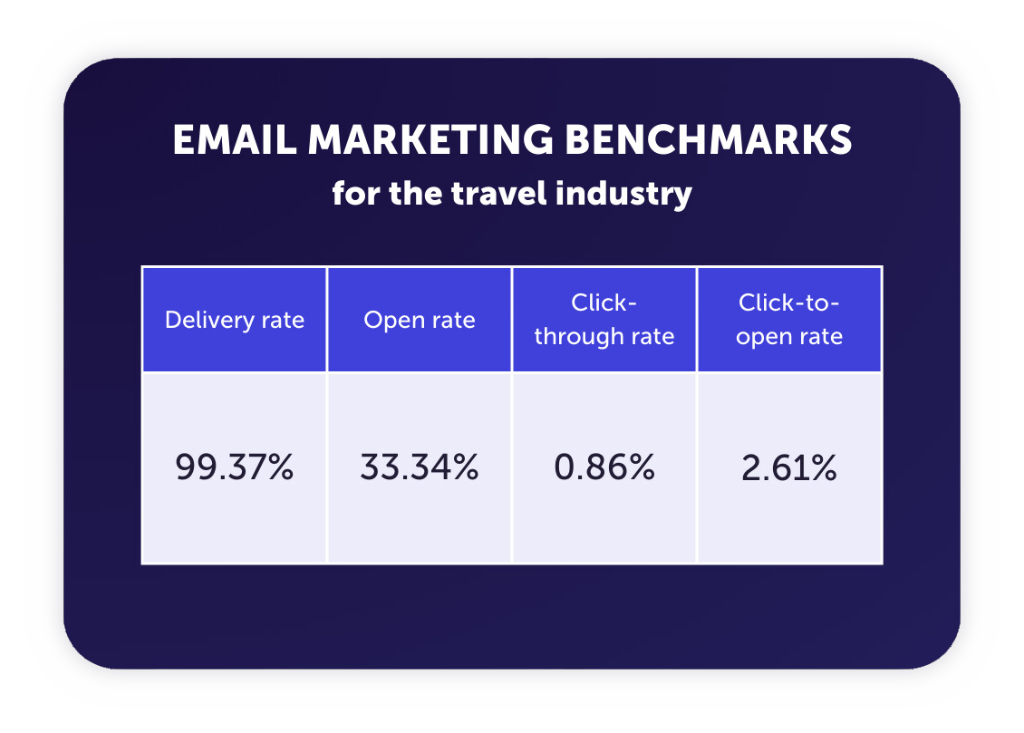
The benefits of email marketing for travel brands
Email marketing is an essential tool for marketers in the travel industry for several reasons:
1. Direct communication channel
Email marketing is a direct line of communication with your target audience, allowing you to share news, updates, offers, and content straight to subscribers’ inboxes, enhancing engagement and nurturing long-term relationships.
2. Strong ROI
Compared to other forms of marketing in the travel sector, email marketing is relatively inexpensive while maintaining a high return on investment (ROI). This makes it one of the best options for travel brands looking to reach large audiences or target specific segments without breaking the bank.
3. Personalization capabilities
Email marketing enables you to create perfectly personalized content and offers based on your subscriber’s demographics, preferences, and travel or engagement history. Ultimately, personalization leads to increased customer satisfaction and loyalty, as your audience feels catered to and valued by your brand.
4. Behavioral targeting
With email marketing campaigns, you can track various metrics such as open rates, click-through rates, and conversions, allowing a better understanding of travelers’ behaviors and preferences. This valuable information can be utilized to optimize future campaigns, ensuring better audience targeting and fostering long-term customer relationships.
5. Urgency and exclusivity
You can use email marketing to create a sense of urgency through time-sensitive offers, limited promotions, and exclusive deals, encouraging customers to book their travel or upgrade reservations.
6. Increased customer retention
By regularly sending informative content, helpful resources, and engaging promotions through email marketing campaigns, you will nurture customer loyalty and increase repeat bookings over time.
7. Relevance and timeliness
Email campaigns can be triggered based on specific events or customer actions, ensuring that the content is relevant and timely as per each individual’s needs. This could include sending reminder emails about upcoming trips or limited-time promotions resulting in better engagements and more conversions.
Email marketing best practice for travel marketers
Travel marketers can employ these best practices to create effective and engaging email campaigns:
Write catchy and enticing subject lines to increase open rates. Make your subject line relevant to the email’s content, and ensure it resonates with your target audience. Tap into the power of generative AI to really save time and improve results.
Personalize your email campaigns by using the recipient’s first name and providing recommendations, content, or offers based on their preferences, travel history, or demographics.
Divide your subscribers into targeted segments based on factors such as geographical location, interests, booking history, or language, and send tailored content that appeals to each segment’s unique attributes.
Embed high-quality images and videos of destinations, accommodations, or activities to inspire and evoke emotions, leading to higher engagement levels.
Make your CTAs clear, concise, and visually emphasized, directing subscribers toward the desired action, such as visiting a web page, booking a travel package, or redeeming special offers.
Ensure that your email template is mobile-friendly, with easy-to-read text and a clean layout, as a large portion of your audience will likely read your emails on mobile devices.
Aim to provide valuable, informative, and engaging content that relates to the interests and needs of your subscribers, building trust and fostering lasting customer relationships.
A/B test various elements of your emails, such as subject lines, send times, layout, or content, to determine what generates higher engagement and conversions. Continuously optimize your campaigns based on the insights gained from these tests.
Keep track of key email marketing metrics such as open rates, click-through rates, conversion rates, and unsubscribe rates to measure the effectiveness of your campaigns and identify areas for improvement.
Regularly review and clean your email list, removing inactive subscribers or outdated addresses to improve deliverability and maintain a high-quality mailing list.
Segmentation strategies for travel marketers
Segmentation is a crucial tactic for all marketers, but none more so than marketers in the travel sector. It involves dividing your target audience into distinct groups based on their preferences, demographics, or behaviors.
Implementing a segmentation strategy allows you to create highly targeted marketing campaigns that resonate better with each group, ultimately driving higher customer engagement and conversions.
Top five benefits of segmentation
1. targeted marketing messages.
Segmentation allows you to tailor your marketing messages and content to specific segments, resulting in greater relevance, customer engagement, and conversion rates.
2. Improved customer experience
Offering personalized content, recommendations, and offers based on segmentation fosters a better customer experience, deepening brand loyalty, and strengthening long-term relationships.
3. Resource allocation
By focusing marketing resources on specific customer segments, you can effectively allocate your budget, time, and efforts, ensuring maximum impact for your marketing activities. eRFM customer modeling will help you identify highly engaged, high-value customers to prioritize.
4. Increased ROI
Using segmentation, you can build tailored campaigns designed to appeal to different groups, resulting in higher response rates and, ultimately, an increased return on marketing investment.
5. Market insights
Segmentation provides insights into your customer preferences and behaviors, helping you identify new market opportunities, improvement areas, or trends that can inform marketing strategy.
Top tips for implementing a segmentation strategy
Collect customer data from various sources, such as website behavior, booking history, survey responses, third-party travel partners, and CRM systems, and unify them to build a comprehensive understanding of your audience.
Utilize Dotdigital’s advanced segmentation tools, including eRFM (engagement, recency, frequency, monetary) modeling and single customer view (SCV) data. These features allow you to achieve more precise targeting and improved insights into customer behavior.
Develop content and promotional offers that resonate with the specific needs, desires, and pain points of each segment. Personalized marketing messages have a higher chance of engaging and converting customers. Use the data collected from Dotdigital’s eRFM and SCV features to inform these strategies.
Ensure that appropriate marketing channels are used for each segment. Different customer groups may prefer email, SMS, or other channels, so align your strategy accordingly. Dotdigital’s customer insights will help you build a seamless cross-channel marketing plan.
Continuously test and analyze the performance of segmented campaigns. Monitor key metrics such as open rates, click-through rates, conversion rates, and CLV to identify areas for improvement. Adjust your segmentation approach and marketing strategies based on these data-driven insights.
Customer preferences and behaviors change over time. Periodically reassess your segments, refresh your data, and leverage updated customer insights to ensure your marketing efforts remain relevant and effective.
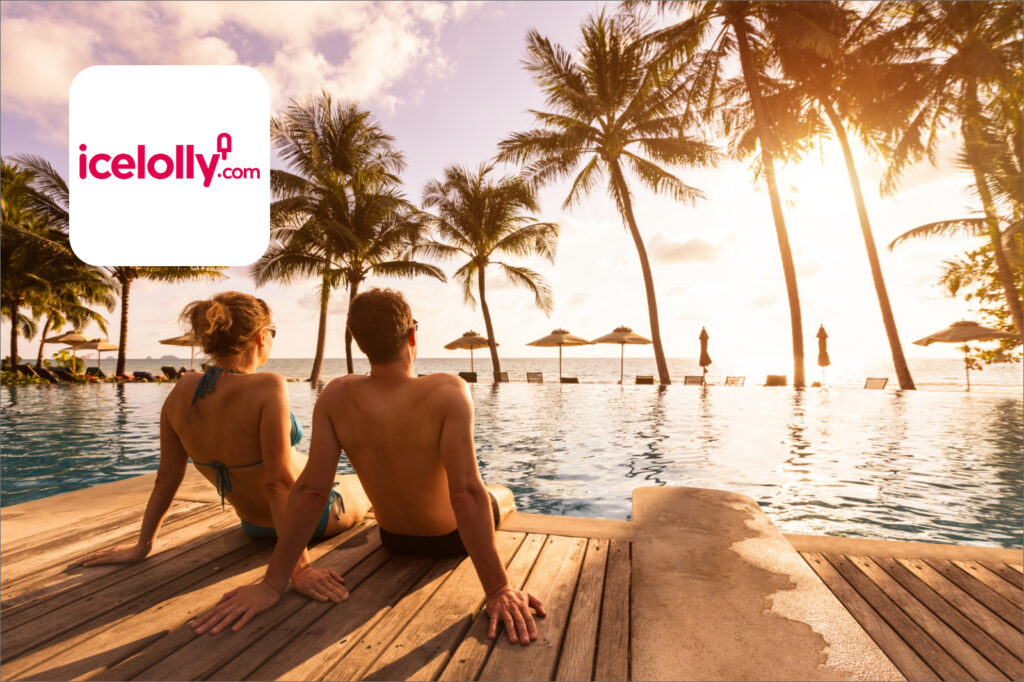
Successful customer re-targeting
Discover how the holiday comparison site, Icelolly boosted conversion rates and enhanced its email marketing performance with personalized re-targeted marketing.
SMS marketing in the travel industry
SMS marketing is a powerful and often underutilized marketing channel that can boost engagement and provide exceptional value for travel businesses like yours. As a direct and immediate form of communication, SMS marketing can help you reach customers in ways other channels might not.
Benefits of SMS marketing for travel marketers
1. high open rates.
SMS messages have an exceptional open rate, with most recipients reading the message within minutes of receiving it. This ensures that promotional offers, updates, or reminders are seen by the vast majority of your target audience.
2. Real-time communication
SMS provides real-time, immediate communication that allows you to send time-sensitive offers, last-minute deals, or critical travel updates to your customers.
3. Mobile accessibility
With the vast majority of the population carrying mobile devices, SMS marketing provides an efficient way to reach your customers regardless of their location or internet access.
4. Cost-effective
SMS marketing campaigns are easy to set up and cheaper than most other marketing channels. This means you can effectively reach your target audience, even on a budget.
5. Personalized experiences
SMS campaigns can be tailored to individual users based on their preferences, interests, or travel history, creating a more personalized and engaging experience for your customers.
6. Easy integration with other marketing channels
SMS marketing can be easily combined with other channels such as email, app, or social media, to create a comprehensive and cohesive marketing campaign for your travel brand.
How to integrate SMS into your travel marketing
By adopting SMS marketing, your travel business can unlock new avenues of customer engagement and diversify your overall marketing efforts, ultimately boosting bookings and customer satisfaction. Here are some campaign ideas that can be implemented through SMS marketing:
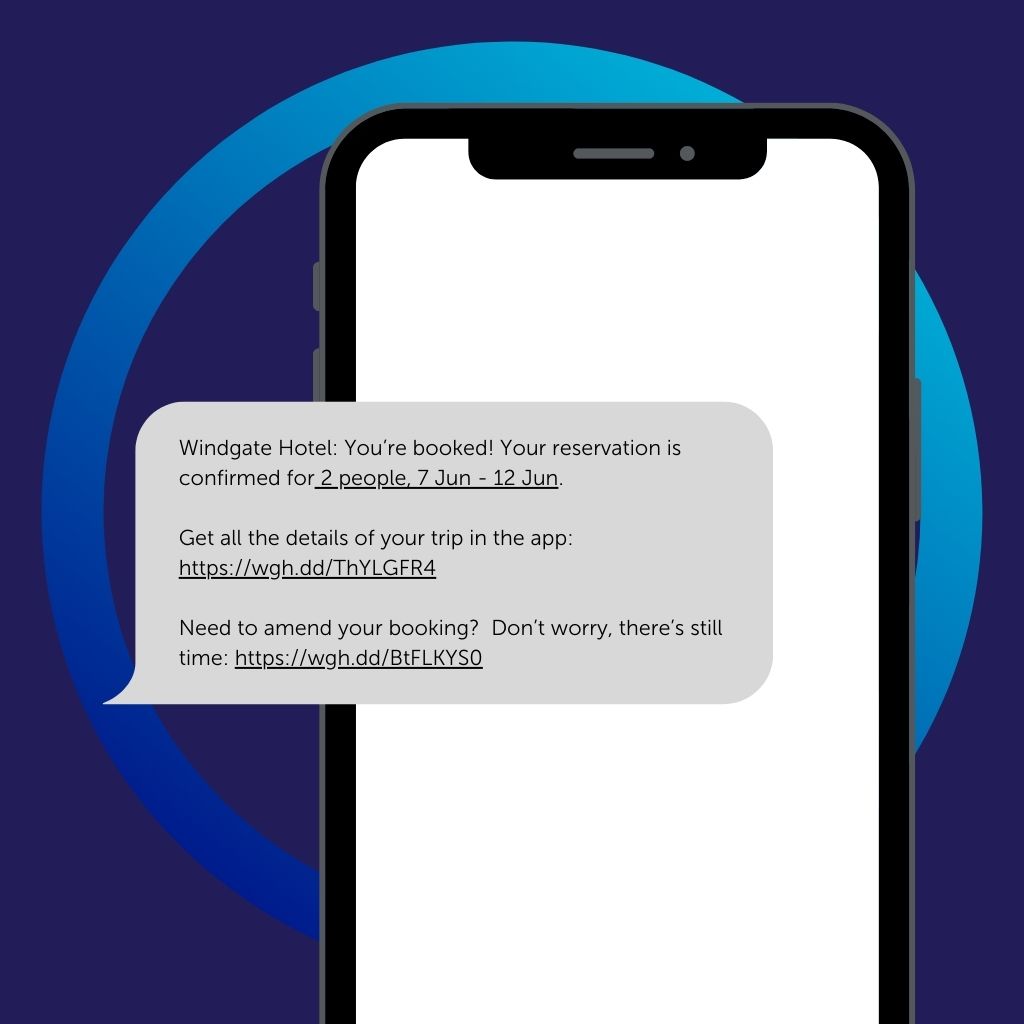
Send helpful reminders for upcoming trips, pre-travel checklists, departure times, locations, or travel document requirements.
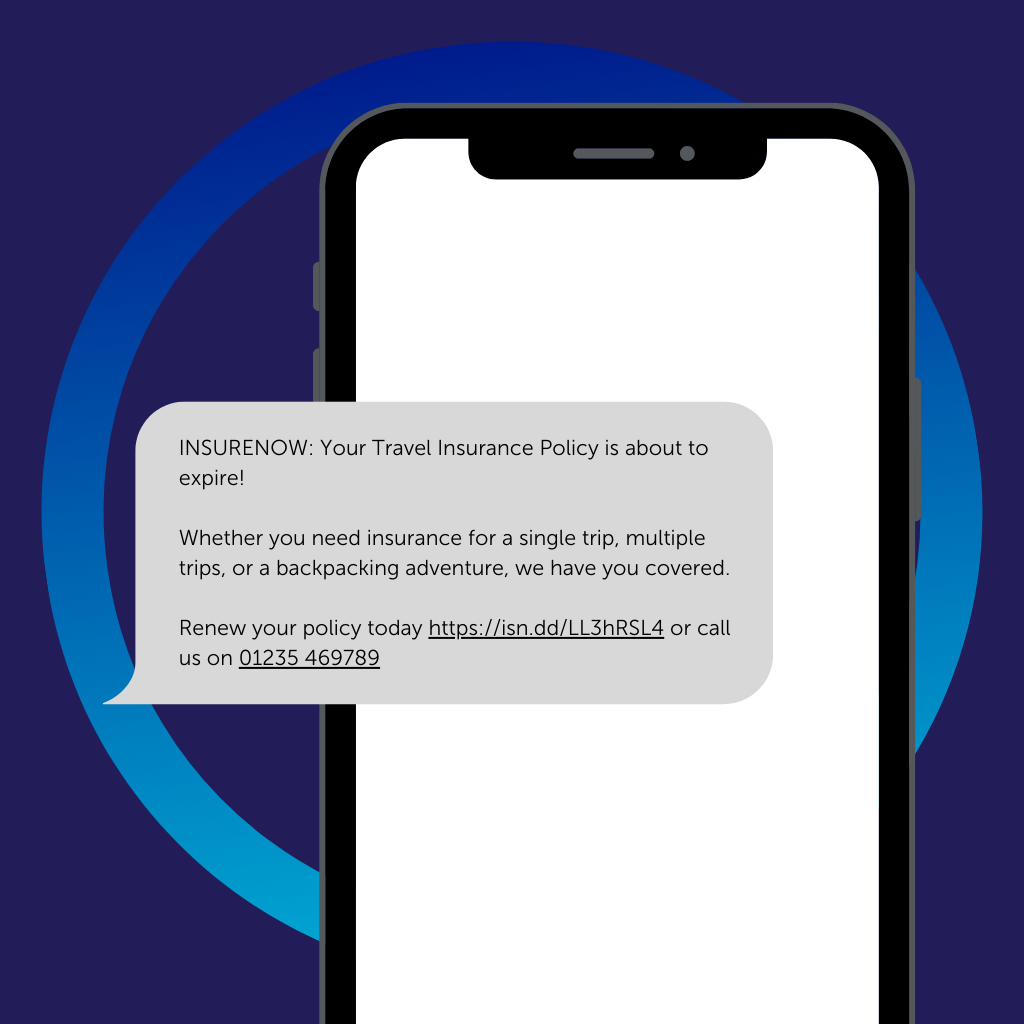
Share essential real-time updates like flight delays, gate changes, or itinerary adjustments, ensuring customers are well-informed and prepared. Ultimately, this will lead to higher satisfaction and experience overall.

Send exclusive deals, discounts, limited-time offers, or last-minute specials to encourage customers to book travel or secure a service through your business.
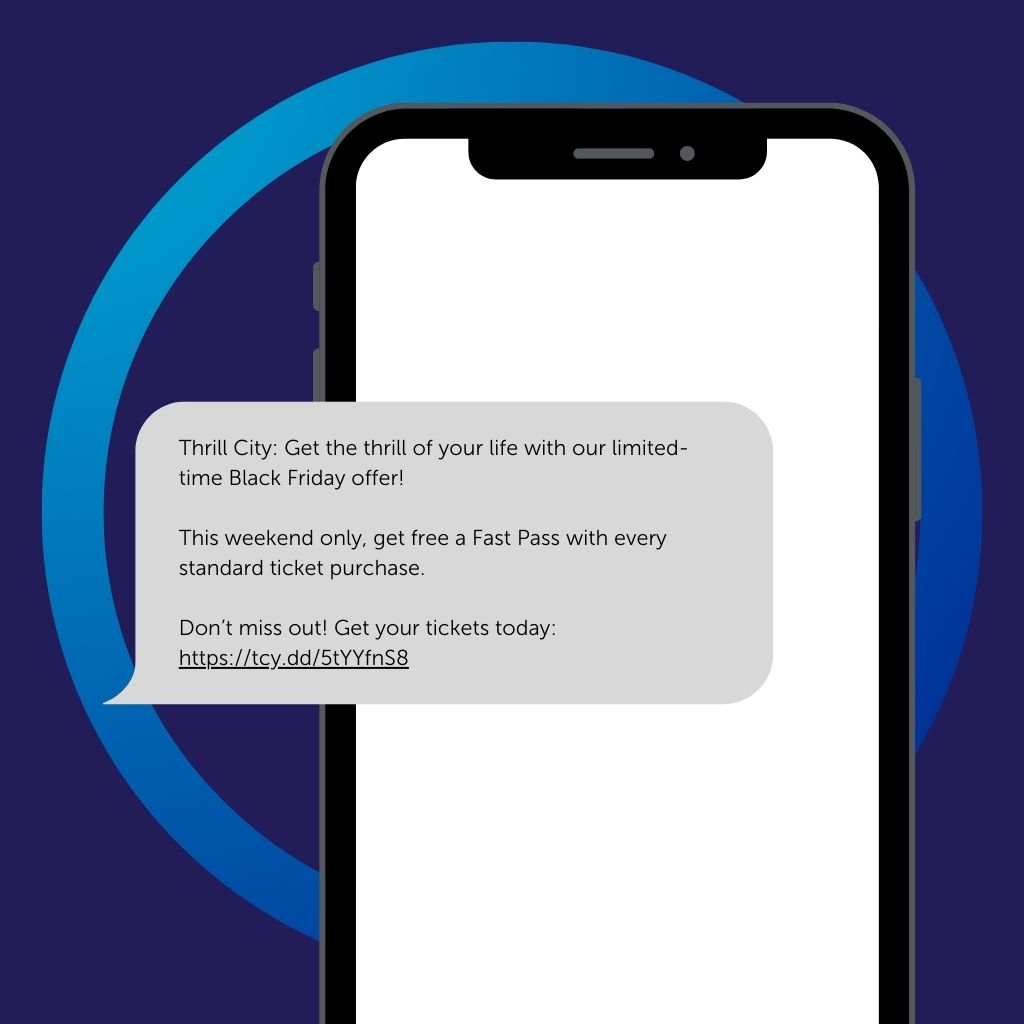
Remind customers about travel packages, accommodation options, or services they were considering but have not completed the booking process.
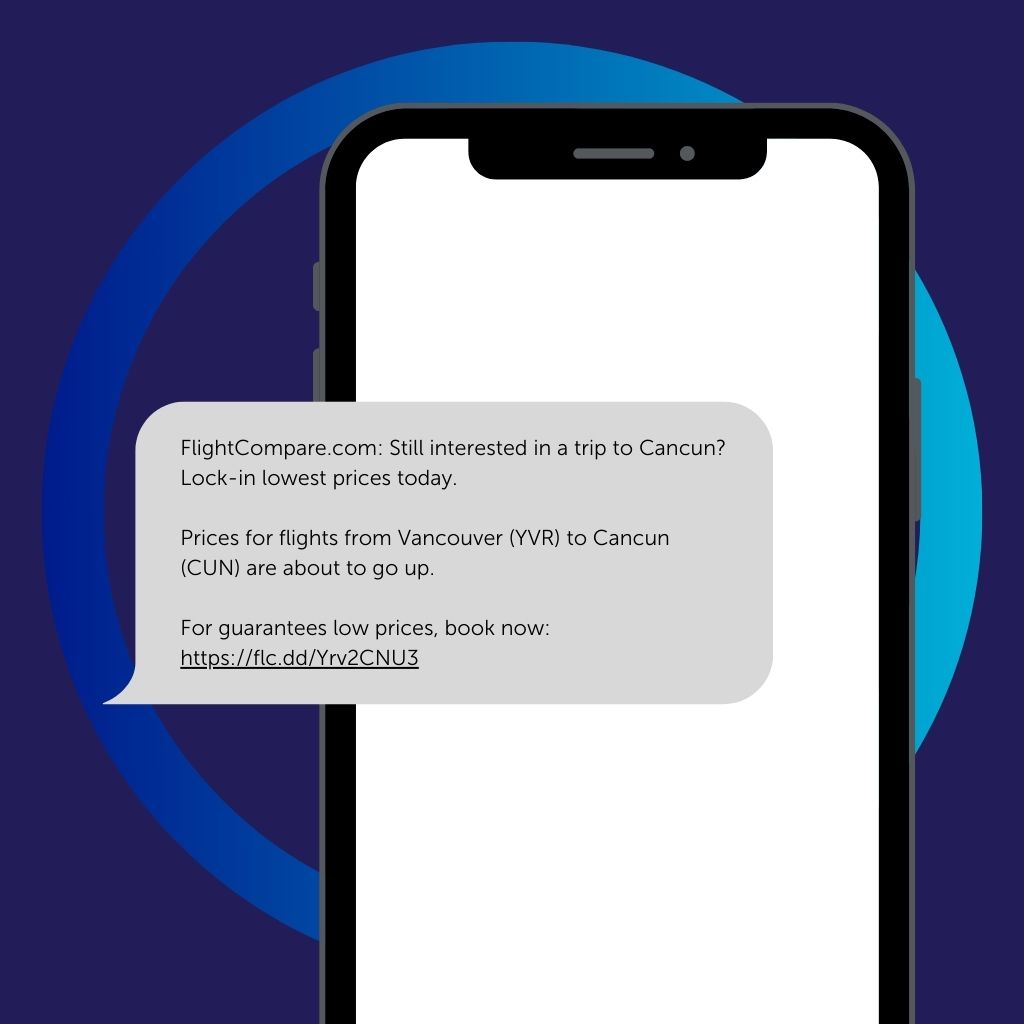
Suggest relevant add-ons or upgrades to customers based on their travel plans, such as excursions, activity bookings, premium seating, or transportation options.
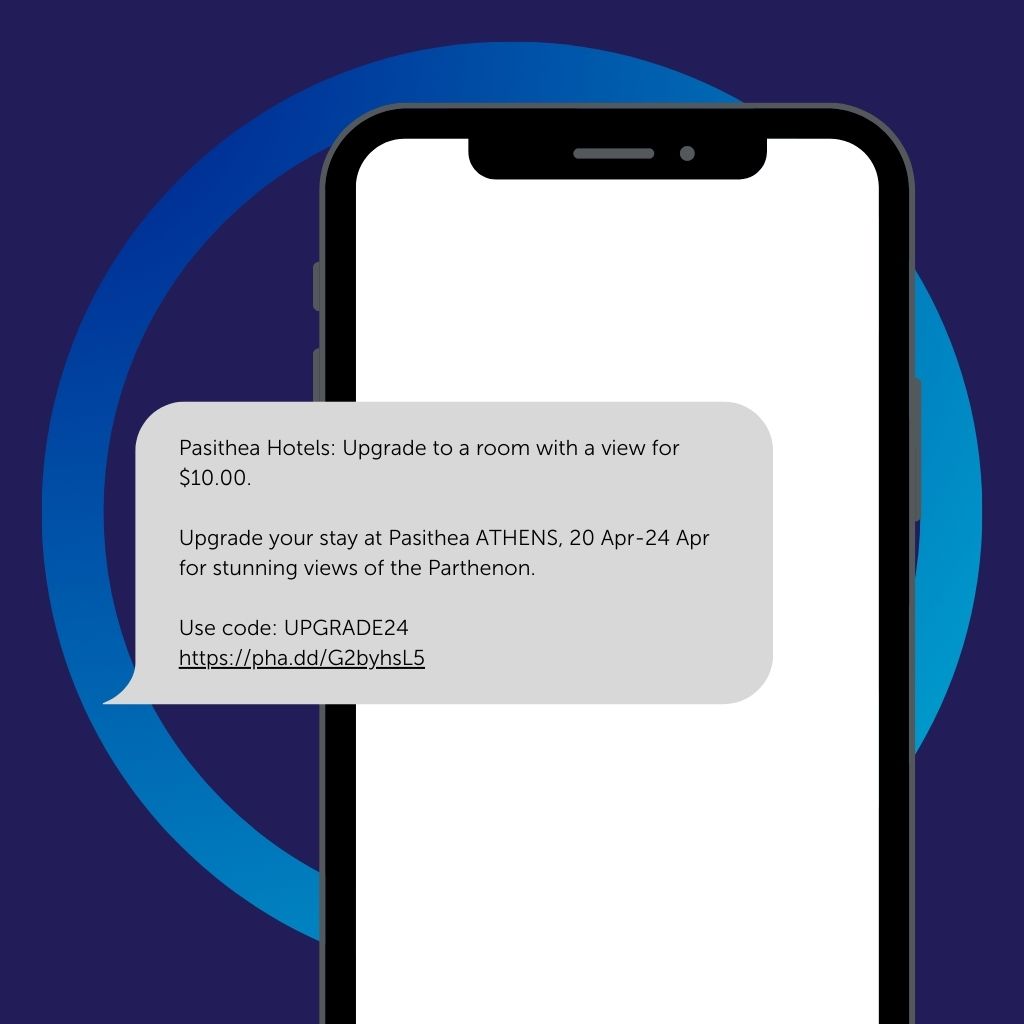
Request post-trip feedback, ratings, or reviews through an SMS message, using the insights to improve your services and customer satisfaction. SMS is a great channel for this because it requires little lift from your team and has a high completion rate.
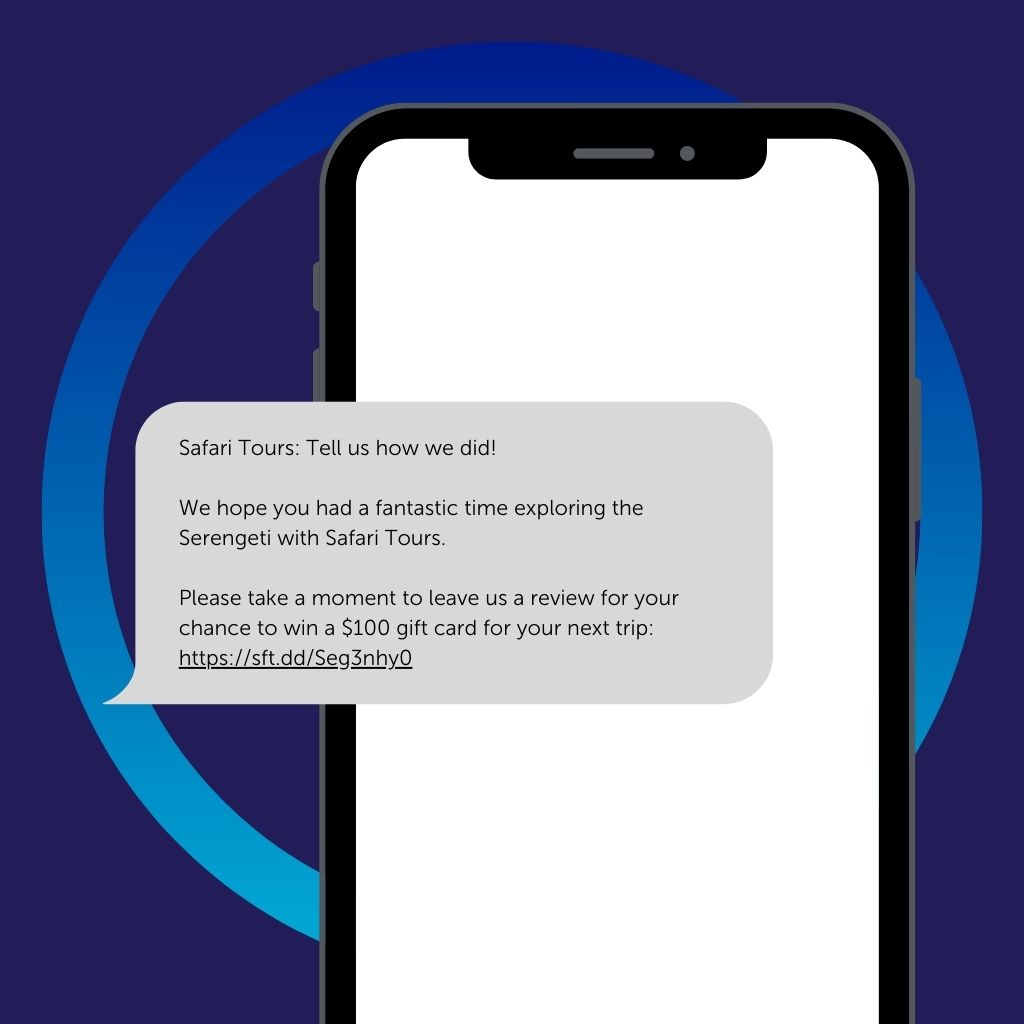
Notify customers of their rewards or loyalty points balance and inform them of any opportunities to earn additional points or redeem special offers.
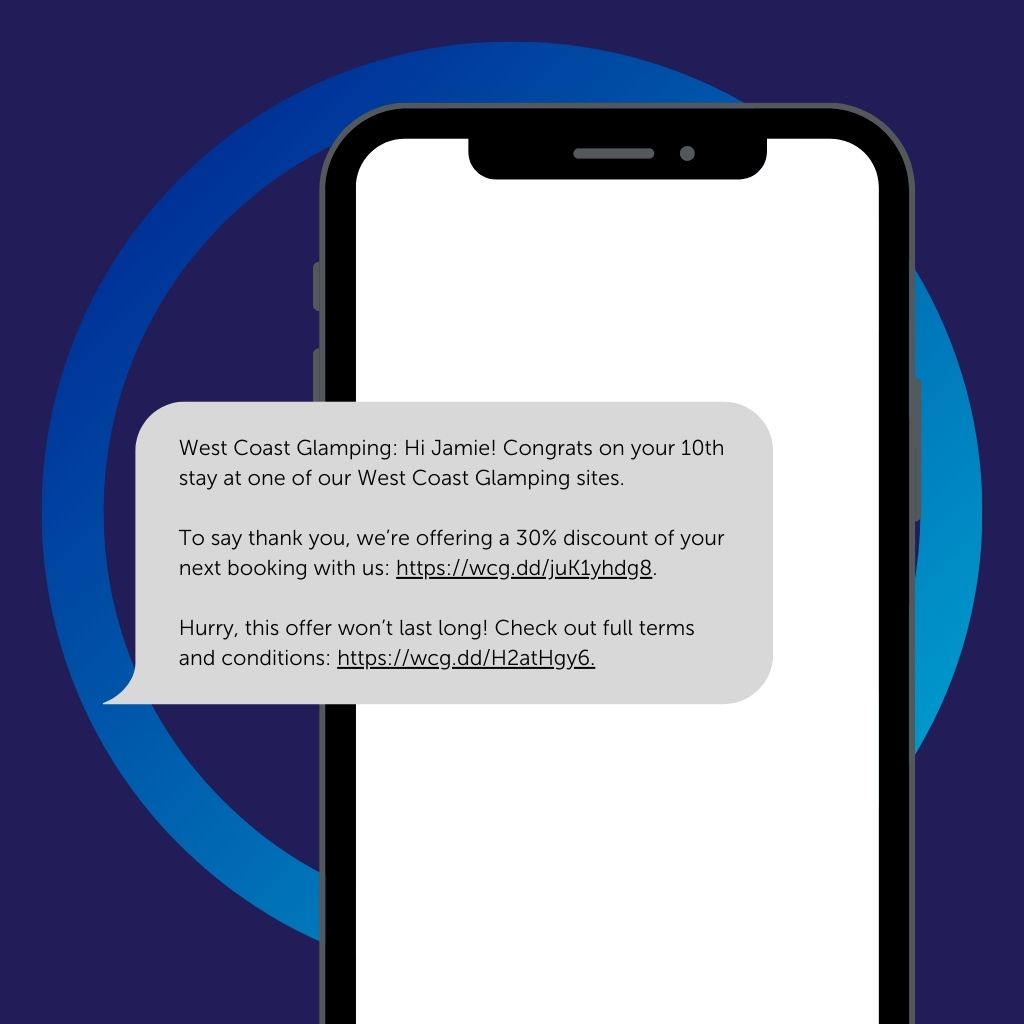
Share useful destination-based information, such as local attractions, events, dining options, or safety tips, to enhance your customers’ travel experiences.
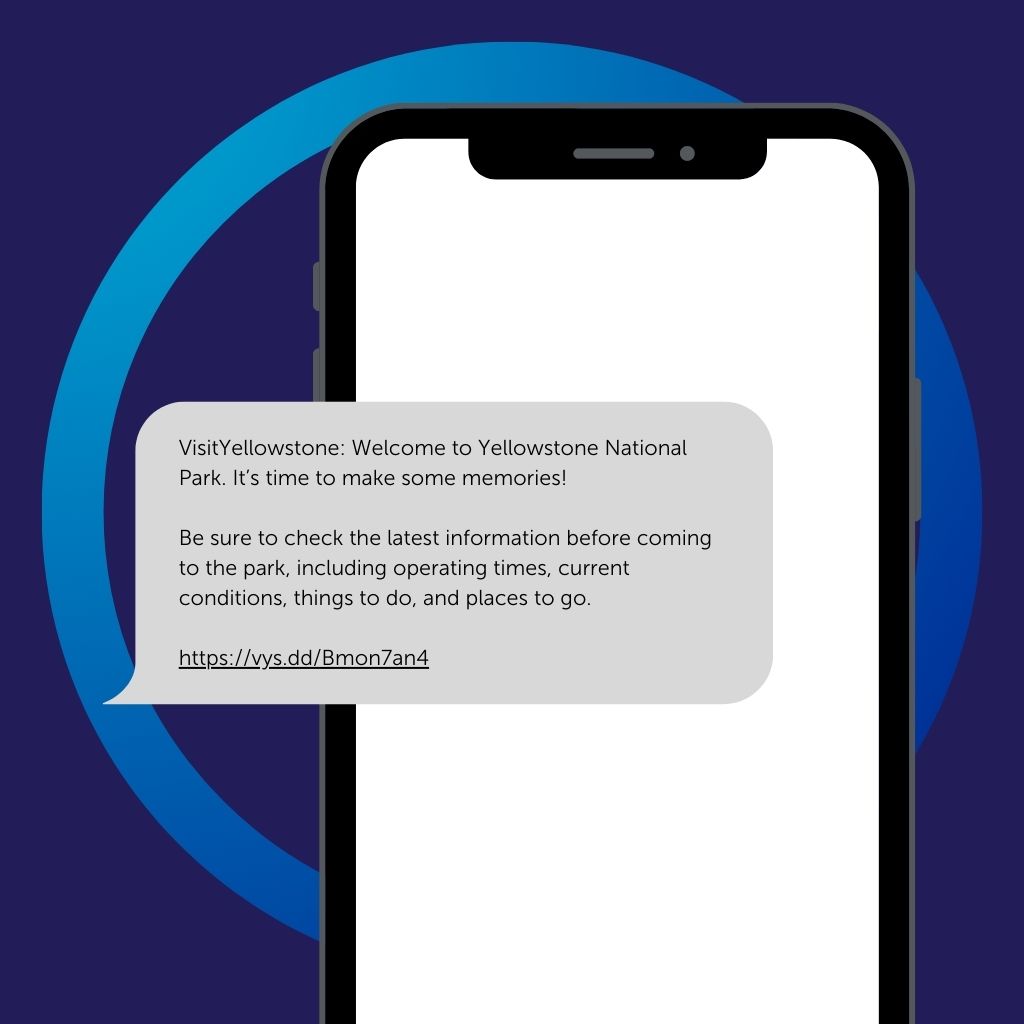
Top tips for successfully incorporating SMS into your travel marketing campaigns
- Combine SMS with email marketing Integrate SMS marketing into your existing email marketing strategy, sending important alerts, reminders, or limited-time offers through SMS to complement your email marketing activity.
- Segment your audience Create targeted SMS campaigns based on demographics, geographic location, or travel preferences, ensuring that your messages resonate with subscribers and are relevant to their needs in the moment.
- Personalize messages Deliver tailored content and offers based on customers’ booking history, travel destinations, or preferences, creating a sense of exclusivity and personal connection.
- Use automation Use customer actions to trigger SMS marketing campaigns, such as booking confirmation, travel reminders, or payment due notices. This will ensure your text messages are landing at the best time to drive customer conversions.
- Keep messages concise Deliver the key message or the call-to-action within the constraints of the character limit. Stay concise, and focused, and ensure your message is easy to understand. Tap into AI tools to help.
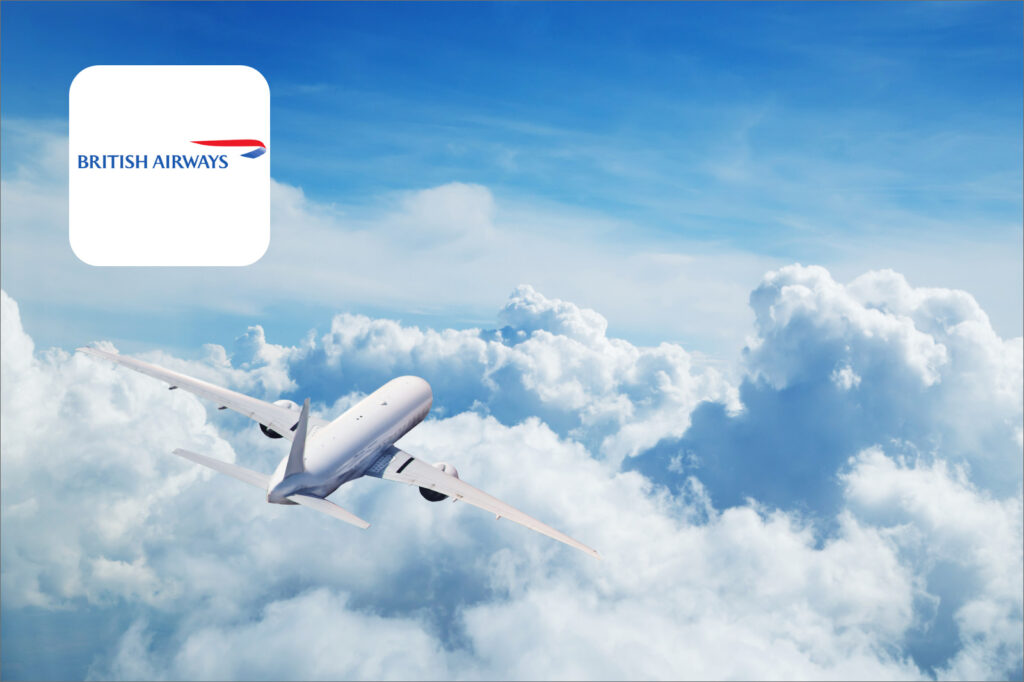
Using SMS for two-way communications
Discover how British Airways used Dotdigital’s two-way SMS functionality to encourage travelers to complete monthly customer satisfaction surveys.
MMS for travel marketing campaigns
MMS (multimedia messaging service) is a branch of SMS marketing that allows the sending of multimedia content, such as images, videos, and audio files, alongside text messages. It presents new and exciting opportunities to engage customers in a more dynamic and visually appealing way.
MMS allows you to send rich visual content, including high-quality images and videos that showcase destinations, accommodations, or activities. This allows customers to get a better sense of the travel experience being offered and will inspire them to book.
Multimedia messages, including images and videos, have higher engagement rates compared to simple text messages. By leveraging MMS, you can evoke stronger emotional responses and drive customer interest, resulting in increased conversions and bookings.
MMS helps you to create immersive narratives by sharing pictures, videos, or audio clips of real travel experiences. This storytelling approach can help build a connection with potential travelers, increasing the likelihood of them engaging with your brand.
MMS can be customized based on individual preferences, interests, or travel history. By sending personalized multimedia content to customers, you can create a more relevant and memorable connection, ultimately fostering brand loyalty.
Although MMS adoption is growing, many businesses still primarily rely on text-based marketing. By being an early adopter of MMS, you can differentiate yourself from competitors and establish a unique brand identity in the minds of consumers.
MMS works well in conjunction with SMS, email, and social media campaigns. Integrating MMS into your overall marketing strategy can help create a comprehensive and cohesive approach that covers different stages of the customer journey.
Marketing automation for travel marketers
Marketing automation streamlines and optimizes repetitive marketing tasks, leading to enhanced efficiency, reduced manual efforts, and improved results. Intelligent marketing automation tools like Dotdigital create conversion-driving, loyalty-inspiring experiences by tapping into customer data and turning it into real-time marketing campaigns.
Benefits of marketing automation for travel brands
1. time-saving and cost-efficiency.
Marketing automation significantly reduces manual tasks associated with campaign management and customer segmentation, freeing up time for you and your teams to focus on strategic tasks, such as content creation and performance analysis.
2. Seamless communication
Marketing automation ensures regularly scheduled and consistent communication with customers across different channels. This is essential for maintaining customer engagement and building long-term brand loyalty.
3. Personalization
By tracking customers’ actions, preferences, and booking history, marketing automation tools help you deliver personalized and relevant content that resonates with your target audience. This moments-based approach to marketing enhances the overall customer experience, improving ROI, average order value (AOV), and customer lifetime value (CLV).
4. Cross-channel campaign management
Marketing automation platforms help you manage and coordinate campaigns across various channels, such as email, SMS, social media, and web push notifications, ensuring a seamless and cohesive marketing strategy.
5. Data-driven insights
With the help of detailed analytics provided by Dotdigital, you can make data-driven decisions, monitor campaign performance, and optimize your strategies for maximum results.
Essential automation programs for travel brands
Set up automated welcome emails or messages for new subscribers, providing an initial introduction to your brand, exclusive offers, and personalized travel recommendations based on their preferences.
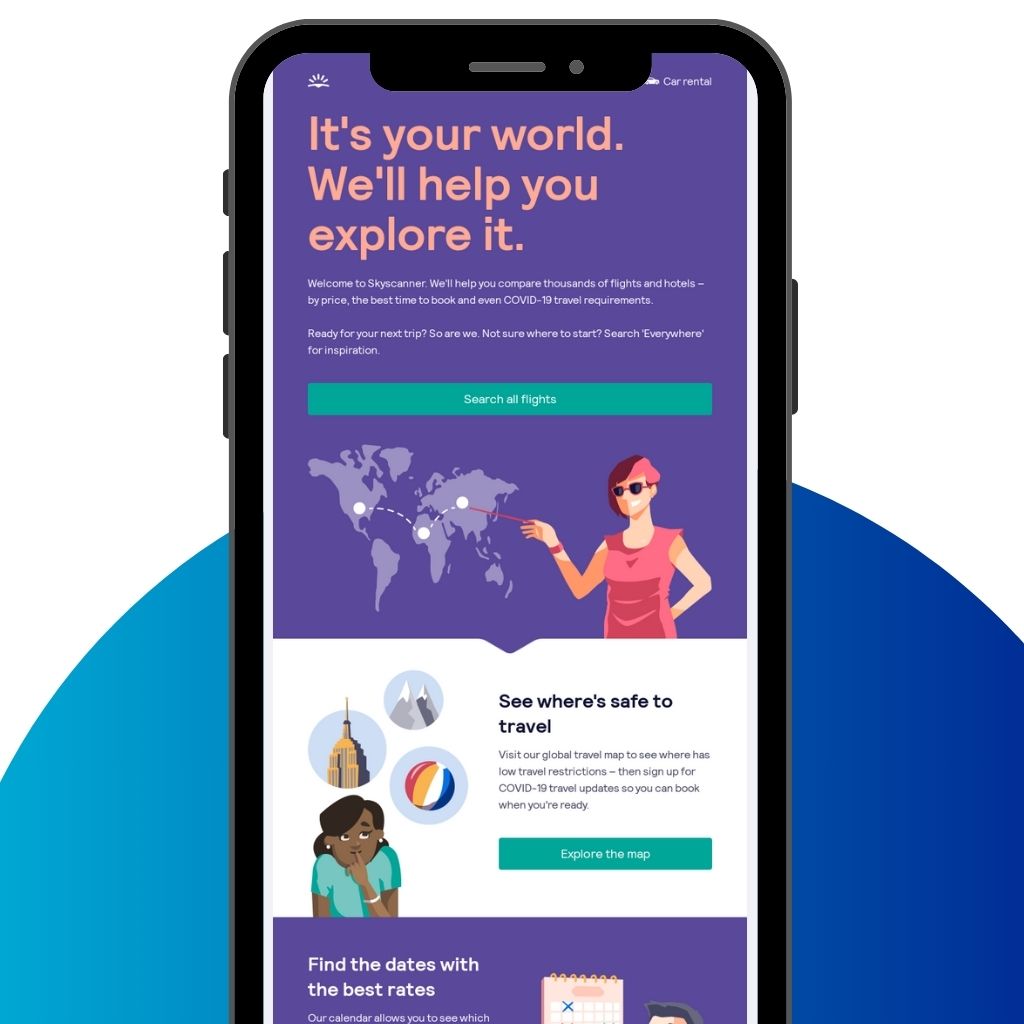
Automate booking confirmations, reservation details, and pre-travel reminders, ensuring all necessary information reaches the customer on time. This can include flight check-in reminders, pre-trip preparation tips, and travel documentation requirements.
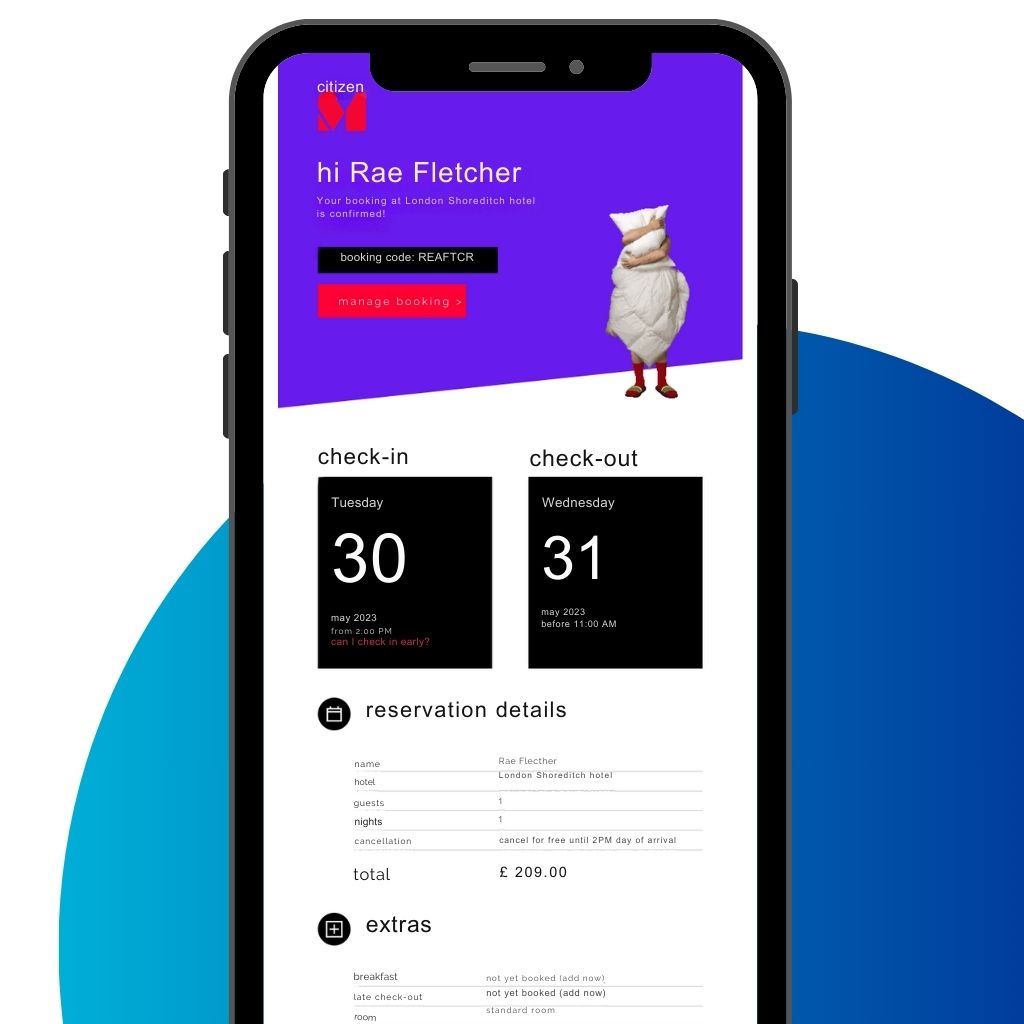
Implement automated messages for customers who added travel packages or services to their cart but didn’t complete the booking process. These messages can include personalized incentives or offers to encourage conversion, AI-powered recommendations, or exclusive discounts for high-value customers.
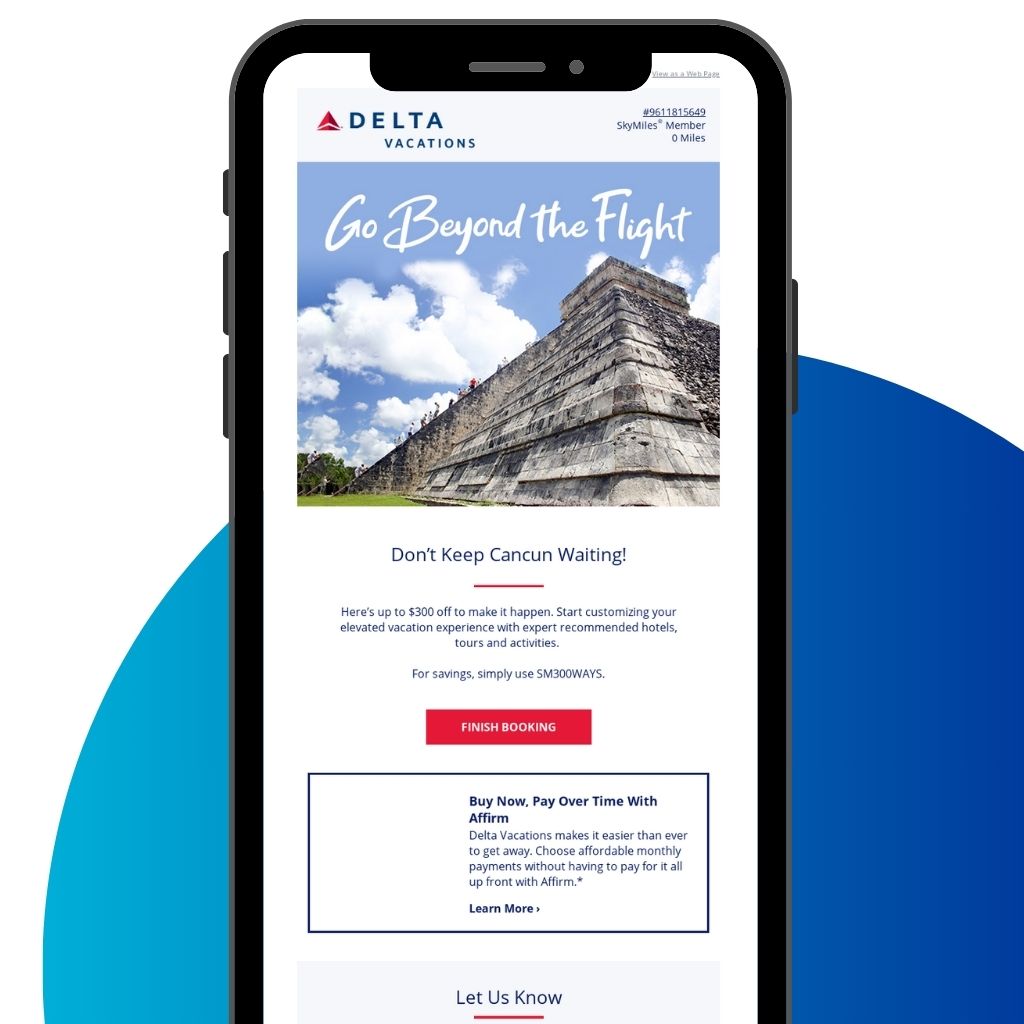
Build automated re-engagement or nurture campaigns to connect with inactive or lapsed customers, offering relevant travel deals or content that sparks renewed interest in your brand. Use eRFM to identify these customers and SCV to gain insight into the channels and content that will drive them toward conversions.
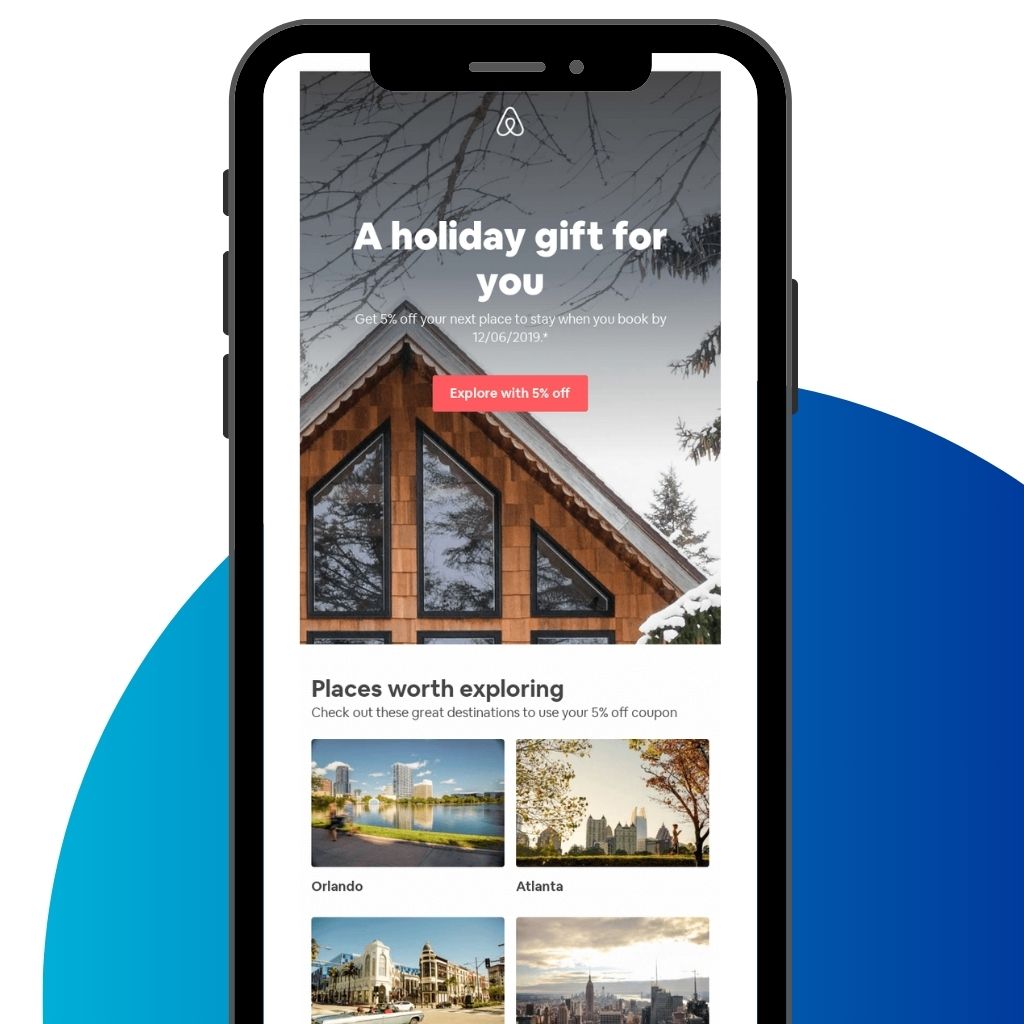
Loyalty programs are a big motivating factor in the decision-making process of modern travelers. Automate loyalty program updates, notifications, or special offers to reward repeat customers and enhance long-term brand loyalty.
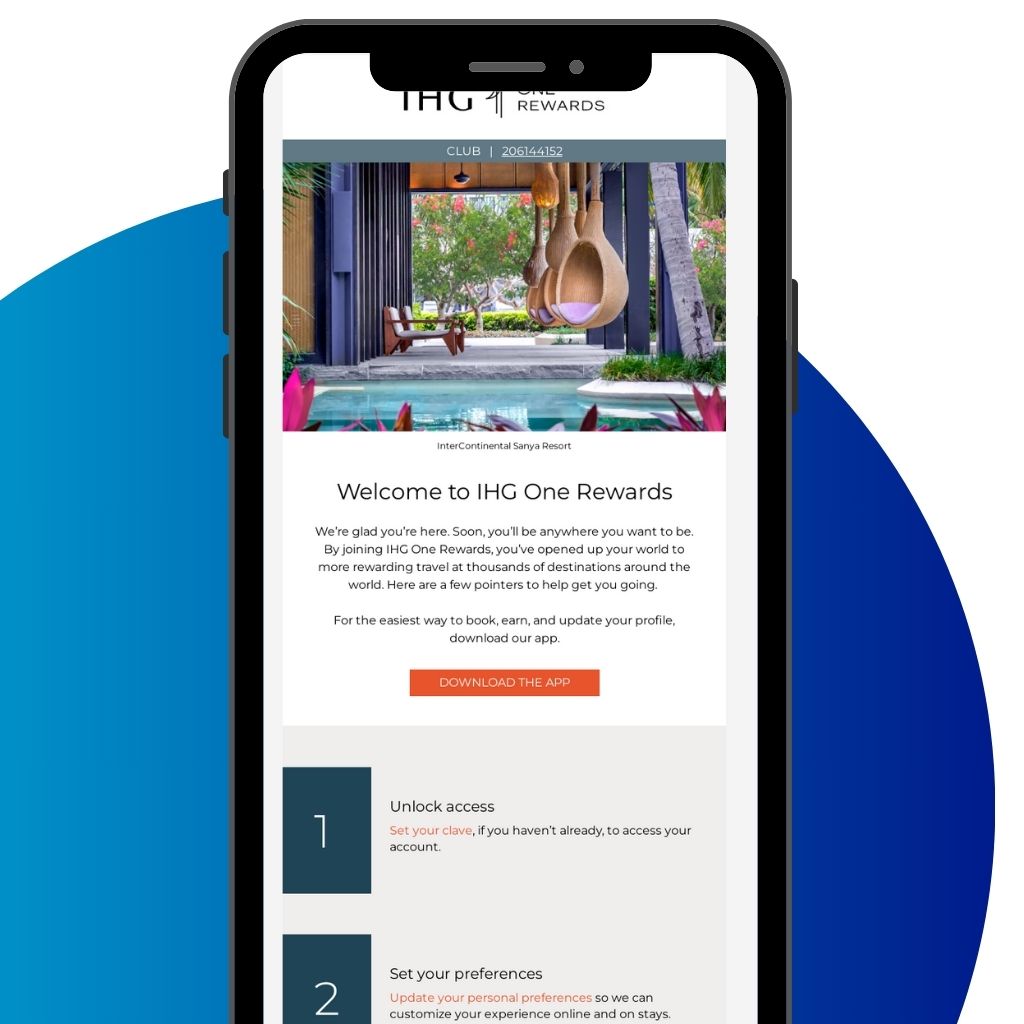
Automate post-trip feedback requests, analyze customer experiences, and collect valuable insights to inform improvements in your offerings and services. Positive reviews also make great marketing collateral so the importance of this program must not be underestimated.
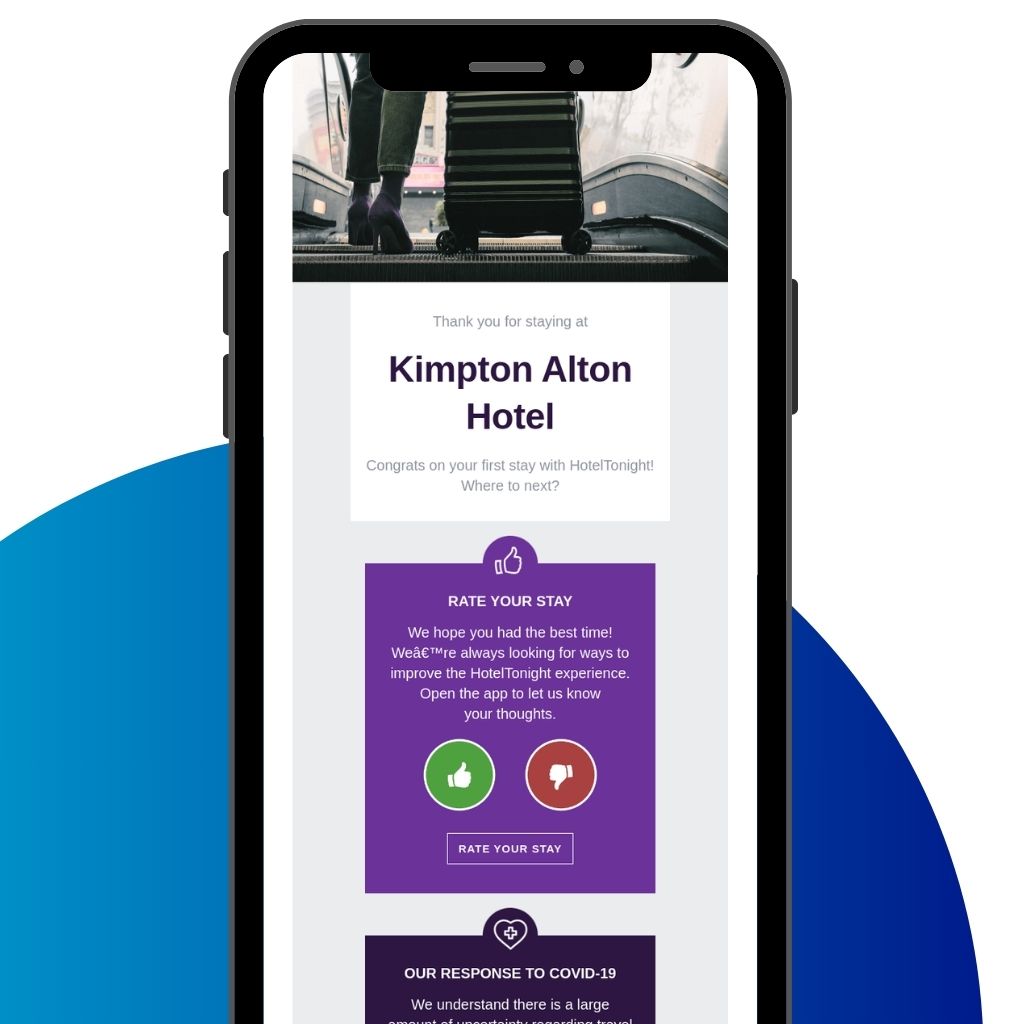
Schedule automated campaigns centered around holidays, seasonal offers, or special events, targeting customers with relevant deals and packages. Use customer insights to see when customers are most engaged or typically looking at your website to identify essential times to launch annual offers.
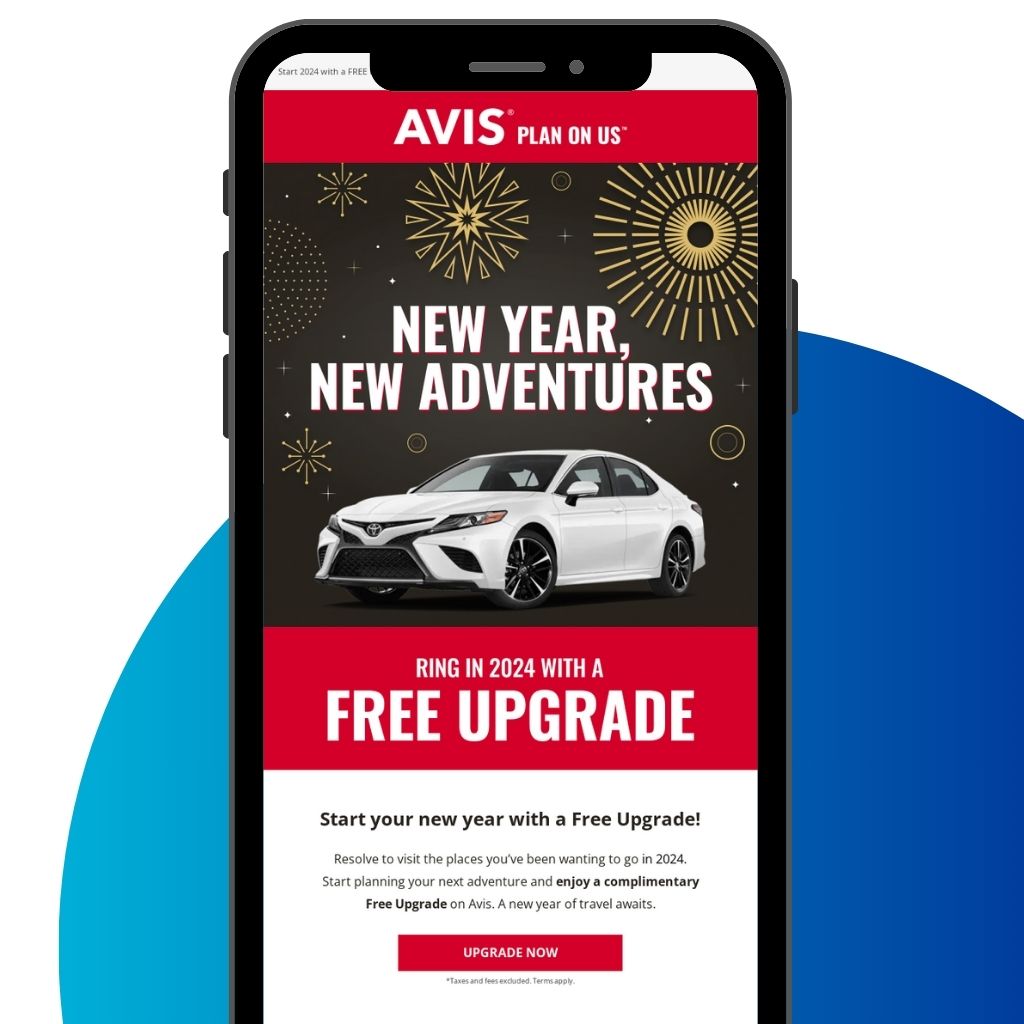
By understanding the benefits of marketing automation and implementing these recommended automation programs, you can streamline your marketing efforts, engage customers across multiple touchpoints, and enhance the overall customer experience while driving revenue and brand loyalty.
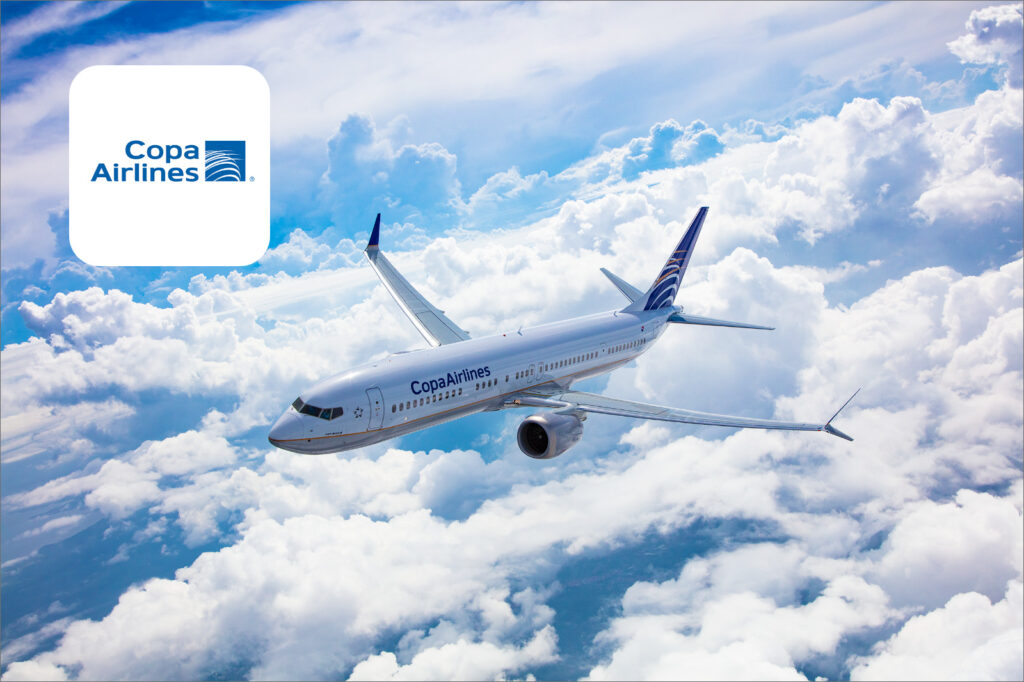
Marketing automation in action
Discover how international flight operator, Copa Airlines used Dotdigital to streamline its automated marketing communications to deliver a significant increase in revenue.
Web personalization for travel marketing teams
Web personalization involves tailoring website content to individual visitors based on their preferences, behavior, and demographic data.
In the travel industry, web personalization offers significant benefits and opportunities for enhancing customer engagement and boosting conversion rates. In this section, we’ll discuss the advantages of web personalization for travel marketers and provide strategies to create personalized online experiences.
Benefits of web personalization for travel marketers
1. enhanced customer engagement.
Personalized content and offers on your website can capture users’ attention and create a positive, engaging experience, increasing the likelihood of bookings and purchases.
2. Improved relevance
By addressing customers’ preferences and needs, web personalization ensures that your website’s content remains relevant and tailored to each user, making your brand more appealing to potential customers.
3. Increased conversion rates
Personalized content, offers, and recommendations can lead to an increase in customers taking action, whether booking a trip, subscribing to newsletters, or requesting more information.
4. Reduced bounce rates
An engaging and personalized website encourages visitors to spend more time exploring your offerings, reducing bounce rates and increasing the chances of customer conversions.
5. Improved ROI
By delivering personalized content and experiences to specific segments, web personalization can result in better use of marketing resources and a higher return on investment.
Strategies for personalizing web experiences
Show customers recommended travel destinations, offers, or services based on their current location, accounting for local events or geographic preferences.
Leverage customer behavior, such as browsing habits, pages visited, or previous booking history, to deliver personalized content, deals, or recommendations.
Divide your website visitors into specific segments based on demographics, interests, or travel preferences, and tailor website content to cater to these segments.
Implement exit intent pop-overs with tailored, last-minute offers or incentives that persuade visitors to book, subscribe, or engage further with your brand before leaving the website.
Use dynamic content that adapts based on user interactions, website behavior, or previous travel bookings, recommending related destinations, accommodations, or activities.
Employ remarketing campaigns that display personalized ads to users who have previously visited your website, featuring customized offers, messages, or promotions.
Integrate AI-driven recommendations into your website, providing visitors with personalized travel options across your homepage, product, and service pages.
Create dedicated, personalized landing pages for various promotions or travel offers based on customer segments, increasing the chances of conversions and bookings.
Push notification marketing for travel brands
Push notification marketing is a powerful tool for brands operating in the travel industry. It allows you to engage with customers directly through real-time, targeted, moments-based messages delivered directly to users’ mobile devices or web browsers.
Benefits of using push notifications in your travel marketing
1. increased engagement.
Push notifications give you new opportunities to re-engage customers by sending personalized promotions, announcements, and reminders. Ultimately, this enhances customer interactions and brand connection.
Timely and relevant notifications help you to communicate instantly with users, facilitating real-time updates on special deals, flight status, itinerary changes, or exclusive offers.
3. Higher conversion rates
By delivering tailored offers and targeted content, push notifications can increase conversion rates, driving bookings and encouraging customers to take action.
4. Improved user experience
Push notifications can enhance the user experience by offering personalized recommendations, location-based offers, and immediate assistance, fostering a stronger bond between customers and your brand.
5. Trackable performance metrics
Push notifications offer valuable performance insights, such as open rates, click-through rates, and conversion rates, helping you optimize campaigns and improve future marketing efforts.
Reporting and analytics for travel marketers
For marketers in the travel industry, maximizing efficiency and leveraging your budget and resources effectively is crucial. Utilizing advanced reporting and analytic tools can streamline and optimize your digital marketing efforts.
Advanced analytics and reporting tools
Email reporting and analytics.
Email reporting and analytics provide insights into the performance of your email marketing campaigns. This information helps you to:
- Identify trends in your email marketing campaigns
- Ensure your campaigns are meeting their objectives
- Pinpoint areas that need optimization to enhance campaign performance
Email dashboards
Email dashboards provide you with an overview of all your email marketing campaigns, while email reports focus on a single campaign, outlining key performance metrics. By getting a bird’s eye look at your email marketing campaigns, you can discover:
- Statistics about your delivered, bounced, and skipped emails.
- Data about opens, unique opens, non-opens, and social shares.
- A heat map showing the areas of the world where your email campaign was most opened.
- The most popular links in your campaign, clicks, unique clicks, and click-to-open rates.
- Details about your winning and losing split tests.
SMS reporting
SMS campaign reports monitor channel performance, enabling you to continuously improve your marketing results. These reports showcase:
Helps track the frequency of SMS campaigns and analyze performance metrics over time.
Measures the effectiveness of your campaign, comparing the number of clicks to successfully delivered messages, which can inform improvements in content or targeting.
Indicates the percentage of recipients who completed a desired action, such as booking a trip or signing up for a newsletter, helping to evaluate the success of promotional efforts.
Evaluates the total revenue generated by a specific SMS campaign, determining ROI and guiding budgeting decisions.
Provides insight into the revenue generated from bookings or purchases influenced by an SMS campaign, even if completed through different channels.
Informs segmentation strategy by showing the number of segment groups targeted in the campaign, helping you assess the depth and breadth of your reach.
Indicates engagement with SMS content by revealing the number of clicks on embedded links, allowing you to better analyze which messages resonate best with your target audience.
Measures the reach of an SMS campaign by tallying messages successfully received, helping to gauge overall marketing effectiveness.
Provides an overview of SMS campaign volume, enabling evaluation of the relationship between quantity and campaign success.
Program analytics
Dotdigital’s program analytics tools offer several benefits to travel marketers, especially by helping you optimize your marketing automation programs and maximize campaign impact. Key benefits include:
Program analytics provide a comprehensive and data-driven overview of your marketing automation programs, allowing you to make informed decisions about marketing strategies and tactics.
The visual representation of the different nodes in your marketing automation workflow enables you to gain a deeper understanding of your programs and quickly identify areas that require optimization.
Dotdigital’s program analytics tools allow you to monitor the performance of your marketing automation programs in real-time, enabling you to quickly adapt to changing trends and make necessary adjustments.
The detailed view feature allows you to choose between different chart views (trend and cumulative) to get a granular analysis of key program metrics, providing insights tailored to your specific needs.
By evaluating the performance of start nodes, decision nodes, and action nodes, you can better understand customer interactions and optimize your marketing automation programs to increase effectiveness.
Program analytics tools can help you identify the success of different segments and decision paths in your automation workflows. This allows you to refine your targeting strategies and drive better results.
The ability to analyze the detailed data and insights provided by program analytics tools enables you to streamline your efforts, eliminate inefficiencies, and allocate resources more effectively.
By providing in-depth data and insights on marketing automation programs’ performance, program analytics tools can help you optimize campaigns to maximize ROI. Through continuous improvement, marketers can generate better results and higher revenue, ultimately improving the overall ROI of their marketing efforts.
Advanced revenue attribution
Advanced revenue attribution is a method used to calculate the revenue generated by email and SMS marketing campaigns, based on clicks that lead to a purchase within a specified conversion window. Unlike direct tracking, which attributes revenue to clicks within a single window, advanced revenue attribution provides a more accurate and comprehensive assessment of how a campaign may have influenced the customer’s purchasing decision.
The benefits of using advanced revenue attribution include:
By tracing revenue to specific email and SMS campaigns, you can better assess the true influence of your marketing efforts on customers’ purchases, even if the purchase occurs outside the one-hour window of direct tracking.
Advanced revenue attribution offers a more complete picture of how different touchpoints contribute to your customer’s decision-making process, enabling you to optimize your campaigns for higher engagement and conversion rates.
Visibility into campaign performance through revenue attribution helps you to allocate budget and resources more effectively, focusing on campaigns that deliver the most significant ROI.
You can analyze the performance of email and SMS campaigns side by side, determining which channel is more effective at driving revenue and adjusting your marketing strategies accordingly.
By understanding which campaigns generate higher revenue, you can refine your targeting and segmentation strategies to engage the right audience with relevant and persuasive messaging, resulting in higher conversion rates.
Advanced revenue attribution can reveal patterns in customers’ behavior over extended periods, helping you identify crucial touchpoints for nurturing long-term relationships and customer loyalty.
WinstonAI™️ marketing intelligence engine
Designing a successful marketing campaign is far from easy. Especially in the ever-evolving travel sector, you must stay ahead of your competition. Embracing artificial intelligence (AI) at this early stage and leveraging it in your day-to-day marketing will improve the efficiency and effectiveness of your marketing efforts.
Benefits of early AI adoption
1. perfect personalization.
AI ensures you offer highly tailored experiences to your customers. By analyzing a vast amount of customer data, AI can identify patterns and preferences that are crucial for the creation of personalized marketing campaigns. As a result, your customers are more likely to be engaged and satisfied with their overall experience.
2. Data-driven decision making
AI-driven analytics provides you with actionable insights and data that help you make informed decisions. Early AI adopters can use powerful tools that analyze customer behavior, identify trends, and provide valuable recommendations. This ensures that your marketing resources are optimally allocated and drives higher ROI.
3. Time and cost efficiency
Adopting AI early on helps to streamline and automate your routine tasks. As AI can process a vast amount of data quickly, it saves time, increases productivity, and greatly reduces human errors. This frees up your time to focus on higher-value strategic and creative tasks.
4. Real-time optimization
AI provides real-time performance tracking and optimization opportunities for your marketing campaigns. By continually monitoring and adjusting, you can optimize your outreach methods, ultimately enhancing customer engagement, conversions, and revenue.
5. Competitive edge
Early AI adopters in the travel marketing sector will stay ahead of the competition by leveraging technologies that many competitors may not even be aware of. This provides a unique opportunity to gain market share and establish a brand reputation as a forward-thinking, innovative business.
WinstonAI capabilities
WinstonAI is Dotdigital’s industry-leading marketing intelligence engine, designed to simplify your daily marketing activity. Its ever-growing capabilities help you save time, money, and effort, further streamlining your market teams’ outputs.
Effortlessly create compelling content with WinstonAI’s innovative features, which include:
- Subject line assistant: WinstonAI helps elevate your subject lines by analyzing past engagement rates and generating inspiring suggestions for your next travel campaign.
- Email campaign assistant: WinstonAI not only offers alternative subject lines but also provides valuable feedback to refine your content. Get insights on tone evaluation and creative suggestions for your upcoming email campaigns.
- Grammar and spell check assistant: Eliminate time-consuming manual proofreading by using WinstonAI’s grammar check for emails, SMS, landing pages, and forms.
- One-click email to SMS generator: Save time by repurposing valuable email content into SMS messages for subscribers who prefer text messages. WinstonAI achieves this with just one click.
Transform your data into insightful actions with WinstonAI’s powerful analytics capabilities:
- Predictive analytics: Anticipate your customers’ behavior and adapt your marketing strategies accordingly, ensuring continuous engagement throughout their journey.
- eRFM segments and opportunities: Develop a deeper understanding of your customer base by integrating engagement scores with RFM (recency, frequency, monetary) ratings to create distinct personas.
- SCV and lookalike segments: Engage deeply with individual customer profiles using single customer view and generate segments with similar traits to your ideal customers.
Maximize your outreach potential and ensure your messages land at just the right moment with WinstonAI:
- Send time optimization: Enhance engagement levels by utilizing AI-driven send time optimization (STO) to deliver emails at the most opportune moment for the recipients.
- Automated reputation manager: Improve campaign performance and sender reputation by employing top-quality data that WinstonAI continuously monitors and evaluates.
- Watchdog data importer: WinstonAI’s data watchdog acts as a vigilant guardian of your sender reputation by safeguarding your delivery rates and thoroughly analyzing incoming email addresses.
- Non-human interaction (NHI) filtering: WinstonAI filters out activity from security tools or bots that can skew marketing results, providing you with a more accurate assessment of your campaigns’ performance.
Integrations and data management for travel marketers
From your booking systems and CRM to ticketing and customer service software, tech stacks for travel brands are vast and spiraling. The only solution is to have a customer experience and data platform that connects and unifies all your systems into a single source of truth. This will help you provide seamless and personalized customer experiences, streamline operations, and enable relevant and timely marketing activity.
Key integration and agency partners
CRM systems allow you to manage and analyze interactions with potential and existing customers. This helps to maintain and improve customer retention, satisfaction, and revenue generation. Integrating your CRM and marketing channel providers ensures you have all the data you need to provide data-driven marketing campaigns.
Integrations with booking platforms and reservation systems are crucial for streamlining traveler information management, allowing you to personalize offers and communications based on booking history and preferences.
Ticketing systems are vital for travel brands as they help manage and streamline customer support inquiries, leading to enhanced customer experiences. Integrating these into your marketing platform empowers cross-team collaboration, ensures timely communication, and improves customer retention as every interaction is accessible for marketers and customer service teams alike.
Loyalty programs play a significant role in retaining customers and enhancing brand loyalty for travel brands. Integrating these systems into your marketing platform helps you tailor rewards and offers to customers based on their preferences, purchase history, loyalty points, and other relevant data. Personalized rewards lead to higher customer satisfaction and engagement, strengthening brand loyalty.
Integrations with review platforms such as TripAdvisor, Feefo, and Trustpilot enable you to monitor customer feedback, identify areas for improvement, and showcase highlighted reviews to increase credibility and trust.

Integrations that deliver results
Discover how the Australian tourism board, Visit Victoria used Dotdigital’s Zapier integration to segment, personalize, and automate tailored cross-channel re-targeting campaigns.
Travel businesses need to understand the different types of marketing channels and tactics available to them to effectively promote their products, services, and experiences. By utilizing innovative strategies, personalized promotions, and data-driven insights, travel businesses can stand out from the competition, attract new customers, and retain existing ones.
The travel industry is constantly evolving, and you need to keep up with the latest trends and technologies to succeed in the highly competitive market. With the right marketing strategy in place, travel businesses can capitalize on the current post-COVID travel boom and take advantage of the many opportunities available in the industry.
- Tour Operators
- Destinations
- Hotels & Resorts
- Digital Edition Fall 2023
- Travel Webcast
- Suppliers Kit
- Canadian Travel Press
- Travel Courier
- Offshore Travel Magazine
Meet Travel To Marketing and discover its B2B Marketplace
December 8, 2023

Travel To Marketing (TTM) is a worldwide sales and marketing organization with over 20 years in business and based in the USA, Europe, and South America, explains its Canadian sales rep, Hugo Maggi.
Maggi notes that company specializes in outsourced sales, distribution, and destination marketing services for travel industry principals.
It also provides tailor-made sales and marketing representation services for tour operators – DMCs (destination management companies) and hotels; and it is launching our river cruise representation department.
Currently it represents over 50 partners covering 140 countries who are seeking efficient and effective outsourced sales & marketing solutions in the USA, Europe, Canada, the UK, South America, the Middle East, India, China, Japan, and Australia.
Six months ago, TTM launched its exclusive B2B marketplace where quotes from TTM’s worldwide network of DMCs can be requested.
Check out the video to find out more about TTM:
Or go to https://www.marketplace.traveltomarketing.com/ to visit TTM’s marketplace.

One Caribbean Canada launches new Caribbean tourism group

Sunwing & Iberostar partner to offer savings down South
The Ultimate Guide to Creating a Travel & Tourism Marketing Strategy
Creating a marketing strategy for your travel and tourism company can help set you apart from the competition! If you need some guidance on how to begin and where to reach new customers, continue reading!
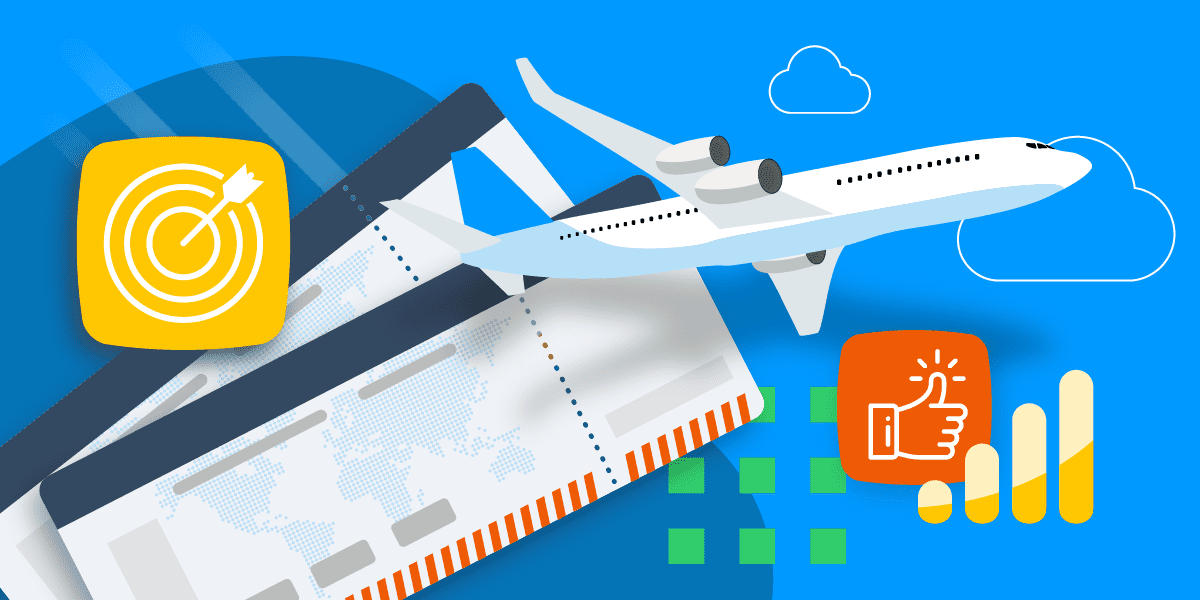
The COVID-19 pandemic placed an extreme burden on the travel and tourism industry. Between government-mandated shelter-in-place orders and individuals’ reluctance to venture far from home, Forbes estimates that travel and hospitality businesses worldwide lost an estimated $935 billion in 2020. The OECD estimates that international travel revenue decreased 80% . Shoring up travel and tourism is going to take a multi-pronged approach of restoring travelers’ confidence, offering clear information to domestic and international travelers, and building more resilience into your business through diverse offerings and quality services. Another way your hospitality business can build back is through thoughtful marketing.
Preparing to meet the pent-up demand for travel and tourism means being ready with an updated travel and tourism marketing strategy. Why have one? Marketers with a documented marketing strategy are 313% more likely to achieve their business goals. Just as keeping a planner helps individuals stay organized, having a marketing plan maps out the inputs your travel business will need to achieve its goals and how to put them in motion to enjoy the success you dream about.
A marketing plan can also help you remain competitive. It will assist you with identifying target markets and understanding their wants. Marketing plans help you set measurable goals for sales and finances, and map out how you’ll reach customers and prospects with information about your offerings. In short, a travel and tourism marketing plan shows how you’ll tell the world how awesome your properties and services are.
In this guide, we offer a basic flow for developing a marketing plan as well as strategies and tactics to consider. With a little planning and creativity, you can market your travel business like a pro!
Step 1: Conduct Market Research Among Key Stakeholders
Before you can begin creating a marketing strategy, you need to understand the why behind your need for one. You also need to understand where your brand has been… where it currently is… and where you want to take it. To do this, you need to sit with key stakeholders and identify:
- What is your unique value proposition - the thing that truly separates you from your competitors.
- Who are your top competitors?
- If your brand were a person, what five words would you use to describe them?
- What are the top challenges you face when it comes to growing your business?
- Who are the dream clients you aspire to work with?
- Who are your advocates?
- What social media channels do your audiences hang out on? Are you on them?
- What is your goal for a marketing strategy? To grow brand recognition, gain clients, establish thought leadership opportunities for your executive team? All of the above?
You could find answers to these questions through focus groups, phone or online surveys, one-on-one interviews, or a combination of all. It’s best to employ a mix of quantitative and qualitative research when setting a marketing strategy for travel. Quantitative travel research will give you the “what” of your strategy while qualitative travel research will tell you the “why.”
Step 2: Establish Your 4 ‘Ps’ of Marketing
Having a marketing strategy means having plans in place to deal with both expected and unexpected situations. A marketing strategy helps you position your product to the right audience, at the right time for the right price. You should build your marketing strategy around the “Four Ps” of marketing:
- Product: The goods or services you offer.
- Price: The amount of money you charge for your product.
- Placement: Where or how your product is available for purchase.
- Promotion: What you do to communicate your product’s features and benefits to your target audiences.
Many variables affect your business success in the travel and tourism industry: competition, climate, current events. But you can control the four Ps.
Once you have decided on the four Ps for your product, one very important part of a marketing strategy that every business should establish early on are goals and key performance indicators (KPIs). What do you hope to achieve through your offerings? Increased sales? Higher volume? More frequent repeat business? And how will you know you’re getting there? KPIs are any metric that indicates success for your business. Ten businesses could designate 10 different KPIs for measuring their success and they would all be correct.
Spend some time creating meaningful goals and KPIs that will define success for your travel business before you start working on tactics.
Step 3: Know Your Customers
It’s imperative to be close to your data when developing a marketing strategy. In order to do this, you need a customer relationship management system (CRM). A CRM will help you accurately track your company’s interactions with a current or potential customer. Every phone call, email, and website page visit gives you incredible insights into who your customers are and what they are interested in. And with 80% of consumers more likely to purchase from brands that provided personalized experiences, you’re leaving big money on the table by not using a CRM.
What’s more, CRMs allow you to track the entire customer journey. There are five main stages in a typical travel customer’s lifecycle:
- Acquisition
At each stage, a CRM can help you serve the customer through:
- Generating brand awareness
- Acquiring leads
- Converting leads into customers
- Providing superior support
- Driving upsells and referrals
Successfully navigating leads and customers through these stages results in more business and profits for you, and a more customized experience for your customer.
You’ll want to integrate your CRM with your other business tools. Connecting your CRM to your ticketing system helps you track orders and deliver promptly. Integrating your CRM with your content marketing platform helps you see what content is resonating best with your customer base and what knowledge gaps you still need to fill to encourage leads to convert. Joining your CRM with your phone system makes it easy for your call center agents or sales representatives to offer better customer support by having quick access to a customer’s purchase history or a potential customer’s journey through your sales funnel.
Step 4: Break Down Your Strategy Into Execution Channels
Marketing covers a huge span of online and offline channels. And studies show that having a strategy that covers multiple channels greatly impacts the bottom line. The numbers don’t lie:
- Brands experience a 287% higher purchase rate when using three or more channels
- Average SMS ROI of approximately 2755%
- The average order is 13% more per order with an omnichannel approach vs. single channel
- Customer retention rates are 90% higher for omnichannel vs. single channel
A website is a critical component to your business success. It’s the central hub where your guests find information regarding travel packages and services, booking and reservations, travel details, and more. It’s one of the main places where your prospects are going to convert.
Your website is a reflection of your brand, and you want to convey a friendly, no-hassle experience to your travelers in the form of aesthetically pleasing imagery, captivating copy, easy-to-navigate site setup, branding, and phone numbers to direct your customers’ questions to the right place.
Your website’s user experience (UX) must offer information that answers all sorts of questions your guests may have about your services: pricing, amenities, loyalty programs, housekeeping, shuttle service, meeting rooms, excursions, and more. Displaying those details on your website and keeping lines of communication open helps your guests have a better experience with your brand. To make your website stand out and attract customers, you’ll want to consider adding these features to enhance your ability to communicate all this information.
Crystal-Clear Navigation
Travelers don’t have time to dig through the weeds of a complicated website. If they can’t find what they’re looking for in 15 seconds, about half of your visitors have no problem leaving your site and looking on a competitor’s page.
You can make it easy on visitors just by creating easy-navigation menus to create siloed information around specific topics of interest. Some of these topics in your menus might include: destinations, limited-time offers or specials, book or reserve, flight status, help or contact us, travel information, COVID-19, etc.
Top navigation is to help travel brands create a natural flow of progression and a good customer experience. If this is your first experience with building out a custom menu, a good rule of thumb to follow is to stick with a menu no more than two steps deep. If you need more, your setup isn’t offering an ideal customer experience.
Real, Professional Photos
People want to see real, professional images of your product or service. It conveys authenticity and adds value. Your prospects can sniff out a stock photo from a mile away - don’t do it. Give your website visitors a real taste of what they’ll get if they book their stay or travel with you. Invest in a professional photographer to take photos that show off your hospitality and the beauty of your destinations in the best light possible. Update them for the seasons as your business grows. It will be money well spent.
Phone Numbers in Prominent Places
Phone calls are still one of the fastest ways to get specific information. And, it remains the most preferred method of communication . When talking with a live staffer, Newcastle Web Design notes that callers have a better user experience. They’re able to get urgent answers and can ask probing questions in real-time. And, posting a phone number on your website builds trust between you and your prospect.
Easily accessible phone numbers for guests to contact you about sales and support information is essential to a good experience. This is where virtual numbers add value, providing reliability, exceptional call quality, and little to no cost towards the consumer.
- Toll Free Phone Numbers . Guests can dial into your call center from one country for free.
- Vanity Phone Numbers . Similar to a toll free number, vanity virtual numbers can be dialed from one country but use numbers that are easy to remember or spell out a brand name.
- UIFN . A UIFN (universal international freephone number) is a global toll free number that can be dialed from multiple countries.
- Local DID + Caller ID . Establish a local presence and engage more with customers with two-way voice services plus caller ID.
People love chatbots on websites because much like phone calls, chatbots offer instantaneous answers to very specific questions, resolution support issues, updates to existing itineraries, reservations and bookings, etc. IBM estimates that chatbots can answer up to 80% of common questions.
Chatbots are great tools to integrate with your global phone system. They can save your business time and money by automatically handling queries to questions that would otherwise fill up your call queues and overwhelm the staff.
Similar to instant gratification phone calls and chatbots offer, an FAQ (Frequently Asked Questions) page is a perennial favorite among travelers because they house quick answers to, well, the most frequently asked questions.
This common feature of websites saves visitors time by signaling where they can find digestible, short-form information on hot topics. FAQ sections also save your agents time by heeding off individual questions you hear all the time in the call queue - giving your staff more time for more taxing customer support and conversion activities.
2. Content Marketing
Content marketing is strategically curating written articles, visuals, audio, and video to encourage conversions for your business. Essentially, it’s the process of providing your customers value in hopes that it will keep them informed and trusting of your brand so they will eventually buy, refer, and repeat. It means using a combination of the tactics below to promote your business across a variety of channels and touchpoints. Let’s look at the most common travel and tourism content marketing tactics.
Search Engine Optimization
Search engine optimization (SEO) is the activities you can perform to ensure your targeted audience can find your website via search engines. This includes search engine marketing, improving your website’s content, using specially formatted text or coding to communicate directly with search engines, creating online business listings, and working with other websites to gain inbound links.
SEO is important because search engines deliver a targeted audience to your site. People use search engines to find the information they need right then and there. The first page of search engine results gets 95% of all search engine traffic . Very few people click through to the second, third, or fourth pages.
You want to optimize your travel and tourism website to be discoverable by search engines and ranked highly for the keywords of your choice. Unfortunately, there is no easy formula for getting your site on the first page of search results. Google, Bing, Yahoo! and other search engines constantly update and tweak their algorithms that respond to search queries and deliver search results. But there are a few things you can do to make your site more search engine- and user-friendly that will always count toward a better search engine ranking:
- Make your site relevant with engaging, thoughtful content . Sites that contain original, organized content centered around a well-defined topic (like your organization and its activities) will always outperform sites that are not well-organized or thoughtfully written. Take some time to review the text on your site, and ask yourself: Is it understandable? Is it grammatically correct? Is it non-repetitive? If the answer to any of these questions is no, revise it.
- Use relevant images with alt text . Alt text is text that shows up in an image box when you hover your mouse over it or when the image does not load within your browser. This text tells search engines what the image is about, giving the engine a better idea of what your overall site is about.
- Make your site useful and current enough that other sites want to link to you . Although search engines no longer consider the number of outbound links you host when deciding how to rank you, they still consider inbound links – links on other sites that lead to your site. The best way to build your popularity is slowly, by encouraging related/similar sites to link back to you and by earning linkbacks through hosting updated, relevant content.
- Optimize your website for small screens . 79% of consumers used a mobile device in 2020 to make a purchase. Format your website to be more mobile responsive or risk discouraging visits.
- Localize your content . Make sure your NAP is consistent across all your organic channels. NAP stands for name, address, and phone number, and it’s essential to ensure that every major search engine can verify your company’s existence.
- 7-Day Italy Adventure > Book Now
- Atlanta Hotels > Check Rates
- Europe Cruise Fleets > Learn More
- Flight Details > Shop Now
- Travel Restrictions > Stay Updates
- Track your website’s progress. Google Analytics helps brands track and report a myriad of website performance metrics. Coupled with call tracking software , companies can measure the reach and ROI of where their inbound calls are sourced from (direct website traffic or organic results) within Google Analytics or their VoIP provider dashboard.
Once you’ve figured out what you want your travel and tourism website to be known for, support your SEO goals with rich content on a company blog. Use your keyword research to develop and execute an ongoing series of blog articles - with written word, images, video, and audio content - that feature those top-level keywords travelers use to find information about their next travel purchase.
Getting content for your travel & tourism blog is easier than you might think when you view every marketing deliverable as potential content. Are you sending a promotional email to your contact database? Turn the email into a blog post. Have you created some print collateral recently? Pick content from those pieces to create several blog articles (and some even snappier social media posts). Everything and anything can be talked about from the right angle.
Testimonial & Reviews
Word of mouth remains one of the most effective marketing tactics. In addition to friends and family sharing recommendations, we now have sites like Yelp, Google Reviews, TripAdvisor, and Travel + Leisure where travelers can share detailed experiences and recommendations for travel. Even short-term rental sites like Airbnb and VRBO act as de facto review sites because of the public reviews guests leave for each property.
Be proactive about being visible on review sites. Ask your customers or guests to leave an online review about your business. Their testimonials will carry more weight than most, if not all, of your marketing. Place outstanding reviews in a prominent place on your website and within social media posts. Thank the people who offer a positive review and respond to any negative reviews with gratitude for their feedback and promise to do better going forward.
Video Creation
As tools like smartphones and video editing apps become more accessible, the popularity of video as a marketing tool is skyrocketing. Why use a still photo or words to describe your destination when you can show a viewer exactly what your destination looks and sounds like? As of last year, 86% of businesses used video as one of their marketing tools. Furthermore, among marketers promoting their business with video, 93% say it’s an important part of their strategy.
If you’re not using video, what are you waiting for? Nowadays, brand loyalists and casual customers alike don’t always expect a company’s videos to be polished and slick. People value authenticity in marketing. They don’t necessarily care that a video was filmed on a smartphone as long as they perceive the story the video tells to be genuine.
Some ideas for video marketing content:
- A tour of your property, cruise ship, leading travel destinations, etc.
- A walk-through of your services
- Interviews with internal advocates and customers
Remember to provide your viewers with a website domain and phone number at the end of your videos so they can reach out and engage with your brand.
Social Media
Social media has become a ubiquitous part of travel planning because it’s so visual by nature - who can resist showing off photos of their latest dream vacation or swanky business trip? As part of your robust content marketing strategy, you’ll need to cultivate a social media presence on the platforms of your target audience’s choice. Items to consider:
- Where is your customer base gathering? Don’t bother spending time posting to LinkedIn if people are not talking about services or products related to your business there. You’ll probably want to focus on social media channels that are more visual, such as Instagram, Snapchat, Facebook, and TikTok.
- What do your customers want to know more about? Post content that responds to their travel information needs that you identified during your stakeholder research.
- How often do your customers want to hear from you? You don’t have to post multiple times a day or even every day to have a successful, engaging tourism social media strategy. You simply need to post shareable and digestible content consistently.
- What are your staff’s social content capabilities? Some platforms require specific types of content: videos for YouTube or TikTok, photos for Instagram. If you want to stand out on these platforms, not only will you need to know how to create videos or take compelling photos, but you’ll want to know the nuances of social media culture. TikTok has a very different vibe than Facebook, for example. Make sure someone on your staff understands how to culturally navigate platforms before you overextend your business or inadvertently commit a social media faux pas.
While we may sound like a broken record here, having consistent messaging is vital in content marketing. You want your brand presence to reflect that so your customers have a good experience engaging with your business. Make it a point to always ensure your brand description, website domain, name, address, and telephone numbers point back to the related location your customers are intending to visit.
3. Email Marketing
Email is one of the most cost-effective and efficient ways to reach your potential customer base. Even with an estimated 306.4 billion emails sent per day , people still prefer receiving news and other messages via email. 58% of people check their email before reading news or social media, and 60% want to receive promotional information via email rather than through other channels.
Email is a great way to market your travel and tourism business because it allows you to send personalized messages. You can segment your customer list to send more relevant promotions and information to customer subgroups while allowing customers to segment themselves by signing up for certain types of emails they’re interested in. You can let customers control how frequently they hear from you by using automated email campaigns that run at designated frequencies.
To be really effective at email marketing, you’ll want to first build an email list. You should start with existing customers. Collect new contacts everywhere you have a potential customer touchpoint:
- Web-based subscription forms
- Gated online content and coupons
- Trade shows or expos
- Webinar registrations
What kinds of emails should you send? That depends on the exact nature of your travel business. In general, you’ll want to set up the following types of emails, many of which you can create in advance and tell your email marketing platform to automatically send when your CRM tells your email platform that a recipient has reached a certain milestone or completed a certain conversion:
- Welcome emails : when someone signs up to receive your emails.
- Follow-up emails : sent a few days to one week after someone signs up. These offer extended information about a topic or more detailed information about your offerings.
- Milestone emails : to recognize (sometimes with a discount) when someone has a birthday or reaches an anniversary of supporting your business.
- Newsletters : to keep subscribers apprised of what’s new with your business, how to maximize their travel, and how to discover offerings they haven’t yet considered.
- Informational emails: including product explanations, trip updates, and responses to current events that affect your operations.
- Confirmation emails : sent when someone makes a purchase or completes a conversion.
- Abandoned cart emails: sent when someone adds a trip to the online cart but then leaves your website without purchasing it. These emails should remind the recipient of the benefits of the service(s) they intended to purchase and offer customer service or tech support if needed.
- Thank you emails : sent when someone makes a purchase or converts.
There’s a lot to email marketing. Make sure that your email templates always point back to a relevant landing page to your website or customer support contact. For example, if you’re sending an informational email regarding new 2022 trips to Asia, be sure to include a CTA that links to a landing page where those newly-added itineraries live.
4. Advertising
Paid search ads.
When people are searching for specific information, one of the first places they go is an online search engine. Make sure your brand is included in their search results by bidding on paid search ad spaces. Paid search ads appear next to organic search results. They look similar to organic search links but are sold in instantaneous mini-auctions among companies vying for potential customers searching for related information. You only pay for the ad if someone clicks on it.
Your business can appear within search results about your niche of the travel and tourism industry when you run ad campaigns on search engine platforms like Google , Yahoo ! or Bing . With the free training those platforms provide, it’s easy to set up an ad campaign that targets people searching for a set of keywords you determine. You can also target client lookalike audiences based on their past searches and general demographics. Be sure to establish a reasonable budget for paid search campaigns and spend some time refining a tightly-focused keyword list that describes the core of your travel/tourism business. With millions of people using search engines each day, you could easily blow through hundreds or thousands of dollars every day in paid search ad clicks. At the same time, you want to bid competitively so your ads actually appear high up in search results and have the chance for potential customers to see them.
Programmatic Ads
Programmatic advertising is the use of technology and automation in the buying and selling of online media. Programmatic ad platforms track your site’s visitors as they surf the web, serving them ads in established display ad spaces relevant to what they’ve already viewed. These retargeted ads encourage the user to revisit past site pages and take action.
So say you had visitors who viewed your website’s destination page but didn’t convert. Instead of relying on them to come back to that page, programmatic or retargeted ads pull through on their most visited third-party sites and social media platforms. This is a cost-effective way to advertise online and remind customers of your brand and the services you can provide.
Metasearch Engines
These are price comparison websites that compare rates for major travel-related expenses like flights, hotels, rental cars, or cruises across several companies or brands. Several metasearch engines in the travel and tourism industry include Destinia, TripAdvisor, Trivago, Skyscanner, and Kayak. Travelers enjoy using metasearch engines because these sites save research time and money on their reservations. Consider purchasing display ads or digital retargeting ads on these sites to reinforce your brand when people search for related services or move on to other websites during their research.
Direct Mail
Once the bane of homes everywhere, direct mail is enjoying a resurgence in popularity. Consumers are more accepting of direct mailers for products and services, with open rates landing at 90% and 39% of consumers purchasing from a new business that sent a direct mailer.
When creating a direct mailer, consider the shareability aspect. RetailWire has found that households collaboratively discuss 88% of key purchases, including travel. And it’s proven to be effective at generating sales: a study by Go Inspire Group found that people who received a direct mail piece spent five times as much on the advertised product as another group who only received emails about the same product. Even better, a third group who received emails and direct mail spent more than six times as much as the email-only group.
If you want to make direct mail a part of your marketing strategy, the U.S. Small Business Administration recommends these steps :
- Start with existing customers: Your customers remain loyal because they know the services you provide them. Two-thirds of people discard mail from companies they haven’t heard of. Don’t waste money on people who don’t care about you (yet).
- Target your direct mail: Beyond your customers, send promotional direct mail pieces to people potentially interested in your product. The USPS offers resident demographics through their Every Door Direct Mail program . You could also rent targeted mailing lists through a variety of list companies.
- Use thoughtful design: Mail pieces with interesting visuals, minimal, readable text, and a clear call-to-action perform the best.
- Extend a worthy offer: Speaking of calls-to-action, tell the recipient what you want them to do and make them a deal so sweet they can’t resist taking advantage of it. You’re already investing a fair amount of money in a direct mail campaign. If you want it to result in conversions, your offer must be great.
5. Public Relations
Public relations (PR) is the strategic communication process that builds mutually beneficial relationships between organizations and their publics. It is about influencing, engaging, and building relationships with your key audiences across multiple platforms such as paid media (including advertising), earned media (media appearances), and owned media (like your website or social media pages). While PR has a reputation (and history) of being a bunch of spin, modern public relations is much more about telling your organization’s story in an honest way that responds to audience concerns so that your organization can succeed.
With that in mind, what stories about your travel or tourism company could you tell to respond to travelers’ concerns? What benefits of engaging with your company could you explain, and through which channels, to reach potential customers and get on their short list of travel-related companies to patronize?
To run a successful PR program, Aventur Marketing advises following a few key points:
Know Your Audience
Who are they? What are their demographics? What are their lifestyles like? What do they want from a travel or tourism company? Furthermore, where are they “hanging out” when it comes to the media? Do they watch television, or prefer to read newspapers and magazines? Do they frequent certain travel blogs? Do they congregate on Facebook, Twitter, or both? Meet your audiences where they are with your message.
Build Relationships With Key Travel Media Professionals
It’s not enough to distribute a press release about your new property or renovations and hope every publication you emailed will print it. Publishers receive hundreds of releases and media advisories weekly. They won’t pay attention to your press release unless it appeals directly to their readers, and they trust you to provide high-quality content.
Build relationships with travel writers and bloggers from a targeted list of travel and tourism publications you assemble that you know your audience consumes. Know what these writers enjoy writing about, and provide them with related, substantive content even if it doesn’t directly promote your business. They’ll come to trust you as a reliable source of information that makes their job easier. Then, when you do have an item to promote about your tourism company, they’ll be much more receptive to working with you to reach their audience.
Customize Your Pitches to Different Niches
You can’t pitch the same topic to every publication and expect them all to publish it. Customize your story pitch to the publication and medium. For example, your convention and visitors bureau’s (CVB) news about a new facility opening might easily win placement in your local newspaper because of the local business aspect. But to win placement in an out-of-state publication, you’ll have to explain why out-of-state visitors should stop at your shiny new facility.
Maybe it’s the free concierge services you offer for local attractions? Or maybe it’s the ticket discounts you can only get by visiting your new location? In addition, a travel-oriented Instagram account is going to want photos to accompany your written information. A travel sage YouTuber is going to want video B-roll, or the opportunity to visit and have your staff guide them around as they film for their YouTube channel. Customize the format in which you offer information to dramatically increase the chances different media will pick it up.
Get to Know the Local DMOs & CVBs
Speaking of CVBs, make friends with these staff right away! Destination marketing organizations (DMOs) and CVBs are groups whose job is to promote a local area to tourists, business visitors, and people thinking of relocating there. They know all the best information and movers/shakers related to travel and tourism in the area. If they come to know your business as an interesting, can’t-miss part of the local experience, they could provide very valuable paid or earned marketing for you that is backed by their authority in the local travel arena. They could also help boost your business by sending journalists assigned to cover your area to talk with you about your business. These connections can result in greater web visibility through increased SEO and exposure.
Again, travel publications receive hundreds, if not thousands, of pitches weekly. You have a few seconds to grab their attention with your email or phone call, so get to the point of your news quickly. One or two paragraphs is usually the maximum needed before a journalist or writer will decide to reach out to you for more information.
If you’re unsure about how to craft a winning PR pitch or how to start building relationships with journalists, check out Destination British Columbia’s excellent guide to travel media relations strategies and tactics.
Preparing for the New Travel Market
COVID-19 changed everything about the way travel and tourism brands need to market themselves to remain competitive as economies open back up. It's more important now than ever for CMOs of travel and tourism brands to reevaluate their marketing strategies to accommodate growing customer expectations. And a “wait and see” approach won’t help you make up for lost dollars as people begin to travel again.
We hope that this guide will help you to evaluate your current strategy and make the necessary changes that will help your organization thrive now and in the future.
Deliver a 5-Star Guest Experience with Modern Cloud Communications
Stay connected to your guests with modern global communications software. Your marketing strategy brought them to you, now nurture and grow your relationship with excellent call quality, robust virtual number inventory spanning 170+ countries worldwide, and more - all on a reliable voice platform.

Katharine Kellar
Katharine is the Director of Marketing Communications at AVOXI, bringing over 17 years of experience in nurturing B2B, e-commerce, SaaS, and global brands. Fueled by her relentless drive for growth and an unwavering optimism, she finds joy in every day's silver linings. Outside of her professional achievements, Katharine is a coffee aficionado, savoring the aroma and taste of a freshly brewed cup as she crafts compelling narratives that resonate across diverse markets.
Web Application
SIP Integrations
Integrations
Programmable Voice
Our Leadership
Talk to an Expert
HIPAA Compliance | Privacy Policy | Política de Privacidad | PAIA AVOXI Manual | PAIA Forms | POPIA | U.S. Terms & Conditions | South Africa Terms & Conditions | Cookie Policy | Política de Cookies | Data Processing Addendum
©2024 AVOXI
Sign Up for Our Newsletter
You'll receive a monthly newsletter where you'll discover new content at AVOXI, including events, product updates, and industry trends.
Effortless booking
Maximize online conversions with the most intuitive checkout online.
Expand revenue with our powerful Automated E-commerce tools.
Upgrade your website to industry’s best. Fresh websites. Fresh revenue.
Amplify visibility and expand earnings with integrated OTAs and local partners.
Streamline check-ins, limit risk, and amplify customer data with built-in digital waivers.
Transform data into insights. X-ray reporting gives you customer and business intelligence.
Manage high-volume walk-up customers effortlessly with POS, ticketing, and gated entry.
Automate management of staff schedules, assignments, and staff communications
Control your business precisely the way you want with endless yet easy configurability.
Allocate equipment used in various products. Prevent overbookings and maximize profits.
Grow with Xola in our constantly expanding universe of integrations and apps.
Harness customer data to drive marketing campaigns and generate repeat business.
Transform your guests into passionate brand advocates. Perfect your products & services.
Manage your business with the most powerful mobile suite in the industry.
Perfect the guest experience by giving your staff the industry’s most intuitive software.
Efficiently manage guest flow, minimize wait times, and ensure maximum satisfaction.
Ticketing & Entry
Revolutionize your guest experience: Effortless check-ins, interactive displays, secure payments.
Boost revenue with automated rave reviews, actionable insights, and loyal customer engagement.
Efficient ticketing, digital waivers, and fast check-ins enhance on-site operations and guest satisfaction.
Explore Xola Universe: 80+ apps, limitless integrations, endless growth opportunities.
Simplify check-in and boost your marketing efforts with our integrated automated digital waivers.
With SOC 2 Type II and CCPA compliance Xola exceeds industry security standards and insures your data protection.
Access real-time insights for business growth with our powerful reporting.
Remarkable and hassle-free guest experiences with waitlist and virtual queuing.

How to set up email tracking in GA4
- Xola University
6 ideas for travel and tourism advertising campaigns (with examples)

Want to create eye-catching travel ads like Expedia, Southwest Airlines, and KAYAK?
As travel starts to pick up again, it’s time to get serious about your advertising. Tour operators can hugely benefit from paid ads — but with so many forms of advertising available across different platforms, you may be wondering where to start.
In this post, we’re sharing actionable strategies to build better ad campaigns that appeal to your target audience, plus top-level examples from the brands who do it best.
Top factors to consider for travel advertising campaigns
Want to see more positive results from ads? Keep these strategies in mind when crafting your future marketing campaigns .
1. Define your target customer
Do you know who your customers are? Before you begin crafting an ad campaign, you need to know more about your guests.
Building a buyer persona is a strategic way for tour businesses to get to know their customers. A buyer persona is a visual representation of your ideal customer: Dig into their demographics, study their behaviors on your website, and send surveys to your email list to find out more.
The takeaway? You’ll find a much higher ROI with ad campaigns that specifically appeal to your target audience.
2. Understand the travel customer journey
It’s difficult to sell a tour to someone who hasn’t decided on a destination yet. Ideally, you want to show your ads to people when they’re most likely to book.
Understanding the travel customer journey can help you pinpoint when that is. Google defines the travel search process in four stages:
- Dreaming: Guests are looking for destination inspiration.
- Planning: Guests are researching potential travel dates, hotels, and activities.
- Booking: Guests are booking flights, hotels, etc.
- Experiencing: Guests have arrived and are searching for activities and attractions to experience.
Tour operators are likely to see more conversions in the “booking” and “experiencing” stages. For example, if you’re investing in Google Ads, it’s better to target narrow search terms like “best hiking tours in Colorado,” which is what someone in the booking or experiencing stage would search for.
People in the dreaming stage, on the other hand, would likely be searching overly broad terms like “best summer destinations.”

3. Choose the right platform
There are several different platforms to launch your advertising campaigns, and choosing the right one matters. Where is your audience most likely to see your ad? Where are they already hanging out?
Here are five popular travel advertising outlets:
- Google Ads: Show up at the top of Google search results for relevant keywords.
- Social media ads: Target specific demographics on Facebook and Instagram.
- Yelp ads: Appear to people searching for similar experiences on Yelp.
- Tripadvisor ads: Target people planning a trip to your destination.
- Email marketing: Offer discounts to your email list, one of the more cost-effective ways to advertise.
4. Pay attention to seasonality
Timing is one of the most important factors in travel advertising. Keep seasonality in mind when crafting your campaigns, and remember to edit previously launched campaigns as needed.
A skiing ad won’t make sense at the beginning of summer, so make sure to pause seasonally irrelevant campaigns.
5. Stay true to your brand
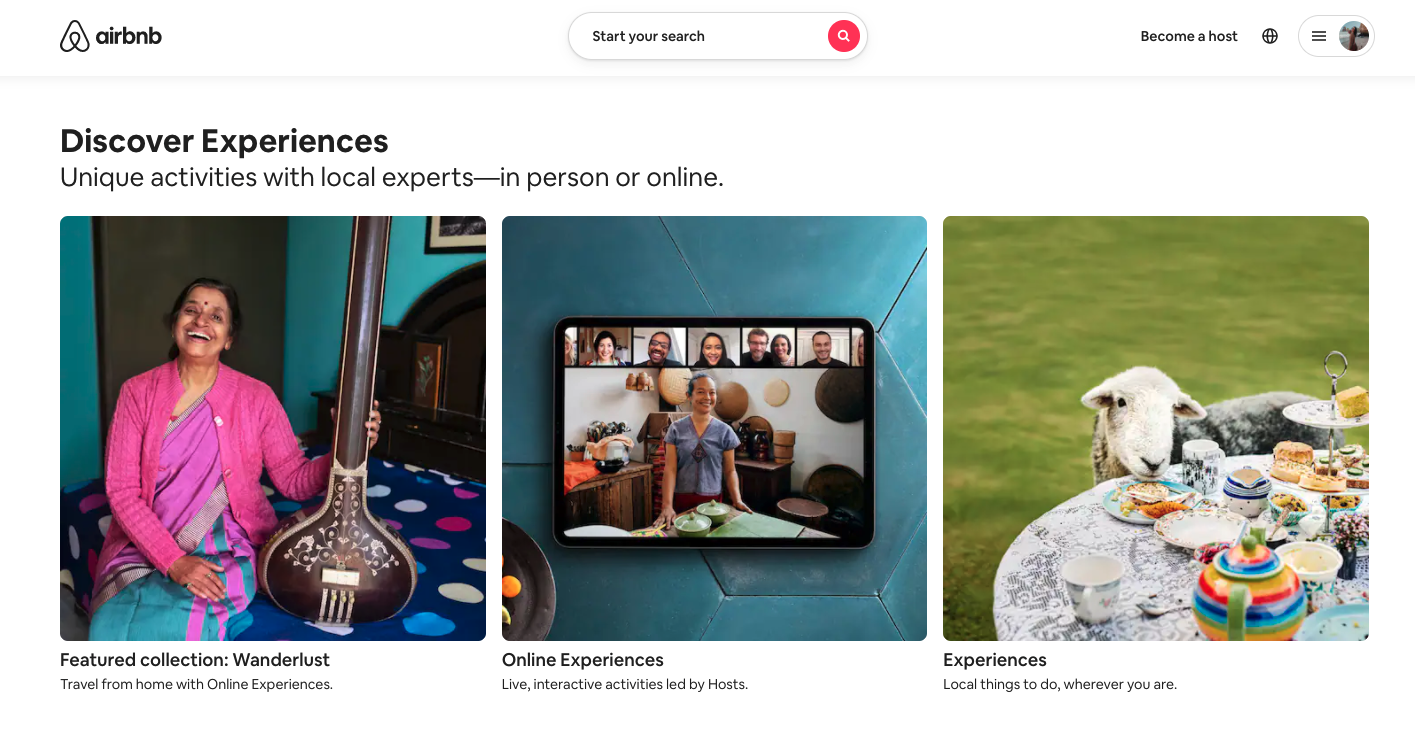
Your ad campaigns should reflect your brand identity. People who click on your advertisements are expecting to find the same tone of voice, visuals, and customer experience on your website.
6. Use geographic targeting
Rather than making your ad visible everywhere on the planet, you can target specific locations your guests are likely to be in. For example, you can target other tourism websites in your state to lure in tourists who are already visiting.
By narrowing down your ad’s geographic reach, you can maximize your budget and focus on the areas that’ll bring you the most return.
7. Promote your sales and special offers
What better way to entice someone to click on your ad than to present them with an unbeatable offer? Advertisements are an effective way to promote your sales, especially seasonal offers. You can send out an ad offering a great discount during the low season to help replenish your bookings, for example.
Pro Tip: One of the simplest ways to do this is by creating coupon codes. Here is how easy it is to create a new coupon code in Xola.
8. Leverage user-generated content
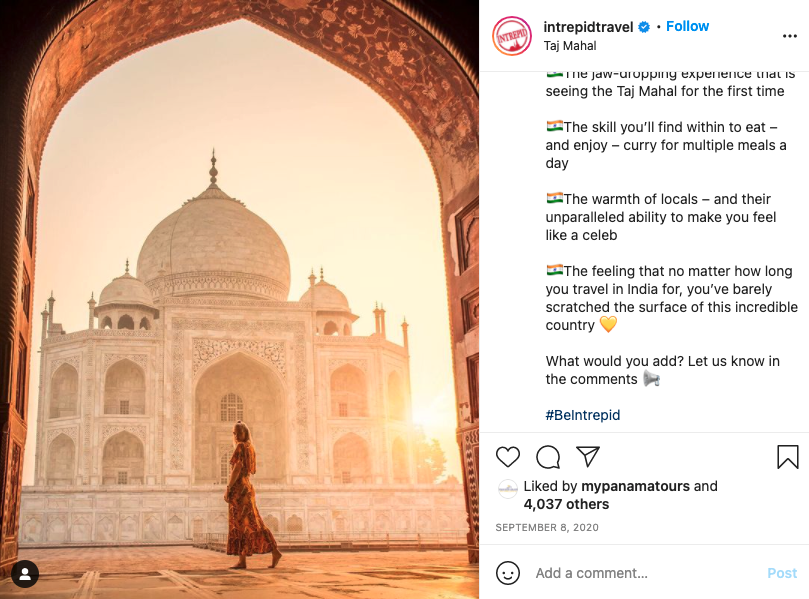
Sometimes you can generate an ad campaign with user-generated content alone. It’s another cost-effective way to bring more eyes to your tour company.
You can start by encouraging guests to use your brand’s hashtags, share their photos with their own followers, or even submit photos on your website. Apps, like Fotaflo , which integrates natively with Xola, make the process of curating UGC photos and videos easier. Tour operators can also offer incentives for anyone who posts on social media about your tours, such as hosting a giveaway for everyone who uses a hashtag related to your brand.
Tour operator Intrepid Travel asks guests to share their experiences on Instagram with the hashtag #BeIntrepid , for example, which has garnered over 50,000 posts.
Guests typically love seeing their content reposted on other accounts. Still, make sure to always credit the original owner. To avoid serious copyright issues, many brands ask followers to agree to a disclaimer about how and where the images will be used before re-posting them.
Reviews can also be considered user-generated content — but tour operators need to be very careful when it comes to encouraging guests to leave positive reviews. Tripadvisor prohibits brands from offering incentives in exchange for testimonials “because they can hinder the validity and accuracy of reviews.”
9. Use images and videos
Images and videos are the most powerful form of advertising in the travel industry. High-quality images of your destination and scenes from your tours can entice hundreds of clicks. An expertly crafted video can drive even more engagement.
Instagram and Facebook are great places to start experimenting with image and video ads; see a couple of great examples below.
6 examples of great travel advertising examples
Ready to see these strategies in action? Here are six travel brands that have nailed their travel marketing — including examples of general ad campaigns, paid search ads, and social media ads.
Expedia’s campaign: “It matters who you travel with.”
This Expedia campaign wants travelers to feel confident booking with the platform in a post-pandemic travel world. The tagline “It matters who you travel with” frames the company as a trusted travel partner rather than just a booking platform.
The company created a playful and very relatable video of a solo traveler who runs into several hiccups on her trip. That is until actress Rashida Jones steps in, embodying Expedia, and makes the trip more memorable.
The company chose a video to expertly convey its marketing message to travelers: Expedia promises a seamless trip and memorable experiences you can’t find on your own.
Southwest’s Transfarency campaign
Southwest Air Lines’ new campaign targets the controversial topic of ticket prices. The company has always billed itself as a transparent brand that cares about employees and customers alike. The new campaign called Trans fare ncy , a play on the words transparency and airfare, builds on that reputation.
The campaign promises customers no unexpected bag fees, change fees, or hidden fees. It’s a great advertisement because it fits perfectly within Southwest’s brand identity, and the airline delivers on the promise.
TourRadar’s travel and destination Facebook ads
Vienna-based TourRadar launched a Facebook campaign to increase bookings from people who had visited its website. The company used visually stunning travel ads to promote relevant tours to people who had browsed the same tours online.
The company also promoted relevant destination offers and tours to people who hadn’t visited their website yet but had shown interest in the destination. The campaign focused on the company’s core markets, including the U.S., the U.K., Australia, and New Zealand.
It was a success: TourRadar doubled its conversion rate over a year.
KAYAK’s video ads on Instagram
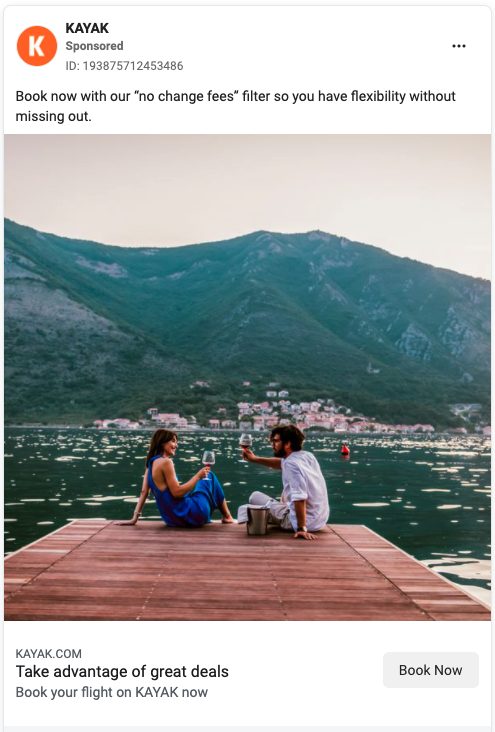
KAYAK ran video ads on Instagram to bring more people to its website, including one that shows how simple it is to filter flights by airline, price, number of stops, and destination.
The company played around with ad placement in both Stories and the News Feed, and each ad had a “book now” or “learn more” call-to-action button that linked back to the KAYAK website.
The ads were shown to a lookalike audience based on the travel search engine’s existing audience, which increased the likelihood of clicks. As a result, KAYAK saw a 5x increase in incremental sales conversions.
Airbnb Experiences search ad
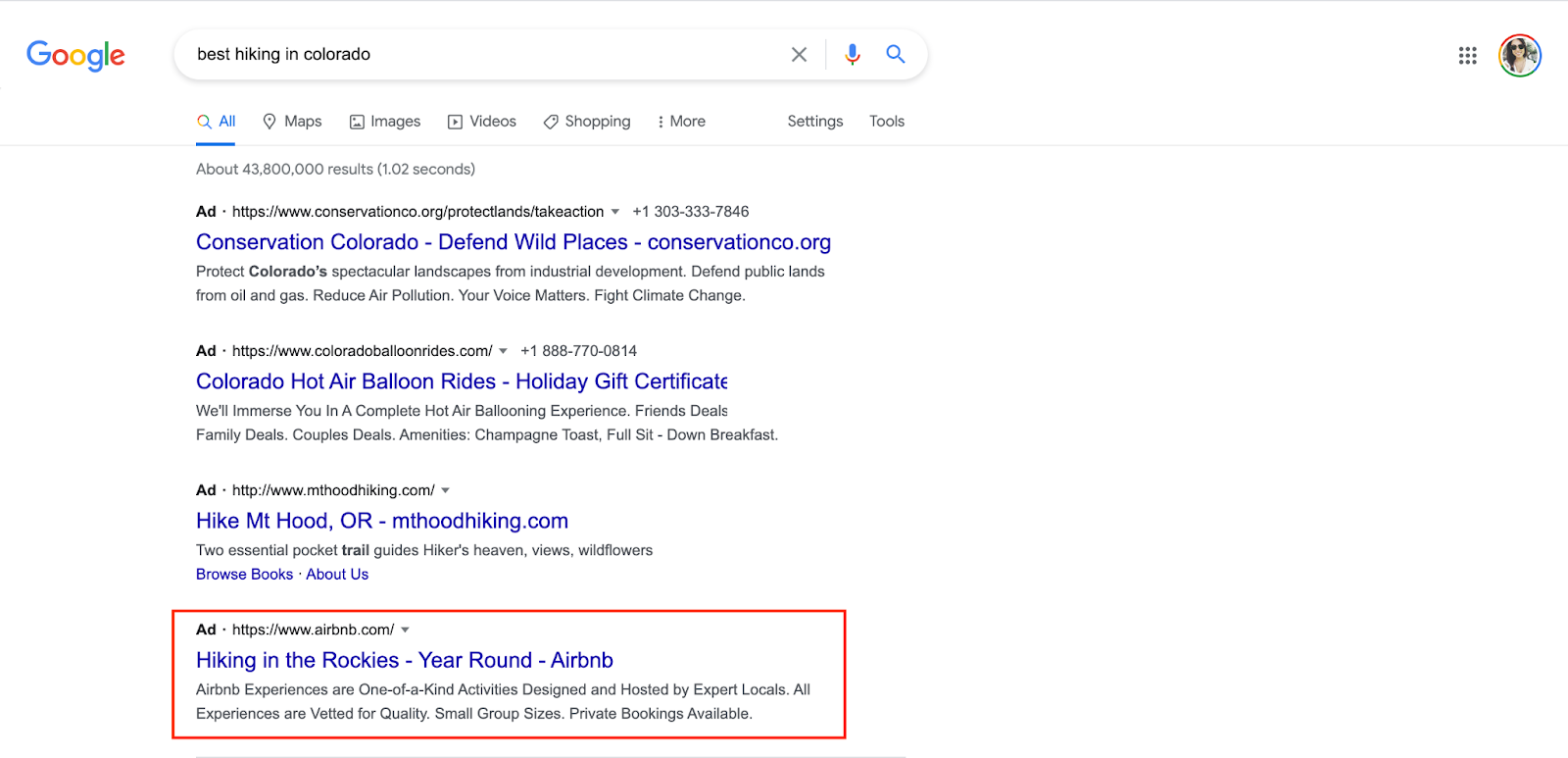
Airbnb is targeting people who search for outdoor activities in Colorado to promote its local-led tours. In this example specifically, Airbnb’s paid search ad for a hiking tour shows up under the search for “best hiking in Colorado.”
The title “Hiking in the Rockies – Year Round” quickly answers the questions of “where” and “when,” two details that directly impact the customer’s trip. The wording of the title narrows down the search for the searcher. The description focuses on Airbnb’s unique offerings — “hosted by expert locals,” “experiences vetted for quality,” and “small group sizes — further enticing readers to click.
It’s a great example of Airbnb using a feature other than its main accommodation services to bring people into its website.
Viator’s Brooklyn food tours search ad
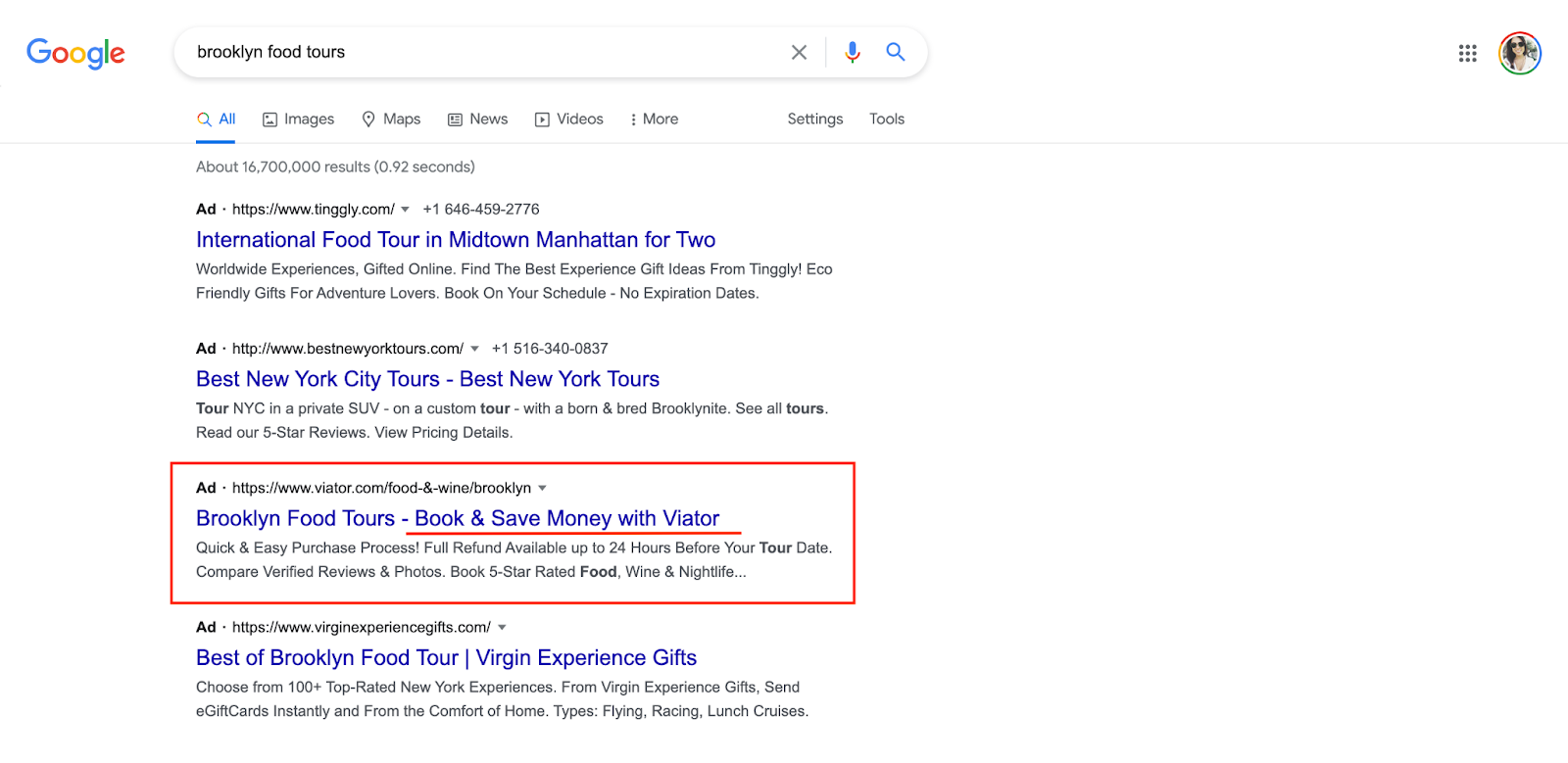
Here’s another effective Google Ad example. Viator is promoting its food and wine tours in Brooklyn under the search term “Brooklyn food tours.”
Unlike the other search ads that pop up, Viator specifically mentions the keywords that the customer will be skimming the page for and includes another enticing offer.
Viator includes “Book & Save Money” in its title, directly appealing to money-conscious travelers visiting a destination known for being very expensive. Therefore, this ad specifically speaks to budget or mid-range travelers who appreciate a good deal.
As you can tell from these examples, an effective ad campaign is crafted around your ideal audience. Top travel companies like Viator and Southwest use words, images, and videos to appeal to their target customers, and your campaigns should follow suit.
Now it’s time to implement these strategies into your own campaigns. Then sit back, relax, and watch those bookings soar.
Writer Carla Vianna
Related Articles

Keeping in touch with past, present, and future guests via email brings you closer together. It also gives you an

A detailed guide to GA4 paid ad tracking for tours and attractions
The success of your paid ad campaigns lies in the ability to measure and analyze relevant KPIs — like ad

What is experiential marketing: Definition, why it works & examples
Experiential marketing campaigns are so effective in drawing in customers because people crave real-life experiences more than ever these days.
Get the latest news and resources.
For tours and attractions delivered straight to your inbox each week.
Transform your business now.

Be Better Blog
Strategy & Insights
Plotting The Next Big Thing: 2024 Travel and Tourism Marketing Trends
By Hayley Corbett
January 6, 2024
2024 offers no shortage of events and trends to reshuffle the travel and tourism marketing landscape.
From cutting-edge AI and shifting consumer priorities to major events directing tourist flows, this is undoubtedly a year of great change and opportunity.
As travelers embrace new tools and trends post-pandemic, destination marketing organizations will need to keep pace and capitalize on emerging niches.
Flexibility, innovation and insight set apart winners as always.
What trends and tech should define marketing efforts this year? Let’s explore the pivotal changes that separate winning destinations in 2024’s decisive travel environment.
AI Goes Mainstream for Travel and Tourism Marketing in 2024
While just 17% of American travelers tapped AI tools for vacation planning over the past year, that figure is set to skyrocket in 2024. ChatGPT has dominated thus far, cited by 63% of AI-assisted travelers, but new platforms like TripAdvisor are entering the space.
And with 50% of travelers now open to leveraging AI for future trips, an explosion in adoption looms. Though only 6% used generative tools like ChatGPT in 2023, Expedia forecasts mass acceptance incoming.
Outside of the apps, Google’s Search Generative Experience (SGE) is also using AI to share travel planning by including AI-generated responses right into travelers’ search results.
For destinations, the implications are immense — 2024 may see swaths of visitors arriving with AI-powered itineraries in hand. To capitalize on this seismic shift, DMOs must ensure prominence on AI platforms, craft specialized travel packages and position themselves as go-to local experts to shape data-driven recommendations.
The AI-fueled travel surge is inevitable; early movers stand to welcome an influx.
Astrotourism: A Year of Rare Celestial Wonders
Astrotourism, a form of niche tourism centered around stargazing and astronomy, is poised to soar in 2024 as a leading travel trend. With several rare celestial events on the calendar, from vivid meteor showers to an exceptional northern lights display, 2024 marks a banner year for witnessing breathtaking sights in the night sky.
- Total Solar Eclipse on April 8: The most monumental event is undoubtedly the total solar eclipse on April 8, with the Moon fully obscuring the Sun in a narrow path across parts of Mexico, the central U.S. and Canada. Total solar eclipses occur about every one to two years but are only visible from any given location about once every 400 years, offering a truly singular sight.
- Vibrant Meteor Showers: Several of 2024’s meteor showers may produce incredible shows, especially the Quadrantids in early January and the Perseids in mid-August. With limited moonlight, these have the potential for upwards of 60-100 vivid meteors per hour at peak, an awe-inspiring display.
- Extraordinary Northern Lights: Due to the approaching solar maximum in 2024-2025, scientists anticipate the best northern lights in years during the start of the decade, with their vibrant colors possibly visible farther south than usual under optimal dark sky conditions.
Destinations around the world are leveraging these astronomical phenomena and the rising popularity of astrotourism by offering specialized services such as expert-guided stargazing sessions, bespoke event packages and lavish accommodations tailored to sky-watching. From the salt flats of Botswana to the Adriatic coastline, stargazers can fulfill their celestial dreams in wilderness hideaways or at luxury beach resorts primed for astronomy.
As travelers increasingly seek restorative, transformational trip experiences, destinations marketing their awe-inspiring night skies and astronomy-focused amenities can tap into this cosmic travel niche in 2024 and beyond.
Election Year Mutes 2024 Travel Spend
The 2024 presidential election cycle casts uncertainty for discretionary travel spend, with historical dips in election years.
Domestic and international travel still rank as top priorities for high-income households, but shortened planning cycles point to last-minute bookings. DMOs can leverage flexible offers, emphasize value and keep messaging inspiring — yet sensitive — to the political climate.
Promoting convenient weekend getaways, discounted shoulder season packages and easy full-refund booking can attract hesitant vacationers. While election distractions may mute 2024 travel initially, deploying strategic promotions as votes are counted can help destinations gain market share into 2025.
Capturing wavering demand just before or after an election makes for savvy marketing.
Wellness Travel to Skyrocket
Fresh off 36% annual growth from 2020-2022, the thriving $651 billion wellness tourism industry is forecast to rapidly accelerate – projected to reach a soaring $1.4 trillion value by 2027.
As personal health, self-care and mental health become indispensable to travelers planning 2024 getaways, quality sleep will take center stage. Destinations should highlight specialized programming like multi-day sleep optimization retreats, mindful meditation and partner with hospitality brands offering amenities to aid sleep health. Blackout shades, pillow menus and Sleep Concierges are just the start.
Marketing efforts should also showcase nature excursions, yoga sessions, spa treatments and other local wellness offerings. Catering to this high-value niche with personalized, restorative experiences taps into its meteoric post-pandemic rise.
With wellness tourism showing no signs of slowing its explosive expansion, destinations that promote transformative sleep and overall well-being are poised to gain happy, healthy visitors and significant revenue. Early movers stand to win big.
Gig Tripping Hits the Road
Gig tripping, traveling specifically for concert tours and festivals, is skyrocketing thanks to major 2024 world tours like The Rolling Stones, Bruce Springsteen, Madonna and Bad Bunny.
With 44% of US travelers willing to fly short-haul and 18% long-haul to see artists abroad according to Skyscanner , often for ticket savings, gig tripping has mass appeal. Destinations can create targeted campaigns spotlighting the exact performances, highlighting discounted accommodation and transport packages bundled with tickets. Tailored festival sponsorship opportunities also hold potential.
Similar to the rise of bleisure travel , extending gig tripping beyond concerts to emphasize broader local music culture and unique destination amenities, could further attract ideal travelers.
As tens of millions combine live shows with tourism in 2024, destinations leveraging their music scenes have a stage to draw substantial new visitors and revenue.
‘Dupes’ Drive a Sustainable Shift
The TikTok-famed concept of substitute “dupes” is steering 2024 travel away from over-visited hotspots and toward fresh discoveries.
Expedia uncovered major flight search spikes for unexpected alternatives to popular destinations. These changes are signals of travelers moving from packed bucket-list locales to lesser-known gems offering similar amenities for less.
- Taipei, Taiwan for Seoul, South Korea (+2,786%)
- Pattaya, Thailand for Bangkok, Thailand (+249%)
- Paros, Greece for Santorini, Greece (+193%)
- Curaçao for St. Martin (+185%)
- Perth, Australia for Sydney, Australia (+109%)
Dupe Destinations also aid sustainability by redirecting tourists from saturated destinations to places with capacity for more visitors.
DMOs have a pivotal role to play by spotlighting their regions as affordable, crowd-free alternatives. Tailored marketing that draws parallels to beloved but maxed-out destinations, like emphasizing Pattaya’s vibrant culture or Paros’ azure waters, will entice tourists as it does in their related destinations. Packages pairing discounted flights with small distinctive hotels can also tap the trend. As “dupes” gain steam for underrated authenticity and value, destinations creatively positioned as the next hot-yet-hidden spot will win big.
Capturing this wave early helps disadvantaged places by distributing travelers and dollars sustainably.
Foodies Hungry for Flavor
For many globetrotters, it’s the flavors that leave the most lasting memories. According to Amex, 81% eagerly anticipate trying local cuisine above all else when traveling . Culinary adventures satisfy more than just taste buds – they offer a tasty window into regional cultures.
Whether it’s slurping hand-pulled noodles in Shanghai, nibbling sweet French macarons by the Eiffel Tower, or gingerly biting into a scorching hot Carolina Reaper pepper grown by chiliheads in New Mexico, iconic bites crystallize a place in our minds.
Street markets promise adventure, chaos and discovery, too. Travelers can lose themselves amid Marrakesh’s Djemaa el Fna’s thrills or Seattle’s lively Pike Place Market sights and smells. From steaming skewers to towering fruit stacks, iconic markets can feed minds as well as stomachs.
In 2024, increasingly motivated by cuisine, 50% of U.S. travelers will select vacations based on iconic restaurants or food festivals alone. Destinations can spotlight signature dishes, interactive cooking classes, once-in-a-lifetime Michelin-starred dining and quirky food experiences to transform menus into travel brochures. Satisfying appetites for authentic flavor promises delicious returns.
Seize The Moment
As forces reshape travel in 2024, the key becomes responding strategically to ride this wave of change.
By harnessing engaging content and innovative campaigns, spotlight the competitive edges that set your destination apart. Target emerging niches and embrace new technologies, not just to keep pace with shifting demands, but to redefine them.
More than ever, position your DMO not just as the ‘go-to local experts,’ but as the heart of a collaborative network that pulsates with the passion and energy of your local community. This is more than adaptation; it’s about crafting the future of travel, one inspired step at a time.
Our team at Noble Studios lives at the intersection of creative digital performance marketing. We can help you gain an edge amid 2024’s pivotal developments.
Let’s connect to craft tailored strategies for your destination to flourish today and tomorrow.
Hayley Corbett
Associate Director, Client Experience
Destination marketing is changing - get the inside scoop on the latest trends in AI, attribution modeling, sustainable t…
Subscribe to Our Newsletter
Let's Be Better Every Day
Learn how building custom intent audiences through layered data signals delivers precision marketing to motivate high-pr…
Noble Studios' VP of Strategy and Insights Jeff Deikis shares key insights from the a recent study identifying distinct …
Learn how to authentically incorporate diversity in advertising from a Q&A with Kristie MacDonald, CEO of Huddled Masses…
Get the key details on Google's September 2023 helpful content algorithm update. Learn what changed and why. See what to…
Our recap of ESTO 2023 captures the energy and optimism that pulsed through the event. From data to sustainability, here…
Explore the key strategies and best practices behind effective data-driven personalization, including how to collect ins…
On August 29, 2023, Gerrit Kazmaier, Google’s VP/GM, Data & Analytics, made a major announcement about analytics f…
Unlock your travel and tourism brand's potential by leveraging these emerging 2023 travel marketing trends this fall. Re…
- Digital Display
- Web Development
- Digital Audio
- Search Engine Marketing
- SEO Agency Calgary
- SEO Agency Edmonton
- SEO Agency London
- SEO Agency Montreal
- SEO Agency Ottawa
- SEO Agency Regina
- SEO Agency Saskatoon
- SEO Agency Toronto
- SEO Agency Vancouver
- SEO Agency Windsor
- SEO Agency Winnipeg
- Social Media Advertising
- Social Media Management
- Digital Out Of Home
- Parcel Services
- Partnerships
Travel and Tourism Marketing: The Complete Guide
A travel and tourism marketing plan will help you reach new customers and protect the future of your business, no matter what its size.

Travel is big business in Canada. Tourism spending in the first quarter of 2023 surpassed $20 billion , an increase of 2.6 per cent over the previous quarter.
While these numbers are good news, travel and tourism companies still have to work hard to stand out and capture their market share. There’s more to running a successful travel company than guest experiences.
To keep travel and tourism companies thriving, marketers must stay on top of trends, reach new customers and engage audiences in new ways.
Travel industry marketing trends
Online consumer behaviour can drive changes in any industry, travel included. Your potential customers are changing how they plan, research and book their trips.
Consumer priorities will continue to shift in 2023, according to Deloitte . Travellers are likely to be budget conscious due to rising inflation. They may want to explore working remotely from attractive destinations or book trips that include sustainability initiatives.
They likely research travel options online before contacting tourism agencies or hospitality operators. They may follow social media accounts for travel inspiration or check online reviews before making decisions. These behaviours will change how you attract, reach and engage potential customers with your marketing.
Common challenges faced by travel and tourism operators
There are multiple challenges for marketers in the travel industry, especially as consumer expectations and marketing channels shift from year to year.
- Standing out in a competitive industry
The travel industry is highly competitive, and any tourism company will need strong branding and marketing messages to differentiate itself from competitors.
- Balancing seasonal fluctuations
Travel and tourism companies navigate significant business swings over a calendar year and may need to explore off-season income sources to stay profitable.
- Building consumer loyalty
In a time when potential customers can research your company online and read reviews from past clients, building trust and managing your online reputation is critical.
- Reaching new audiences
Growing your business means adding new customers to replace those you lose each year through attrition. Without proactive marketing, your potential customer base could shrink every year.
- Adopting digital processes
Digitalization of business practices will affect nearly every area of your business. Exploring updated approaches can help you stay ahead of others in your industry.
- Customer attrition
Most people you sell to will eventually leave your business, creating a steady loss of revenue over time for any company not proactively marketing to new customers.
7 tips for creating a travel and tourism marketing plan
To stay ahead of others in your industry, you’ll want to create a targeted travel and tourism marketing plan to get your brand in front of more people.
With a concrete plan, you can deliver targeted messaging that resonates with your audiences and compels people to book their next travel adventures with your company.
1. Define your goals
The first step in any plan is to be clear about your objectives. Ensure the goals you’re trying to achieve align with those of all the stakeholders in your company. This effort will ensure you create a plan within an approved budget and drive tangible progress toward business outcomes that will strengthen your business over time.
Your marketing goals could include a plan for measuring success as well as the overarching brand story and messages you want to communicate to future guests.
2. Update your research
Many marketers are working with outdated or lacklustre marketing plans. If you plan your marketing and spend your budget based on old information, you could target the wrong people or miss out on new markets emerging from recent travel trends.
Take the time to research the latest industry trends, local markets and other shifts in how people spend money on travel in your area. You can brainstorm new income sources or off-season ideas that will meet the evolving needs of your customers.
3. Learn about your audience
Your marketing should target specific groups of people who are likely to become customers. Demographic or lifestyle factors may drive them toward what you sell, or they may have been customers in the past. Their online habits will also enlighten you.
Researching your potential customers to create target audiences is a valuable step in marketing. The information you glean can help you understand your customer’s needs and develop marketing messages crafted to address those needs.
4. Plan and develop marketing content
These fresh insights about your target audience let you create marketing campaigns that position your company as the best choice.
The messaging, visuals and channels you choose will be affected by who you’re targeting. For example, consider the differences between a marketing campaign aimed at young couples planning a destination weddings and one aimed at solo travellers in their fifties who want to experience local culture and volunteer while visiting a destination.
Most of your customers will search online, so you’ll need a helpful and robust content suite on your website. Some may use Instagram to discover new destinations, while others may read trending articles on LinkedIn about remote work.
5. Leverage multiple platforms
Creating meaningful marketing content is essential, but it won’t help you if nobody sees it. Your travel marketing plan should include a content distribution calendar that outlines where and when you’ll share your marketing content.
Your marketing plan may include posting content on your website, distributing it through your social channels and leveraging your email list to get as many people to see your content as possible.
Imagine your target customers see your marketing content regularly, and you’ve refined the messaging to speak directly to them. In that case, there is a good chance they will follow your desired call-to-action, whether it’s visiting your website, contacting your service team or booking their trip.
6. Optimize your marketing
It can be tempting to choose a few topics and quickly post a blog or social media post to share your ideas. These actions are often where smaller companies start with their marketing, but there’s much more to marketing than simply telling your customers you’re offering something appealing.
For example, you may publish blog content that would attract more website visitors if you optimized it for SEO, included links to other content and had a call to action. Your social media posts should drive traffic to your website, engage your customers with replies and responses, and include hashtags to increase visibility.
Optimizing each marketing channel will ensure every piece of content you distribute works to build the return on your marketing investment. Every area of marketing requires expertise to drive results. Don’t be afraid to enlist outside help.
7. Track and adjust over time
As you implement your marketing plan, you may realize some channels drive better results than others. You may notice a new trend that could affect your target audience. Your company may develop a new avenue of attracting customers with an off-season event or new amenities.
A plan helps guide your actions but should remain flexible and fluid so you don’t miss out on new opportunities. Ensure you can access analytics and data to help you assess your plan’s most effective components and adjust accordingly. With the right insights, you can increase coverage of topics that perform well or invest more resources in content for an audience that is most responsive.
Reaching new customers is vital to your business growth, and we’re here to help you be successful. Download our Travel Report to learn more.

Share This Story, Choose Your Platform!
Related posts.

Determining the Perfect Time to Embrace Digital Audio Advertising for Your Business

The Works by Content Works: March 2024
Want to get started with postmedia.
- Join Us for: ◆ Arival 360 | San Diego 2024, 30 Sep - 3 Oct 2024 ◆ Arival 360 | Valencia 2025, 28-30 Apr 2025 ◆
- 23 April at 3pm CET/9am EDT US & Europe Traveler Trends Webinar: Insights for a Successful Summer 30 Sep - 3 Oct 2024 Arival 360 | San Diego 2024 28-30 April 2025 Arival 360 | Valencia 2025
- All Events >
- The Attractions Forum @ Arival 360 | Berlin 2024 Arival 360 | Berlin 2024 Insider Pro Meetup - Strategies to Scale Insider Pro Meetup - Operator Spotlight UKinbound Webinar | The US Consumer Insider Pro Meetup - Strategizing for Success
- Arival Spotlight Awards
- Arival TourReview Spotlight Awards
- Introducing Spotlight Awards
- TOURREVIEW SPOTLIGHT WINNERS ORLANDO 2023
- METHODOLOGY
- TOURREVIEW SPOTLIGHT AWARDS FAQS
- Arival Spotlight Winners
- Arival Spotlight Submissions
- Spotlight FAQ

ARIVAL 360 | SAN DIEGO
30 september – 3 october 2024.
Insider Pro Access Members save 20%
THE event of the year for solutions-focused in-destination experience creators and sellers
Save up to $740 with the Early Bird ticket available through 16 April
- Online Booking or Bust — Mobile Ticketing Top Choice for Event Travelers Innovation, AI & Personalization Dominate Discussions at Arival 360 | Berlin The Power of Play “In My Travel Era” — Taylor Swift, Beyonce Usher in an Event Tourism Renaissance
- Distribution
- Operator Stories
- The Power of Events: How Sports and Performing Arts Drive Tourism The 2024 U.S. Tour Taker The 2024 Experiences Traveler Outlook Arival Guide to Channel Management: Strategy, Connectivity & Technology
- The Outdoor Adventure & Activities Traveler REPORT SERIES: The 2024 U.S. Experiences Traveler
- Search All >

ARIVAL 360 | VALENCIA
28-30 APRIL 2025
THE event of the year for the European in-destination experiences industry
SAVE UP TO €990 as an Insider Pro Access Member
- Marketing with Google
- Culinary Experiences Guide
- Arival Booking System Guide
- How to Choose a Booking System | CHECKLISTS
- Insider Pro Access membership
- Insider Free membership
- Special Offers
- Arival ProShield Insurance
- Employers Dashboard
- Job Board – Post A Job
- Search Our Talent Pool
- Job Seeker Dashboard
- Join Our Talent Pool
- Job Resources
- Tour Guides & Directors
- In-destination Specialty Career
- Marketing & PR
- Operations & Logistics
- Water & Theme Parks
- All Job Categories >
- Join Arival Insiders Free
- Subscriptions
- Group Subscriptions
- Members FAQ
Tourism Marketing: A Guide to Effectively Market Your Tours and Experiences
Discover how to strategically promote your tours with our comprehensive guide on tourism marketing and elevate your brand visibility today
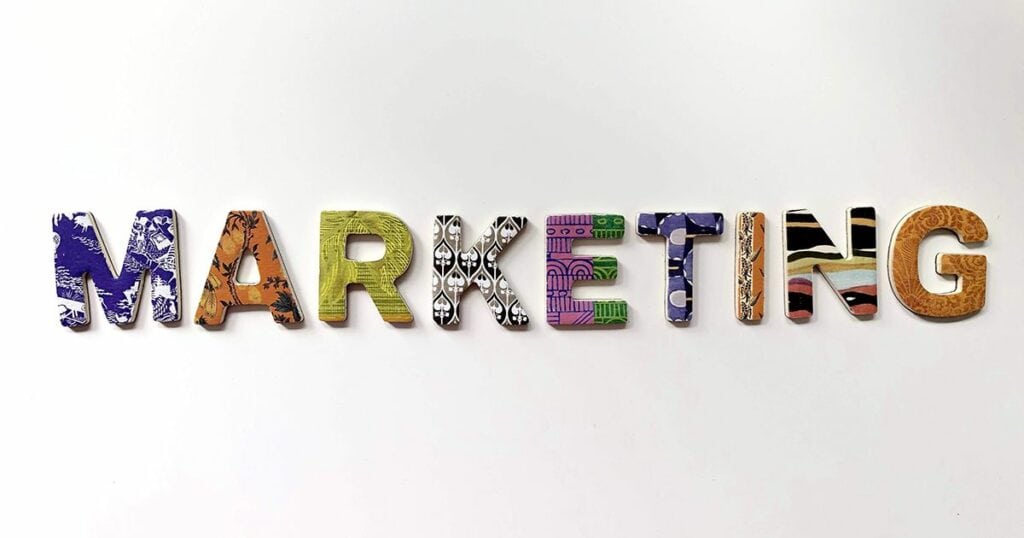
by Janelle Visser | 2 February 2024
If you build it, they will come, as the adage goes. But in today’s digital age, where anyone can build anything and put it online in moments, the question becomes: how will they find — and choose — you?
In the dynamic world of tourism experiences, the key to attracting travelers lies in successfully marketing your tours, activities and attractions. And it’s not just about attracting tourists, it’s about creating unforgettable connections that turn one-time visitors into loyal advocates for your brand.
Marketing is consistently ranked by Arival event attendees as one of the most important topics they are looking for insights on. As traveler preferences and booking habits change, so do the most effective ways to market to them.
In this comprehensive guide, we will delve into the evolution and strategies of marketing for travel and tourism in today’s digital era, providing actionable insights for tour operators and attractions, and answering key questions that every tour operator grapples with. From crafting a marketing strategy to understanding the components of a successful tourism marketing campaign, we’ll explore how to navigate the competitive and ever-evolving landscape of tour, activity and attraction marketing, and create lasting connections with your guests.
Here’s what we’ll cover:
What is Tourism Marketing?
The evolution of tourism marketing, how to create a tour marketing strategy.
- Conduct Thorough Market Research
- Identify Your Target Audience
- Understand Your Customer Needs and Expectations
- Create Unique Selling Propositions (USPs)
- Build a Strong Brand
- Consider Offline Marketing for Tours
- Embrace Digital Marketing Strategies
- Leverage Modern AI Technology
- Take Advantage of the Current Trends
- Monitor and Evaluate Your Strategy
- Navigating the Future of Tourism Marketing with Arival
At its core, tourism marketing is a strategic approach to promoting destinations, tourism products and services to tourists. For operators, this primarily means promoting your tour, activity or attraction offerings. The aim is to understand and meet the needs and wants of travelers, creating memorable experiences that encourage reviews, repeat visits and referrals.
In the context of the global tourism economy, where according to Arival’s latest data the in-destination experiences industry is expected to be worth $270 billion in 2024. Tourism marketing plays a pivotal role in the success of travel businesses, helping them to stand out above their competitors and serving as the bridge that connects them with their target audiences of travelers.
As travel marketing company Blend ’s Managing Director put it recently in an interview with Arival, “The simplest way to define [marketing] is what comes to mind when someone thinks about your brand or experience. And what you do through your marketing channels is help shape that perception.”
The landscape of marketing in tourism has undergone a profound transformation since the early 1900s when the Michelin Guide first encouraged motorists to explore the world beyond their own towns. Progressing from traditional tourism promotion methods like brochures and word-of-mouth recommendations to the digital age of Google searches and social media influencers, technology has played a pivotal role in shaping how destinations and experiences are promoted.
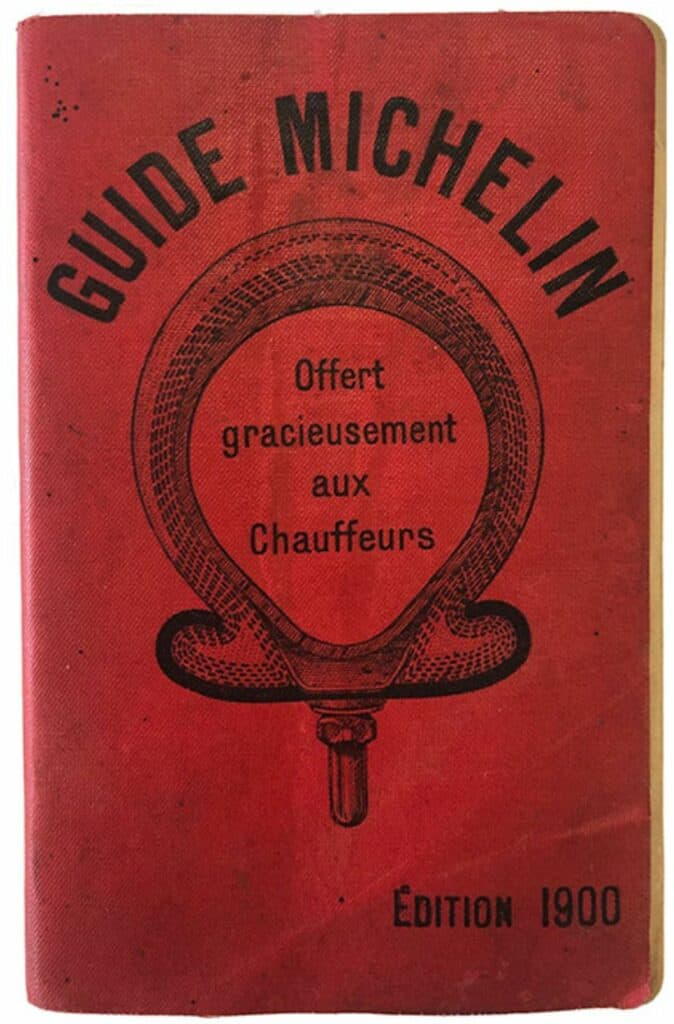
Fast forward to today, where the advent of short-form video marketing and generative AI has added new dimensions, allowing every tour, activity or attraction operator to engage travelers in innovative ways. These tools provide opportunities for engagement, personalization, and storytelling that were once unimaginable, and have become integral to captivating the modern traveler.
Successful marketing for tourism starts with a well-defined marketing strategy, which will help ensure the effort and resources you put into marketing are effective. The following steps will help guide you through the creation of a marketing strategy for your tour, activity or attraction company.
1. Tour Marketing Strategy
Understanding the market is the foundation of any effective strategy. Thorough research into customer demographics, travel patterns, and consumer behaviors will provide invaluable insights as you create your marketing strategy.
Arival conducts regular tourism market research to assist tour, activity and attraction businesses with this process. For example, Arival’s latest consumer research on the 2024 U.S. Experiences Traveler found that day tours are on the rise among U.S. travelers , and that younger millennial and Gen Z travelers in particular are moving away from traditional sightseeing tours and looking for more experiential tours , such as culinary tours and immersive experiences. See Arival’s latest research here .

2. Identify Your Target Audience
Targeting your tourism marketing plan to a specific audience is crucial, as this will enable you to enhance the relevance of your offerings, improve engagement, and maximize the effectiveness of your marketing efforts.
Identifying your target audience involves a strategic process that combines market research as described above, data analysis, competitive analysis and customer profiling. Google and social media platforms, for example, offer analytics tools that provide insights into the age, interests, geographic location and income bracket of your followers, that can help you to develop detailed buyer personas that represent your ideal customers, and create a plan to reach and engage these audiences.
In addition, analyzing the target audience of your competitors will help you build on this and identify gaps or underserved segments in the market that your tourism marketing plan can effectively target.
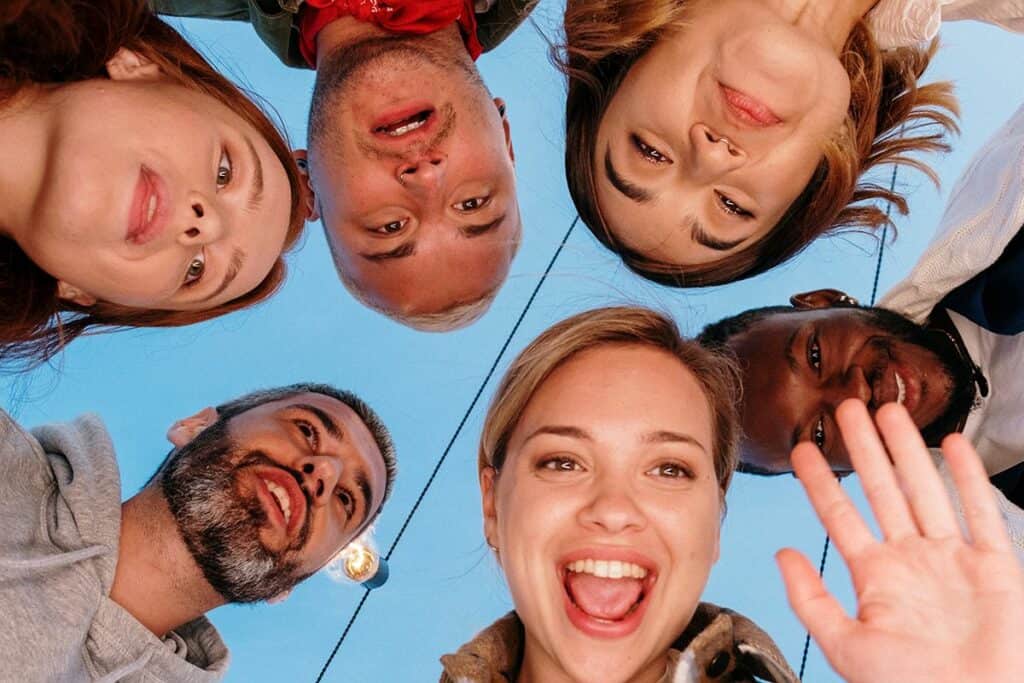
3. Understand Your Customer Needs and Expectations
Conducting tourism market research and identifying your target audience will help you with this step. Once you have an idea of who your target customers are, you can discover what their needs and expectations are, and how to develop a marketing strategy to reach them effectively.
For example, if you offer sightseeing tours and you have identified younger Millennial and Gen Z travelers from the U.S. as a demographic you want to market your tours to, you will need to go beyond sightseeing to attract this demographic, according to the latest Arival research .
How can you make your tours more immersive and experiential, and reflect this in your marketing to engage this demographic? Anticipating and meeting your customers’ needs and expectations can lead to higher customer satisfaction, fostering reviews and repeat business. Personalization is key.
30 September – 3 October 2024
Insider Pro Access Members Save 20%
THE event of the year for solutions-focused In-Destination Experience creators and sellers
4. Create Unique Selling Propositions (USPs)
One of the challenges a tourism marketing strategy needs to solve is how to make you stand out above your competitors. Why do tourists choose some travel experiences over others? One way to differentiate your offerings is by identifying and highlighting unique selling points (USPs) that resonate with your target audience.
Let’s say you have identified younger Millennial and Gen Z travelers as a group you’d like to target with your marketing efforts. In your city there are multiple competitors offering similar tour products to yours, however you’ve realized that this target audience has an affinity for food tours. You find a way to work elements of culinary tourism into your sightseeing tour offering and your marketing to set yourself above your competitors and offer something unique in your region.

5. Build a Strong Brand
A consistent, strong brand fosters trust and ensures your tour company is memorable in the minds of potential guests. You’ll be hard-pressed to find someone who doesn’t recognize the logo of an apple with a bite taken out of it, or doesn’t know where the phrase “just do it” comes from.
Brands are about more than creative logos and catchy slogans, however. Building a robust brand for your experience business involves defining a clear identity with a focused mission and incorporating those USPs described in the previous step. Then, reaching out to your target audience through engaging storytelling and content, bolstered by a strong online presence, will enable your customers to build an emotional connection with your brand. Ensuring you’re delivering high-quality customer experiences to your target audience is crucial to building trust in your brand, and encouraging positive reviews is essential to building your brand’s reputation and ensuring ongoing brand success.
Arival Insider Pro Access members can learn more about the importance of building your brand here.

6. Consider Offline Marketing for Tours
Before we go too deep into digital marketing in tourism, it’s important to recognize that traditional methods like print advertising, brochures, and partnerships with local businesses still have relevance and can complement digital marketing strategies.
Many travelers are still waiting to book their things to do until they are in-destination, which means there is an opportunity to meet these travelers where they are. For example, working with destination marketing organizations (DMOs) and other regional tourist organizations that operate tourist information centers can enable you as a tour or experience operator to get printed promotional material about your experiences physically in the hands of tourists looking in person for things to do. Reach out to destination marketers in your region to take advantage of this offline marketing opportunity.

7. Embrace Digital Marketing Strategies
As travelers increasingly use digital channels to discover, plan and book their travel, operators can and should leverage a range of digital marketing strategies to effectively promote their tours and engage with potential customers.
From Google Things to do to search engine optimization (SEO), from social media strategy to working with influencers, from effective email marketing to impactful content marketing, a strong tourism marketing plan will incorporate a variety of digital marketing elements to bring a wider audience to the top of the funnel, and engage with them throughout the funnel at various stages of their discovery, planning and booking journey.
Arival has developed a number of guides and articles to help experience operators navigate the world of digital marketing for travel and tourism. Here are a few resources:
- An Essential Guide to SEO for Tours & Activities
- Content Marketing
- Your Guide to Influencer Marketing in Travel and Tourism

8. Leverage Modern AI Technology
The popularity of AI in 2024 cannot be understated, however many companies in the travel industry have been using AI in various forms long before the release of ChatGPT in late 2022 brought Generative AI, or Gen AI to the forefront. Gen AI, though, has made it a lot more accessible for travel businesses and tourism marketers without a lot of technical expertise to integrate AI to personalize customer experiences, generate targeted content, and enhance decision-making in marketing strategies for tourism.
Many companies in the marketing for tourism space have developed tools and resources for tour, activity and attraction businesses, some of which are listed on Arival’s list of AI Resources for Experience Operators . Find out more about what’s the latest with AI in travel and how tour and attraction businesses are using it at the next Arival event.

9. Take Advantage of the Current Trends
Staying up-to-date with the latest digital trends in marketing for travel and tourism is essential to stay relevant and get ahead of your competitors.
For example, over the last couple of years, short-form videos on platforms like TikTok have risen dramatically as a channel for travelers — younger Millennial and Gen Z travelers in particular — to find inspiration for travel experiences. Incorporating vertical and short-form video in your tourism marketing will help you engage this audience, enabling you to meet travelers where they are online and present the experience offerings of your tour, activity or attraction company in a format your audience is familiar with.
@j_buzzi I don’t think I’ll ever get over how amazing bioluminescence is! 🤯🌌 #bioluminescence #getupandgokayaking ♬ Another Rain (From “Halo 3: ODST”) – DS Music
Justin Buzzi , founder of Get Up and Go Kayaking , jumped on the vertical video trend and attracted millions of views and over one million likes on TikTok with this short bioluminescence video.
10. Monitor and Evaluate Your Strategy
A strategy without evaluation is like a ship without a compass. Regularly assess the effectiveness of your marketing strategy using key performance indicators (KPIs). KPIs to monitor the effectiveness of your marketing strategy could include website traffic, conversion rates, social media engagement, booking levels, and customer reviews and ratings. Consistent monitoring and evaluation ensure that you not only navigate the course but also make agile adjustments, keeping your strategy aligned with the ever-shifting tides of the tourism market.
1. What are the key components of a successful tour marketing campaign?
Success lies in a well-researched strategy with clear targeting built on tourism market research, compelling USPs that speak to the needs and expectations of your target audience, and a strong brand built on a balanced mix of offline and digital marketing, as well as a compelling tourism experience product itself. All of these components work together to make for a successful marketing strategy.
2. How often should I reevaluate and update my tourism marketing strategy?
In the world of tourism marketing, trends and traveler preferences change rapidly. Check in regularly with travel trends (and let Arival research guide you). While you might evaluate the effectiveness of your overall strategies quarterly to stay responsive to market changes and ensure your strategy remains effective, more frequent monitoring of individual social media channels, website KPIs and SEO will help you be that much more effective.
3. How can I optimize my website for tour marketing purposes?
Your website is your digital storefront. Prioritize content marketing , then optimize for search engines ( learn more about SEO here ), ensure seamless user-friendly navigation and online booking system capabilities for both computer and mobile booking , incorporate visually captivating elements like photos and videos, keep your pricing and product listings up to date, and update your content regularly.
4. Are there any specific strategies to attract international tourists?
To attract international tourists, consider ways to tailor your marketing messages for the specific regional audiences you’re interested in reaching. Look at tourism market research and trends for the different regions you intend to target — what works in the U.S. might not work in Asia and vice versa. Your local and regional destination marketing organizations (DMOs) may be able to help with this, as destination marketers often conduct research on the international travelers coming to your destination. Consider utilizing multilingual content to reach a broader range of potential travelers, and explore partnerships with international travel agencies. Check out Arival’s list of OTAs organized by geographic region to help you identify potential distribution partners in other languages and regions.
5. How important are customer reviews and testimonials in tour marketing?
Customer reviews and testimonials play a crucial role in tour marketing, acting as powerful social proof that influences potential customers. Positive reviews build credibility and trust, addressing concerns and reservations prospective customers may have. Encourage your satisfied customers to share their experiences on platforms like TripAdvisor or Google, or wherever they booked, and don’t forget to respond to these reviews, whether positive or negative.
6. What are some unique challenges in tourism marketing compared to other industries?
Tourism marketing faces unique challenges such as seasonality, unpredictable external factors (e.g., natural disasters ), and the need for real-time adaptability to changing travel trends. High competition demands innovative strategies to stand out, and the reliance on positive word-of-mouth makes ensuring customer satisfaction even in the face of unpredictable challenges critical.
7. How can I use tourism marketing to cope with seasonal fluctuations in the industry?
To cope with seasonal fluctuations, craft seasonal promotions, diversify offerings to match changing preferences, and use marketing to highlight the unique experiences available during different seasons. Some strategies include implementing targeted off-season promotions, creating incentives for bookings during slower periods, and developing themed tours or events that align with seasonal interests and capitalize on festivals or holidays. Implementing dynamic pricing strategies , where prices vary based on demand, can also help maximize revenue during peak seasons and encourage more visitation during slower periods.
Navigating the Future of Tourism Marketing With Arival
Success in tourism marketing lies in learning about your audience, developing practical strategies to reach them, constant adaptation to keep up with changing market conditions and traveler trends, and utilizing tools and research like what Arival provides to stay ahead in a competitive landscape.
Keep in mind that you don’t have to do this alone. There are multiple marketing agencies out there that specialize in marketing for travel and tourism companies, with some even focusing specifically on tours, activities and attractions. Check out our curated list of the tourism marketing agencies for tours and attractions here.
Even better, join us at the next Arival event where we’ll dive into the latest tourism market research insights and trends in travel experiences, and share practical tourism marketing strategies and other actionable takeaways to help you reach your target markets, increase your bookings and grow your business.
Become an Insider Pro Access member today and get access to the full library of Arival research, plus many other benefits such as free consulting sessions, special discounts and 20% off in-person events, starting from $179 per year.
Sign up to receive insights tailored for the in-destination industry as well as updates on Arival.
Header photo: Unsplash / Merakist
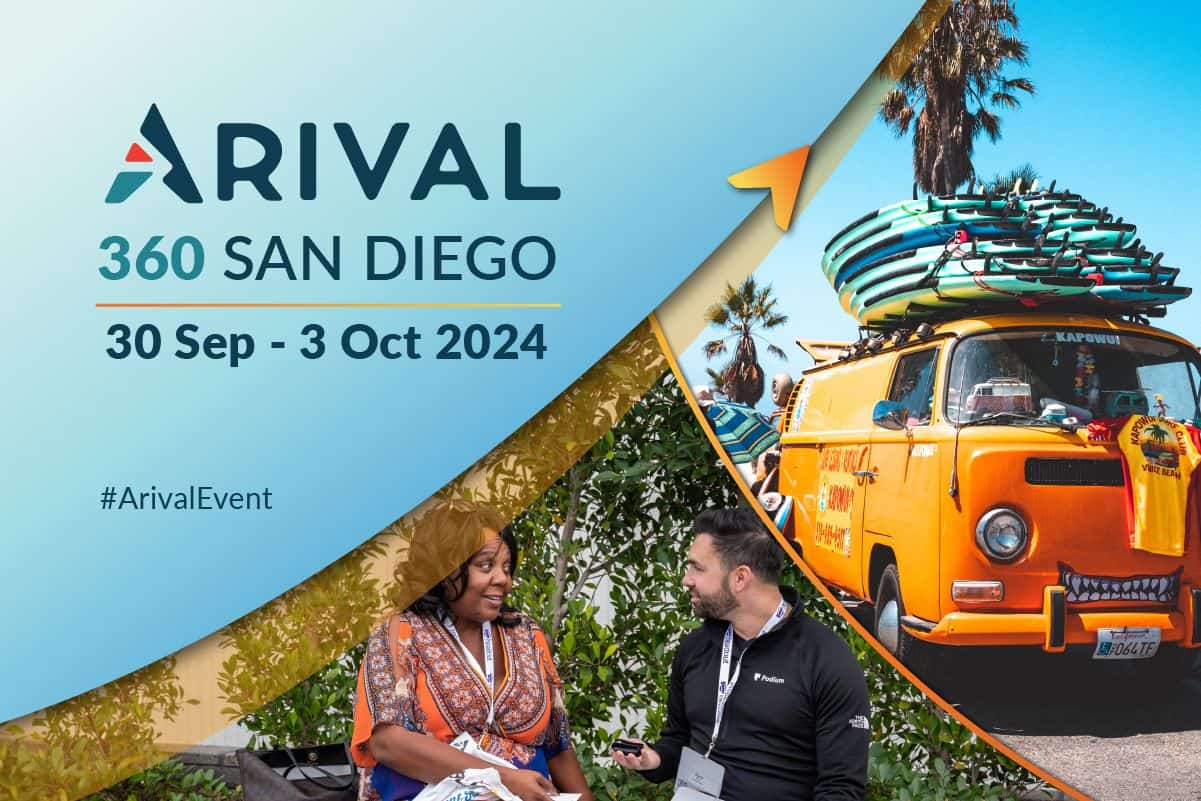
Online Booking or Bust — Mobile Ticketing Top Choice for Event Travelers

Innovation, AI & Personalization Dominate Discussions at Arival 360 | Berlin

The Power of Play

“In My Travel Era” — Taylor Swift, Beyonce Usher in an Event Tourism Renaissance
Already a member.
Username or Email
Remember me
Lost your password?
NEED TO REGISTER?
Included in Free Membership
Included in Arival Pro Membership
The Arival on-demand video library archive Access to the entire library of over 150 video sessions and webinars
Arival.guides Short, digestible research & trends reports delivering insights into our industry, such as The Tour Operator Outlook for 2021.
Arival.travel articles Topical articles about marketing, tech, operator business and operator stories in all areas of tours, activities & attractions & experiences
Job board access Find a job from our regular listings, post a resume to the talent network and learn strategies from the job resources articles
New webinars Helpful, instructional sessions covering subjects such as Mastering Facebook Ads, Grow Your Business and How To Work With OTAs — topics to help advance your business.
Discounts on all Arival in-person events 20% Discount on all Arival in-person events (save up to $300)* based on business type
Arival ProShield – Insurance program Access to tailored insurance solutions by Granite Insurance is available exclusively for Arival Insider Pro Access Members. Insider Pro Access Members also have access to a suite of resources from Granite Insurance including templates, forms and other informative documents.
Insiders Pro Access member exclusive webinars Paid membership-only webinars to deepen your understanding of important industry topics.
Job postings & talent directory Post jobs & connect with candidates most applicable to your business.
Private roundtables to connect, learn and engage Small, focused and intimate discussions exclusive to Arival Insider Pro Access members.
Full access to Arival’s library of in-depth reports Up to date, deep analysis of tourism topics ranging from Self-guided Tours to Sales & Distribution Trends and Outlooks, based on the data that defines the industry.
The latest on-demand videos Over 350+ on-demand videos featuring hot topics in tours, activities & attractions
Insider discounts in digital marketing, tech, e-learning, and more Save money on additional tools, services and learnings you need to run your business. Exclusive to paid members.
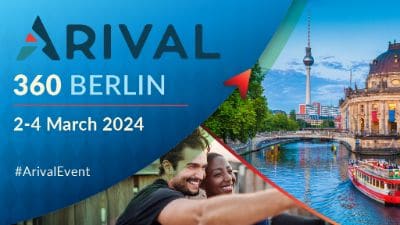
At Arival, we believe travel can make the world a better place. Our mission is to establish and inspire a diverse community of individuals and companies in the In-destination Industry by providing opportunities to gain insight, share knowledge and build connections. To make it possible for true collaboration, creativity, innovation, and idea exchange to thrive, we are committed to facilitating a welcoming and respectful community for all. This Conference Code of Conduct shares our community expectations and applies to all attendees, employees, exhibitors, speakers, sponsors, volunteers, and other participants at Arival- produced and sponsored events. We empower all participants in our community to actively engage in creating a friendly, inclusive and safe environment for all.
Arival’s core values include the following, and create an expectation for conduct at our events and in online community spaces:
We demonstrate a deep respect for human beings inside and outside our company and for the communities in which they live. We value integrity and strive to consistently interact with others in ways that are authentic, ethical, and fair. We are dedicated to transparency , committing to clear, open and honest communication. We actively pursue and advocate for inclusion, diversity and representation of varying cultural backgrounds, perspectives and ideas
Arival welcomes people from all cultural backgrounds, and does not discriminate on the basis of race, color, creed, gender (including pregnancy, perceived pregnancy, childbirth, breastfeeding, or related medical conditions), gender identity, religion (including religious dress and grooming), marital status, domestic partner status, genetic information, age, national origin or ancestry, military or veteran status, sexual orientation, physical or mental disability, or any other basis protected by federal, state, or local laws.
Accordingly, participants must refrain from displaying any demeaning, harassing, aggressive, or intimidating behavior or materials that would interfere with others’ experience and participation in our community.
If you witness or are subjected to inappropriate or disruptive behavior or have any other concerns, notify an Arival staff member as soon as possible.
Inappropriate or disruptive behavior will not be tolerated. Arival reserves the right to refuse entry to or remove any party from any event or community space at any time when participation or behavior create a disruption or hinder the event or enjoyment of the event by other participants. All determinations are at the sole discretion of Arival, and the decision of the Arival team will be final. Severe breaches of this Conference Code of Conduct may result in disqualification from participating in future events. Individuals expelled due to violating this Conference Code of Conduct will not be eligible for a refund or other consolation.
If you have questions regarding this Conference Code of Conduct or its implementation, please contact us at [email protected] .
Privacy Overview
Experiences refined for people
The Top 12 Travel Marketing Trends Defining 2024

Erik Stubenvoll
Wanderlust is revitalizing the travel industry.
Amidst this boom, travel advertisers rebounded with post-pandemic vigor, boosting ad spending by 15% in 2023 over the previous year.
Explore these 12 travel marketing trends that illustrate an industry recovering and reimagining its future.
1. Alternative ID-free targeting methods are surging in the new cookieless advertising era
With increasing concerns over privacy and Third-Party cookies’ impending phase-out , travel marketers must rely more on alternative methods like First- and Second-Party data, contextual marketing, cross-device audience targeting, and more.
Below are the top targeting strategies you’ll see to in response to this cookieless trend:
1. First-Party Data
First-Party (1P) data , collected directly from customer interactions, is now the gold standard in travel advertising. This includes data collected through direct interactions, like website visits, app usage, customer feedback, and booking histories.
Travel brands use this data to understand where and how their core customers interact with digital marketing placements.
2. ID-Free Artificial Intelligence (AI) & First-Party
ID-free targeting combines AI with First-Party data to analyze anonymous digital journey patterns, creating a map to identify the actions of similar website visitors.
Advertisers can tailor their model using their own First-Party data to forecast and choose impression opportunities.
3. Second-Party Data
Collaborating with trusted partners to use Second-Party data involves collecting data through deterministic processes like login IDs, providing a more accurate and scalable way to target specific audience segments.
4. Contextual Marketing
Contextual marketing targets ads based on the content currently being viewed by users, replacing the need for Third-Party data.
Contextual marketing matches ads with the user’s current interests and the webpage’s theme, enhancing relevance and audience engagement.
AI-powered contextual marketing analyzes audience actions in real time to identify engagement patterns, enabling brands to target similar content to new audiences at optimal moments.
Travel marketers should explore and implement cookieless solutions, experimenting with strategies that best align with their brand and audience to stay ahead this year.
💡 The Takeaway
Travel marketers must adopt cookieless targeting strategies like First- and Second-Party data, ID-free AI, and contextual marketing to achieve precise, privacy-compliant audience engagement.
2. Sports tourism is very popular amid the Paris Olympics & other big events
Sports tourism will continue to surge in 2024, fueled by high-profile events like the Paris Summer Olympics , the FIFA World Cup , March Madness , and the Super Bowl , where tourists book travel tickets at least a year in advance.

The appeal of sports tourism is growing due to new tournaments and a rise in women’s sports participation, including events like the Women’s Big Bash League and the women’s edition of the Indian Premier League.
Increased government funding, initiatives to promote sports tourism, and a rise in young athletes are also major influences.
Travel marketers can take full advantage of this surge by integrating strategies, such as advanced TV advertising strategies like Connected TV (CTV) and Picture-in-Picture (PiP) (a type of interactive CTV) advertising , as well as advertising on Free Ad-Supported Streaming TV (FAST) channels.
PiP allows viewers to watch live sports and other content, allowing travel brands to present appealing packages during these events.
Sports tourism’s rising popularity, driven by major events like the Paris Olympics and increased women’s sports participation, presents a significant opportunity to use advanced advertising strategies and tap into this growing market.
3. Video content to expand target audiences & enhance website traffic
Integrating traditional blog posts with concise, visually engaging video content on platforms like TikTok and Instagram greatly enhances a brand’s reach and website traffic potential.
TikTok’s user growth–approximately eight new users every second –highlights video content’s potential to reach a broad audience. This trend isn’t lost on travel companies, which they use to engage customers better.
Video content for travel marketing serves multiple purposes:
- Sharing Holiday Experiences: Travel companies use videos to give potential customers a glimpse of the experiences that await them, making these destinations more tangible and inviting.
- Highlighting Destination Information: Videos provide a dynamic way to showcase the attractions and uniqueness of a country or destination, offering viewers a virtual tour that text alone cannot match.
- Presenting Activities and Experiences: Through video, travel brands can vividly depict the range of activities available at a destination, from adventurous excursions to relaxing retreats, engaging viewers with the possibilities.
- Conveying the Destination’s Essence: Videos enable travel companies to capture and convey the essence of a destination – its culture, scenery, and atmosphere – creating a compelling narrative that draws viewers in.
Online video (OLV) and Connected TV (CTV) have also opened new avenues for reaching families and larger audiences, especially using cross-device targeting.
For example, a family watching a Royal Caribbean cruise ad on CTV is later targeted with personalized smartphone follow-up offers, enhancing engagement and allowing travel marketers to track the ad’s effectiveness across multiple platforms.
💡 The Takeaway Integrating visually engaging video content, such as on TikTok and Instagram, alongside traditional blog posts can significantly expand a travel brand’s reach and website traffic potential, engaging viewers with immersive storytelling.

4. TikTok emerges as a modern travel guide to engage younger audiences
TikTok has transformed travel guides, with videos replacing traditional blog posts as the go-to source for travel inspiration and information.
Since 2021, TikTok has seen a staggering 410% increase in views of travel content, with 71% of European users likely to book a holiday based on TikTok recommendations.
🌴 TikTok Made Me Travel There 83% of Spanish users would consider a travel product or activity after seeing it on TikTok.
TikTok’s community craves content that stirs wanderlust, showcasing unique destinations and experiences.

TikTok’s findings on the top travel content for 2023.
Travel brands should align their content strategy with the top emerging TikTok travel trends and user preferences, such as:
- Luxury Travel: Many users discover affordable luxury destinations on TikTok, increasing interest in these experiences. Brands should showcase any luxury options.
- Domestic Travel: As travel preferences shift towards more local experiences, brands should highlight unique local travel experiences.
- Sustainable Travel: Sustainability is a growing concern among TikTok users, with hashtags like #SustainableTravel and #EcoTourism drawing millions of views. Travel brands should promote eco-friendly and sustainable travel options.
Adapting to these trends, travel brands can inspire, engage, and connect with a travel-enthusiastic audience.
TikTok is a prime platform for travel inspiration and recommendations. Travel brands should align their content with emerging TikTok travel trends like luxury, domestic, and sustainable travel to engage younger audiences effectively.

5. Influencer marketing is a resurgent force, especially on TikTok
According to a MediaRadar report, as major travel categories (e.g., airlines, lodging, rental car companies) ramp up their marketing efforts, a substantial portion of their budgets is allocated to partnerships with creators and influencers.
Influencers, with their large followings and ability to generate authentic content, offer a personal touch and a sense of trust that traditional advertising channels often can’t match.
Local influencers help draw their following to restaurants and other locations in the area.
@gracietravels i bet you didnt know about these! 🫣 ✈️ #travelhacks #traveltiktok #travelfyp #travellife #traveltips #travelhack #traveltok ♬ original sound – grace | TravelCreator✨
Gracietravels shares helpful dos and don’ts for various exotic locations.
As travel marketing continues to surge, much of marketing spending will likely go to creator partnerships, increasing total influencer marketing spending.

Influencer marketing is returning, particularly on TikTok, with significant budgets allocated by major travel categories for partnerships with creators who offer authentic and trustworthy content.
6. Eco-tourism is a rising star, especially among younger travelers
Ecotourism focuses on travel experiences that preserve and sustain natural environments while improving the welfare of local populations.
A lust for more outdoor travel experiences, urbanization, and affordable flight availability primarily drives ecotourism’s popularity. Generation Y (millennials) dominates ecotourism, with 60% of the share and spending $200 billion on travel.
For example, #SustainableTravel boast s 78.1 million views, and #EcoTourism garnered 72M views on TikTok.

Booking.com found that 76% of survey respondents planned to travel greener, up 15% from 2021. 55% of travelers seek off-the-grid vacations for escapism, with 44% preferring simpler travel experiences.
Hotels are increasingly committing to go carbon-neutral by 2050 or earlier to appeal to eco-conscious travelers. The Brutalist-style Hotel Marcel Hilton in Connecticut is the first net-zero carbon emissions hotel in the United States.
Travel marketers can tap into these younger generational and eco-conscious segments by focusing on eco-friendly and unique travel experiences in their campaigns.
Ecotourism is on the rise, driven by the popularity of outdoor travel experiences and younger generations like Millennials and Gen Z. Travel marketers can cater to eco-conscious travelers by highlighting sustainable initiatives.
7. Virtual reality offers virtual tourism opportunities
As VR technology becomes more sophisticated and accessible, it opens up new opportunities for consumers and advertisers.
Innovative services like Discover Live and Wowzitude , are offering interactive virtual vacation tours, allowing users to experience destinations before they decide to visit them in person.
Companies like Meta are enhancing the VR experience, with products like the Oculus headset offering virtual tours of world-renowned sites, such as the reconstruction of Notre Dame.
Platforms like Renderverse and Avatour provide VR-based real estate and travel tours, allowing users to explore properties and destinations remotely.

The VR space also opens up the potential for partnerships and sponsorships. For instance, theater groups could secure corporate sponsorships by integrating ads into their VR performances.
Despite its growing popularity, VR technology is still evolving. Users want high-quality, real-time experiences to share with friends, pushing the boundaries of current VR capabilities.
Virtual reality (VR) technology offers immersive virtual tourism experiences and advertising opportunities, driven by innovative services and products, but the demand for high-quality, real-time VR experiences continues to challenge its growth.
8. Adapting to SEO & local SEO in the AI age
Advanced AI models like Google’s Gemini signal a trend toward AI-generated content rich in quality and relevance. Gemini can understand diverse formats like text, images, and even audio.
Google’s Search Generative Experience will integrate diverse content formats like videos, web stories, and podcasts in SERP (search engine results pages) optimization to directly engage users from the search results. A consistent and diversified presence across these channels can help travel brands capture more organic traffic, complementing paid search strategies.
For travel marketers, the increasing need for personalized, localized, and experiential local strategies signifies a shift towards creating more immersive and region-specific content.

Create content that resonates with the local culture and experiences. This includes local posts, stories about the area, and highlights of unique local attractions.
In the AI age, travel marketers should prioritize creating immersive and localized content to enhance SEO and engage users effectively.

9. Travel apps are transforming how travelers organize trips
Travelers have a growing demand for travel apps, with the industry witnessing a 53% increase in the last year.
These platforms serve as digital travel agencies, offering a seamless interface for managing bookings, accommodations, and activities. They offer convenience without juggling various booking sites and the fear of falling into tourist traps or overpriced services.
As digital tools for trip planning become more popular, opportunities in marketing partnerships, targeted ads, and direct customer engagement grow. Booking.com leads with its intuitive design and broad booking capabilities.

Meanwhile, niche apps like TakeMeOutOfOffice , Brevity , and LetsBatch cater to unique travel needs, offering specialized services for leisure breaks, business trips, and group travel, respectively.

10. Return to hotels in the face of Airbnb’s growing challenges
Despite financial prosperity, with bookings hitting unprecedented highs and the company celebrating its first full profitable year in 2022, Airbnb confronts a mix of discontent from guests, hosts, and cities alike.
Issues range from the platform’s rising costs to the mismatch between online portrayals and actual accommodations, alongside stringent regulations from cities aiming to curb short-term rentals.
Airbnb listings surpass available apartments:
- Airbnb listings outnumber available apartments in NYC areas (Manhattan, Brooklyn, northwest Queens).
- Asheville, NC: 2,881 Airbnb properties vs. 250+ long-term rentals.
- Austin: 12,205 Airbnb listings vs. 3,700 long-term rentals.
Airbnb’s growing challenges, including rising costs, regulatory pressures, and guest dissatisfaction, are driving a noticeable shift of some travelers back to traditional hotels.
11. New Airbnb-style car rental companies are taking off
Skyrocketing rental car prices were a popular frustration during pandemic-era travel stories, hitting record highs in July 2021. Turo , a peer-to-peer car-sharing platform, allows car owners to rent their own cars to regular people, like an Airbnb for cars. The global car-sharing market surpassed $2 billion in 2020 and is expected to grow at least 20% annually through 2027. Taking advantage of the industry’s growth, other companies like Getaround and Car Shair are quickly following. These platforms cater to a growing consumer demand for more accessible, cost-effective, and flexible car rental options. Whether or not it will face the same fate as Airbnb is yet to be decided, though it is certainly challenging traditional rental agencies.
The rise of peer-to-peer car rental platforms signifies a transformative shift towards economical and personalized transportation options, challenging traditional rental models.
12. Travelers want nostalgia & more family time
A staggering 88% of travelers desire nostalgic getaways that hark back to yesteryears—be it visiting locations of retro film fame or opting for bus travel reminiscent of school excursions. 23% of travelers, including millennials and Gen Z who have not experienced it firsthand, are yearning for pre-digital charm, seeking an escape to a simpler time. This sentiment is fueling interest in popular destinations in the ’80s and ’90s, such as Budva in Montenegro and Bolzano in Italy, both trending locations in 2023. Furthermore, family travel is evolving, with 54% of respondents planning multi-generational trips or “family reunion” vacations.
There’s an increasing demand for nostalgic travel and multi-generational family trips. Offering competitive Child Rates is a strategic move to capitalize on this trend. Such initiatives can potentially boost family bookings by 15% on average.
Travel Advertising Trends in 2024
The shift towards cookieless advertising, the rise of sports tourism, the dominance of video content, and the growing influence of platforms like TikTok and VR technology are redefining how travel brands engage with their audiences. With a stronger focus on eco-tourism and the integration of AI in SEO strategies, travel marketers are poised to deliver more personalized, immersive, and sustainable travel experiences. Adapting to these trends will help travel brands stay ahead in a competitive market and meet diverse traveler needs around the globe.
About the Author
Erik Stubenvoll is a Managing Director at KORTX with over 20 years of experience. When he is not learning about his client’s goals, he is on the sidelines with his wife at his daughter’s softball and soccer games or on the golf course.
Latest Stories
Here’s what we've been up to recently.
Kampus April 2024 Release Details
Jess Ostrom
April 5, 2024
5 Exceptional Fast Food & QSR Ad Examples
Eric Simone
April 4, 2024
March 2024 Google Algorithm Update: AI-Generated Spam Removed
Josh Pettovello
April 3, 2024
Get our stories delivered
From us to your inbox weekly.
Blog / Digital Marketing / Top 20+ Digital Marketing Strategies for Travel Agencies in 2024
Top 20+ Digital Marketing Strategies for Travel Agencies in 2024
Posted by gmi blogger posted in digital marketing.
In 2024, the question is not whether to invest in digital marketing, but how to do it effectively.
As your travelers are digitally connected, digital marketing has become the primary avenue to reach customers.
A prime example of this is Nova Scotia’s ‘Stay Longer ’ digital marketing campaign, which stands as a testament to the power of digital marketing in creating meaningful connections with audiences and promoting unique experiences.
This leaves no room for doubt about the necessity of digital marketing in the travel and tourism business.
As the digital world is ever-evolving, strategies that worked yesterday may be outdated today.
With this in mind, this article will guide you through the top 20 digital marketing strategies that are poised to make a significant impact in the travel industry this year.
Top 20 Digital Marketing Strategies for Travel Agencies
Digital marketing strategies for travel agencies must be current and innovative.
Every potential traveler enjoys staying updated with the latest gadgets and technologies.
Therefore, relying on outdated strategies may result in missed opportunities to connect with them.
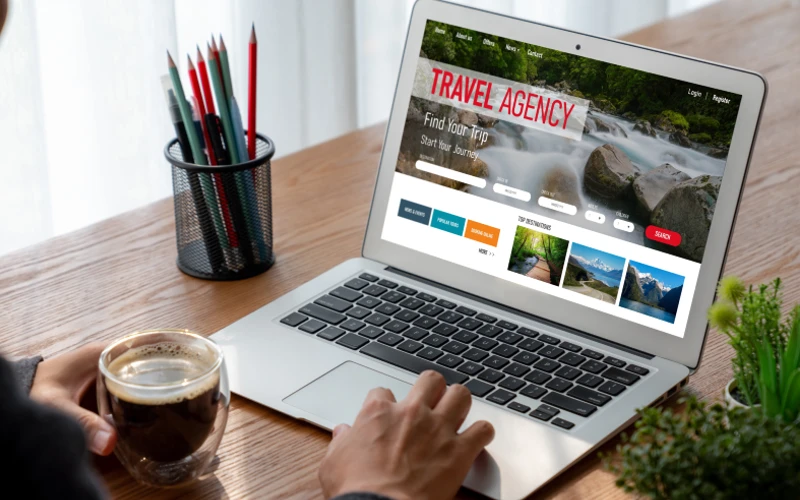
Let us explore the top 20 digital marketing strategies for 2024 below:-
1. Develop a user-friendly website
A user-friendly website is an essential part of a digital marketing strategy for travel brands in 2024.
Having a good mobile-friendly website helps in many ways.
The website for a travel brand should have an easy-to-use layout that makes choosing and booking trips simple.
Along with appealing destination images, website visitors can be welcomed with other useful information like trip guides, travel advice, and so on.
It is also good to provide travelers with a chance to share their experiences via social media channels that are part of the website.
If the website suggests customized itineraries based on the data received from the website, customers are enticed to explore more.
2. Use server-side tracking
As privacy concerns shape the digital landscape, Server-Side Tracking ensures enhanced security and privacy compliance by shifting data processing from browsers to servers.
This not only safeguards user privacy but also provides more accurate insights into their behaviors.
It sets the stage for a more secure and informed marketing approach.
It’s a pivotal step to adapt to evolving privacy regulations and diminish the reliance on third-party cookies.
This fosters better relationships with your audience through responsible data management.
3. Mobile optimization
A large portion of tourists today utilize mobile devices for trip planning and booking, thus mobile optimisation is an essential component of any digital marketing plan.
As search engines like Google favor mobile-friendly websites, a site that is optimized for mobile devices not only enhances user experience but also helps with search engine rankings.
4. Create high-quality content
Crafting compelling and informative content is crucial for travel agencies to attract their audience.
By providing valuable insights into destinations, travel tips, and unique experiences, agencies establish themselves as authoritative voices in the industry.
Quality content contributes to enhanced search engine visibility, creating a narrative that entices potential travelers.
Shareable blog posts, visually appealing multimedia, and engaging social media content foster connections and attract organic traffic.
This strategy not only boosts the agency’s reputation but also cultivates customer trust and loyalty in the competitive digital landscape.
Creating quality content is the key to standing out and making a lasting impact in the travel sector.
5. Email marketing

In 2024, sending tailored emails to subscribers is a key component of email marketing for travel brands.
These emails frequently include bargains, travel advice, and information about popular destinations.
The secret is to send different postcards to different people.
You group the items on your list according to what the travelers enjoy.
Beach lovers receive beach-themed emails, and mountain fans receive snow-themed updates.
These emails heavily rely on visual components, such as eye-catching graphics and tailored recommendations.
Metrics like open rates and click-through rates are used to understand the effectiveness of e-mail marketing.
6. Social media marketing
Social media marketing can help travel companies in a variety of ways.
For example, social media sites like Instagram display breathtaking images of distinctive lodgings and entice tourists to visit new places.
Also, specialized Facebook advertisements make sure the right people see their services.
Paid promotions on social media not only bring in more visitors but also aim at the right audience.
Quick updates, engaging content, and happy customer stories create a direct connection, building trust with potential travelers.
Using the active nature of social media, travel agencies can stay in the spotlight.
They can use it as a strong tool for advertising, connecting with customers, and building loyalty in the competitive travel industry.
7. Paid advertising campaigns
Along with organic traffic, travel businesses should also invest money in paid advertising campaigns in 2024.
This pushes their website into a prominent position in the paid search results, helping travelers find them quite easily.
To retarget potential clients who have already visited their website, they should also run display ads on a variety of websites.
Using platforms like Google Ads and Facebook Ads, agencies can accurately reach the people they want.
Well-made ads with catchy words and appealing pictures don’t just make more people know about the brand but also bring in measurable results.
8. Influencer marketing
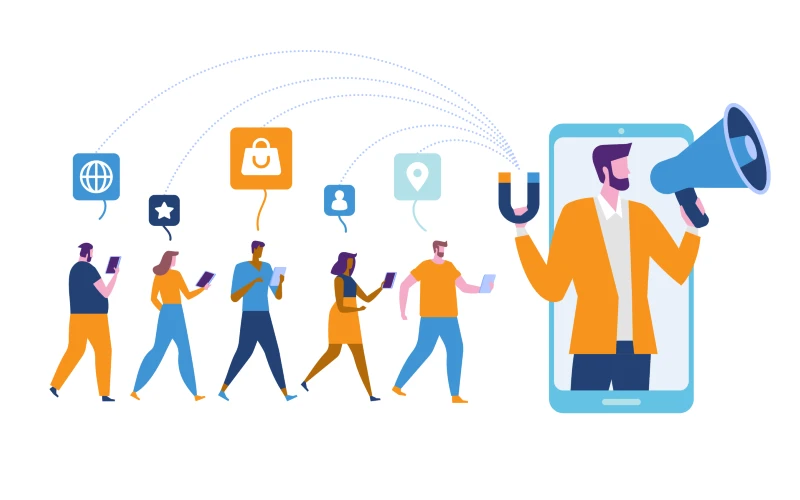
Influencer marketing is the trending marketing strategy of 2024.
The technique is quite simple, a travel brand teams up with an influencer with a large social media presence.
This influencer in turn creates engaging content showcasing the agency’s premium packages, staying at luxurious resorts, and experiencing exclusive activities.
The followers are easily enticed to book their trips through the travel agency.
9. Video marketing
Videos provide a dynamic medium to convey the fun of travel.
Things like live streams and behind-the-scenes footage can foster real-time connections with potential travelers.
Therefore, all travel agencies should consider adopting a video marketing strategy in 2024.
This can help them effectively showcase their destinations and services, as demonstrated by Airbnb’s “ Live There ” campaign.
In this campaign, local hosts crafted short videos sharing their experiences in various locations, establishing a heartfelt connection with the audience.
This emotional engagement inspired viewers to explore vacations with Airbnb.
Platforms like YouTube, Instagram, and TikTok serve as excellent avenues for sharing immersive travel stories, ranging from virtual tours to destination highlights.
10. App marketing
In 2024, it’s crucial for travel agencies to create a user-friendly app, considering everyone’s on their phones.
Promoting the app through email campaigns, social media, and teaming up with travel influencers is essential.
Offering special discounts or in-app perks can motivate users to download and use it.
To maintain a positive app reputation, regular updates, good user feedback, and helpful customer service are necessary.
Agencies can use push notifications to share exclusive deals and updates directly with users.
The app becomes a convenient solution for managing itineraries, booking services, and accessing real-time travel info.
Exclusive app promotions boost downloads and repeat usage, while integrated loyalty programs and personalized suggestions not only build brand loyalty but also provide valuable insights for refining services.
11. Virtual reality (VR) and Augmented reality (AR)
Imagine giving visitors the option to virtually explore hotels or destinations before making a reservation, all from the comfort of their homes.
Marriott Hotels is a noteworthy example of a company that has adopted this digital marketing strategy.
The “VRoom Service,” introduced by Marriott Hotels, allows visitors to order VR headsets for their rooms.
These headsets allowed visitors to take virtual tours of numerous travel locations, which ultimately piqued their interest in making new travel arrangements.
Along with raising brand engagement, this immersive experience also enhanced reservations and consumer happiness.
Similar to other industries, travel companies can use VR and AR to offer immersive previews of their products, letting clients “try before they buy” increasing their excitement and knowledge of their travel choices.
12. Geo-targeted SEO
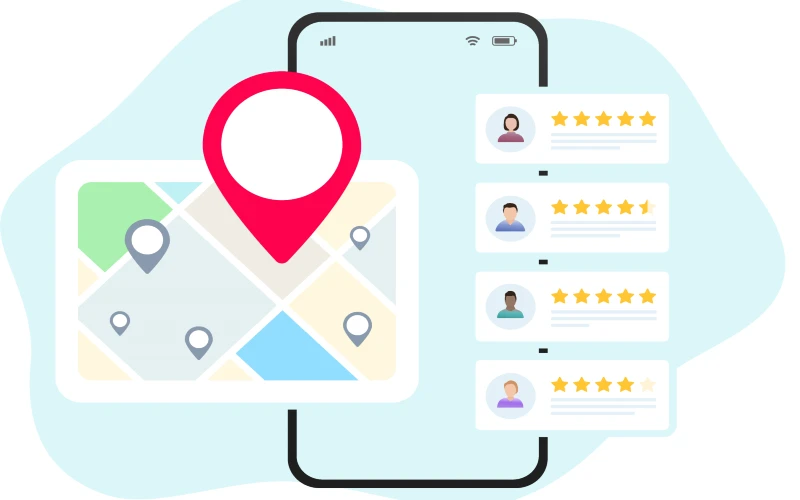
Geo-targeted SEO is a strategic method that focuses on targeting audiences, enabling travel businesses to engage with travelers who are actively searching in specific geographical areas, thus boosting the chances of conversions.
In the competitive world of travel, SEO not only helps maintain competitiveness but also ensures efforts are directed towards the right audience.
The use of geo landing pages, local SEO optimization , and the creation of localized landing pages all contribute to increased visibility, improved user experience, and higher traffic for travel businesses.
From keeping Google Business Profiles updated to managing online reputation, every aspect of local SEO services enhances the broader Geo-targeted SEO strategy, ensuring that travel brands excel and prosper in the digital world.
13. Retargeting and remarketing
Retargeting and remarketing are essential digital marketing techniques in 2024.
They entail showing customised advertisements to visitors who have browsed the agency’s website or connected with their content in the past but haven’t made a reservation.
For instance, if a user looks up flights to Paris but leaves without booking any tickets, the algorithm will track the user and remind them of tempting offers on flights or hotel bookings in Paris.
This retargeting or remarketing technique maintains the agency’s name in the consumer’s mind.
14. Social media utilization
Social media platforms, with their vast user bases and visual appeal, offer effective ways to reach and engage potential travellers.
They provide targeted advertising, influencer collaborations, e-commerce integration, and analytics tools, all of which offer additional benefits to travel agencies.
Being present on these platforms ensures brand visibility, builds trust, and allows for adaptability to evolving consumer trends, making it a crucial strategy for success in the competitive travel industry.
In addition to their core features, these platforms often introduce new initiatives that can benefit businesses in the travel sector.
For instance, in 2022, Meta launched the #ReelAdventures campaign to promote the use of Facebook and Instagram Reels for sharing travel experiences in Kenya.
This campaign was a huge hit among travel enthusiasts.
In 2024, travel agencies can tap into such campaigns or create similar ones to engage with their audience and promote their offerings in a more interactive and personal way.
15. Chatbots and live chat

Leveraging tools like chatbots and live chat can significantly enhance a travel agency’s ability to respond swiftly to customer inquiries.
A chatbot can provide instant information on various locations or packages, addressing traveler inquiries promptly and efficiently.
This immediate response system can greatly improve customer satisfaction.
On the other hand, live chat offers a more personalized touch.
A live chat representative can provide tailored recommendations based on the specific needs and preferences of the traveler, significantly enhancing their journey and making them feel valued and understood.
16. Social media contests and giveaways
To boost their online presence, travel agencies can run fun contests on Instagram, Facebook, or Twitter.
By giving away cool travel prizes, they get people excited and motivated to share with friends.
This not only spreads the word but also creates a sense of community and loyalty.
Social media contests are a great way for agencies to connect with users, making them more aware of the brand.
These contests create buzz and draw in potential travelers who want to explore what the agency has in store.
17. Google my business
Google My Business (GMB) is a vital tool for businesses, providing essential details like contact information and operating hours, and ensuring visibility in local search results.
In 2024, its significance is further amplified as travelers increasingly rely on GMB listings for swift decisions.
To get new clients, travel agencies should enhance their GMB profiles with compelling descriptions and top-notch photos.
Leveraging features like posts and Q&A allows direct engagement with potential travelers, while positive reviews and high ratings build trust, influencing decision-making.
With mobile users heavily dependent on local searches, an optimized GMB profile becomes indispensable for travel agencies vying for attention in the local market.
18. Online reviews and testimonials

Positive reviews and genuine testimonials prominently showcased on platforms like TripAdvisor or Yelp, wield significant influence over prospective travelers’ choices.
Responsively engaging with both positive and negative reviews demonstrates a commitment to customer satisfaction.
Transparency and honesty in addressing feedback are paramount.
Incorporating these reviews into social media, and the agency’s website enhances their reach, crafting a compelling narrative that resonates with a wider audience.
This strategic integration not only boosts bookings but also fosters brand loyalty as travelers are drawn to the authentic experiences shared by others, creating a positive and trustworthy image for the agency.
19. Get involved in social media travel groups
In 2024, engaging in travel-centric social media groups proves to be a good strategy.
Take Expedia’s Viewfinder Community , a blog where travel enthusiasts and professionals exchange stories and recommendations.
By actively participating in social media groups and forums, like those on Facebook and Instagram, agencies can forge direct connections with passionate travelers.
Expedia, for instance, not only shares insights but also actively engages in discussions, gaining valuable insights into the preferences and trends of its audience.
This approach fosters close relationships, positioning agencies to better understand and cater to the ever-evolving tastes of travelers.
20. Personalize your marketing
Personalization gives the digital world a human touch by doing everything from recommending places based on previous searches to addressing consumers by name.
It involves anticipating visitors’ requirements, providing them with special offers, and interacting with them.
Through dynamic content, location-based offers, and customized recommendations, every traveler feels like their journey is going to be unique.
The future of travel is digital, and these 20 strategies provide a roadmap for travel agencies to successfully navigate their digital marketing journey.
A key takeaway for businesses in the travel and tourism sector is the importance of aligning their marketing efforts with special occasions, such as popular festivals or cultural holidays.
Such targeted marketing campaigns, offering special deals and packages, can have a significant impact.
They generate travel interest in the minds of people and lead to increased bookings.
The ROI of digital marketing campaigns can be higher.
Another important strategy is teaming up with other businesses like hotels and airlines.
This can be a big advantage.
TripAdvisor, a well-known travel review and booking site, showcases partnerships with restaurants, museums, and attractions worldwide.
These businesses can manage their TripAdvisor profiles, interact with customers by responding to reviews, updating info, and offering exclusive deals.
Such collaborations can enhance the customer experience and boost business growth.
Global Media Insight is a pioneer in the field of digital marketing with over 23 years of experience. We offer web design and website development along with SEO services for travel and tourism , real estate, ecommerce and other major industries. Our team prioritizes customer engagement through innovative marketing approaches. We can make your travel business better for visitors and help you succeed in the tough digital landscape of 2024! Contact us today!
Sharing is caring!
Related posts:
- Top 15 Benefits of Digital Marketing for Businesses in 2024 If you believe that having a website alone can help grow your business in 2024, then you’re mistaken. A website...
- Digital Marketing Statistics: Keyword Insights for UAE 2024 The goal of any business in ranking on search engines is to drive organic traffic to its site from the...
- 11 Different Types of Digital Marketing Campaigns Digital marketing is the in thing these days. Almost every company out there engages in some form of digital marketing,...
- What is the Role of Web Design in a Successful Digital Marketing Strategy? As a business, you can’t exist without a website, today. It helps you showcase your products and services in the...
Leave a comment Cancel reply
Your email address will not be published. Required fields are marked *
Save my name, email, and website in this browser for the next time I comment.
Enquire Now
Send us an Email
Give us a ring
+971 50 5356 027
+971 56 9683 737
We are available
Monday - Friday
8.00 AM - 5.00 PM

- In the News
GLOBAL MEDIA INSIGHT

Dubai Office
Post Box 33964, Office 4F-A-G05,
Dubai Airport Free Zone , Dubai
+971 56 968 3737
Abu Dhabi Office
PO Box - 769737,
twofour54 Abu Dhabi, Sheikh Zayed Street, Opposite Khalifa Park, Abu Dhabi
+971 50 535 6027
Sunday to Thursday, 08:00-17:00
Sharjah Office
Building #Q4 293, Al Dhaid Road,
Sharjah Intl. Airport Free Zone, Sharjah

GLOBAL MEDIA INSIGHT - Dubai Digital Interactive Agency. 2022 All Rights Reserved.
Terms Of Service | Privacy Policy

Abu Dhabi’s $10 Billion Plan For Tourism
Josh Corder , Skift
April 5th, 2024 at 8:17 AM EDT
The capital of the UAE wants to supercharge its tourism sector.
Josh Corder
The capital of the United Arab Emirates has unveiled a new grand plan for tourism, with $10 billion worth of investment into the sector, almost 200,000 new jobs, and the promise of new streamlined visa processes.
Abu Dhabi serves as the administrative center of the UAE and holds most of the nation’s oil reserves. Nearby emirate Dubai is much better known for its tourism sector and brought in more than 17 million international visitors last year.
The Department of Culture and Tourism – Abu Dhabi’s Tourism Strategy 2030 has the following goals by the end of the decade:
- Create 178,000 new tourism-related jobs.
- Double international overnight visitors from 3.8 million in 2023 to 7.2 million.
- Increase the number of hotel rooms from hotel room 34,000 in 2023 to 52,000.
- Increase countrywide GDP contribution from $13.3 billion in 2023 to $24.5 billion.
How Will Abu Dhabi Achieve This?
As is the way in the Middle East, Abu Dhabi is throwing money at the situation. DCT – Abu Dhabi chairman Mohamed Al Mubarak estimates the capital will spend $10 billion between now and 2030 on new tourism infrastructure.
He told local newspaper The National : “[When it comes to] infrastructure, in terms of museums, theme parks and hospitality, [with] the private sector playing a significant role, we are hovering at over $10 billion of investment from now to 2030.”
The chairman said another $1 billion is to go to marketing efforts between now and 2030.
Beyond the massive investment, the department hasn’t laid out timelines for its 2030 plan. Rather, it shared 26 “key initiatives” it needs to focus on. These initiatives aren’t named but are grouped into four pillars:
Offerings and City Activation
Promotion and marketing, infrastructure and mobility, visa, licensing, and regulations.
The first pillar surrounds the building of additional cultural sites, theme parks, retails offerings and new hotel chains.
DCT – Abu Dhabi will also more than double its promotion and marketing efforts, expanding its international reach from 11 to 26 markets. It will also establish global partnerships with media outlets and well-known brands for collaborations.
The strategy’s infrastructure and mobility pillar will increase hotel room availability, including accessible and luxury options, glamping, and farm stays. This pillar also stipulates boosting airlift and the aviation sector.
In November 2023, Abu Dhabi’s new Terminal A opened.
Abu Dhabi International Airport’s Terminal A brings a major increase in capacity for the emirate’s commercial aviation sector, more than doubling the current passenger capacity, with the new facilities being able to process up to 45 million travelers annually.
At triple the size of the previous terminals, Terminal A will handle 79 planes simultaneously and 11,000 passengers per hour.
Lastly, both visitor experience and tourism business operations will be enhanced with new visa, licensing and regulation processes.
What Does Abu Dhabi Currently Have?
Abu Dhabi has built itself up as a cultural alternative to Dubai, investing heavily in museums and religious sites. It is home to its own Louvre museum (affiliated with the famed Paris institution); Sheikh Zayed Grand Mosque; and is building its own Guggenheim Museum as well.
The city is also big on sporting events, similar to Saudi Arabia’s recent focus on boxing, football and wrestling. Abu Dhabi has its own Formula 1 track which wraps around a five-star hotel operated by Marriott. It also has a Ferrari-themed amusement park and continuously hosts UFC events on Yas Island.
Middle East Travel Roundup
Get the latest news from the Middle East in one easy-to-digest newsletter.
Have a confidential tip for Skift? Get in touch
Tags: abu dhabi , Tourism news , travel news , uae
Photo credit: The lobby at Rixos Premium Saadiyat Island, a luxury, All-inclusive resort on the Arabian Gulf in Abu Dhabi. Source: Ennismore.
You have exceeded your limit for simultaneous device logins.
Your current subscription allows you to be actively logged in on up to three (3) devices simultaneously. click on continue below to log out of other sessions and log in on this device., autism acceptance month 2024 | a reading list.

Autism Acceptance Month recognizes the deliberate shift away from the stigmatized term “autism awareness” toward an inclusive attitude of acceptance, respect, listening, parity, and empowerment. With romance, literary fiction, memoirs, and more, the following reading list honors the many experiences and voices of people within the autistic community. These titles, and those selected from previous years, are available as a downloadable spreadsheet.
Autism Acceptance Month recognizes the deliberate shift away from the stigmatized term “autism awareness” toward an inclusive attitude of acceptance, respect, listening, parity, and empowerment. With romance, literary fiction, memoirs, and more, the following reading list honors the many experiences and voices of people within the autistic community. These titles, and those selected from previous years, are available as a downloadable spreadsheet .
Hibbert, Talia. Act Your Age, Eve Brown . Avon. Mar. 2021. 400p. ISBN 9780062941275. Romance/Romantic Comedy
Hoang, Helen. The Heart Principle. Berkley. Aug. 2021. 352p. ISBN . Romance/Multicultural & Interracial
Hoffmann, Ada . The Outside. Angry Robot. Jun. 2019. 400p. ISBN 9780857668134. Science Fiction/Space Opera
Holton, India. The Secret Service of Tea and Treason. Berkley. Apr. 2023. 368p. ISBN 9780593547267. Romance/Romantic Comedy
Liese, Chloe. Two Wrongs Make a Right. Berkley. Nov. 2022. 352p. ISBN 9780593441503. Romance/Romantic Comedy
Lloyd-Barlow, Viktoria. All the Little Bird-Hearts. Algonquin Books. Dec. 2023. 304p. ISBN 9781643756615. Literary
Ryan, Madeleine. A Room Called Earth. Penguin Books. Aug. 2020. ISBN 9780143135456. Literary
Schillace, Brandy. The Framed Women of Ardemore House. Hanover Square Press. Feb. 2024. 336p. ISBN 9781335014030. Mystery & Detective/Cozy
Tingle, Chuck. Camp Damascus. Tor Nightfire. Jun. 2023. 256p. ISBN 9781250874627. Occult & Supernatural
Autistic Women and Nonbinary Network. Sincerely, Your Autistic Child. Beacon Press. Mar. 2021. 224p. ISBN 9780807025680. Family & Relationships/Autism Spectrum Disorders
Brady, Fern. Strong Female Character. Harmony. Jun. 2023. 228p. ISBN 9780593582503. Biography & Autobiography/Memoirs
Cox, Zaji. Plums for Months. Forest Avenue Press. May. 2023. 144p. ISBN 9781942436539. Biography & Autobiography/African American & Black
Fleming, Jory. How to Be Human. Simon & Schuster. Apr. 2021. 192p. ISBN 9781501180507. Biography & Autobiography/Memoirs
Garcia, Eric. We're Not Broken. Harvest. Aug. 2021. 304p. ISBN 9781328587848. Psychology/Psychopathology/Autism Spectrum Disorders
Gilpeer, Valerie. I Have Been Buried Under Years of Dust. William Morrow. Apr. 2021. 272p. ISBN 9780062984340. Family & Relationships/Autism Spectrum Disorders
Kerr, Kay. Love & Autism. Macmillan Australia. Mar. 2024. 304p. ISBN 9781761260643. Family & Relationships/Autism Spectrum Disorders
Limburg, Joanne. Letters To My Weird Sisters. Atlantic Books. Aug. 2022. 272p. ISBN 9781838950057. Social Science/Feminism & Feminist Theory
Price, Devon. Unmasking Autism. Harmony. Apr. 2022. 304p. ISBN 9780593235232. Psychology/Psychopathology/Autism Spectrum Disorders
Thom-Jones, Sandra. Growing in to Autism. Victory Books. Mar. 2023. 232p. ISBN 9780522878882. pap. $34.99. Self-Help/Personal Growth
Get Print. Get Digital. Get Both!
Add comment :-, comment policy:.
- Be respectful, and do not attack the author, people mentioned in the article, or other commenters. Take on the idea, not the messenger.
- Don't use obscene, profane, or vulgar language.
- Stay on point. Comments that stray from the topic at hand may be deleted.
- Comments may be republished in print, online, or other forms of media.
- If you see something objectionable, please let us know. Once a comment has been flagged, a staff member will investigate.
First Name should not be empty !!!
Last Name should not be empty !!!
email should not be empty !!!
Comment should not be empty !!!
You should check the checkbox.
Please check the reCaptcha

Ethan Smith
Lorem Ipsum is simply dummy text of the printing and typesetting industry. Lorem Ipsum has been the industry's standard dummy text ever since the 1500s, when an unknown printer took a galley of type and scrambled it to make a type specimen book.
Posted 6 hours ago REPLY
Jane Fitgzgerald
Posted 6 hours ago
Michael Woodward
Continue reading.
Libraries are always evolving. Stay ahead. Log In.

Added To Cart
Related , display shelf | librarian authors, national poetry month 2024 | a reading list, arab american heritage month 2024 | a reading list, read-alikes for ‘just for the summer' by abby jimenez | libraryreads, great reads | april starred reviews, "what is this" design thinking from an lis student.

Run Your Week: Big Books, Sure Bets & Titles Making News | July 17 2018

Materials on Hand | Materials Handling

LGBTQ Collection Donated to Vancouver Archives

Lorem ipsum dolor sit amet, --> Log In
You did not sign in correctly or your account is temporarily disabled
REGISTER FREE to keep reading
If you are already a member, please log in.
Passwords must include at least 8 characters.
Your password must include at least three of these elements: lower case letters, upper case letters, numbers, or special characters.
The email you entered already exists. Please reset your password to gain access to your account.
Create a Password to complete your registration. Get access to:
Uncommon insight and timely information
Thousands of book reviews
Blogs, expert opinion, and thousands of articles
Research reports, data analysis, -->